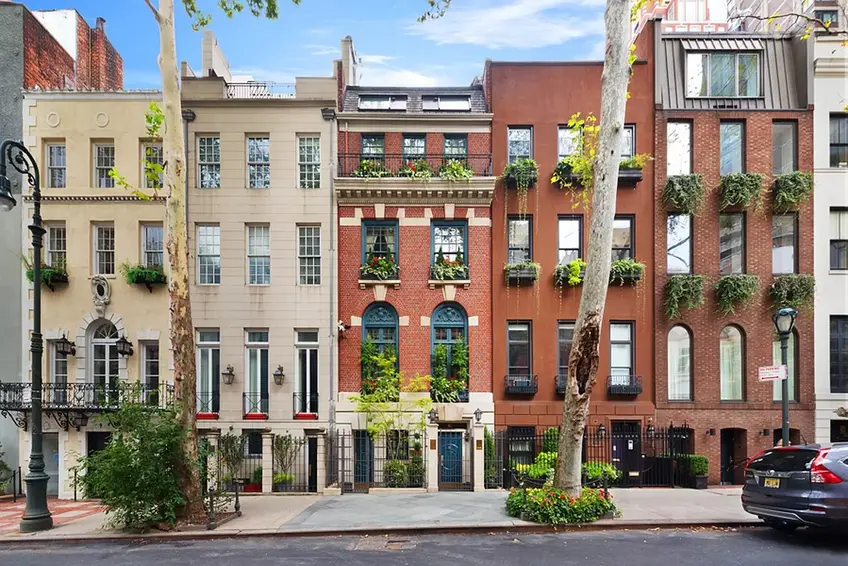 163 East 64th Street, # (Leslie J Garfield & Co Inc)
163 East 64th Street, # (Leslie J Garfield & Co Inc)
While New York City is world-famous for its skyscrapers, yet the city's charm is equally defined by its historic townhouses and brownstones, many dating back to the 19th century. These residences not only offer a glimpse into the city's past but also showcase a rich tapestry of architectural styles that evolved over decades.
Throughout these periods, the ubiquitous brownstone became a staple in New York's residential architecture. Contrary to popular belief, "brownstone" refers to the sandstone material used for facades rather than a specific architectural style. These structures often incorporated elements from various architectural styles, including Italianate and Neo-Grec, and are characterized by their warm, reddish-brown exteriors and iconic stoops leading to their parlor floors.
Fortunately, one does not need a degree in architecture to enjoy the city's townhouses. Understanding their exterior nuances enriches the experience of strolling through our cherished neighborhoods. Below we take a look at two dozen 19th-century townhouses on the market now of varying architectural styles.
Throughout these periods, the ubiquitous brownstone became a staple in New York's residential architecture. Contrary to popular belief, "brownstone" refers to the sandstone material used for facades rather than a specific architectural style. These structures often incorporated elements from various architectural styles, including Italianate and Neo-Grec, and are characterized by their warm, reddish-brown exteriors and iconic stoops leading to their parlor floors.
Fortunately, one does not need a degree in architecture to enjoy the city's townhouses. Understanding their exterior nuances enriches the experience of strolling through our cherished neighborhoods. Below we take a look at two dozen 19th-century townhouses on the market now of varying architectural styles.
In this article:
Federal and Neo-Federal Style
 Cher's house from 'Moonstruck,' Currently, Amy Schumer owns this landmarked Federal-style townhouse in Brooklyn Heights
Cher's house from 'Moonstruck,' Currently, Amy Schumer owns this landmarked Federal-style townhouse in Brooklyn Heights
In the decades following the Revolutionary War, New York City experienced a building boom that led to the construction of rowhouses to rebuild after the Great Fire of 1776 and to accommodate the rapidly growing city. These structures, known as Federal-style rowhouses, were influenced by English Georgian architecture and the classical tradition.
Typically built between 1790 and 1835, they featured red brick facades laid in Flemish bond, high peaked roofs with dormer windows, and delicate wrought-iron details. Many had arched doorways adorned with fanlights and sidelights, reflecting the young nation's desire to convey elegance and refinement. While many of these historic homes have been lost to development, several still stand as testaments to early American urban residential design.
Typically built between 1790 and 1835, they featured red brick facades laid in Flemish bond, high peaked roofs with dormer windows, and delicate wrought-iron details. Many had arched doorways adorned with fanlights and sidelights, reflecting the young nation's desire to convey elegance and refinement. While many of these historic homes have been lost to development, several still stand as testaments to early American urban residential design.
18 Commerce Street, # (Corcoran Group)
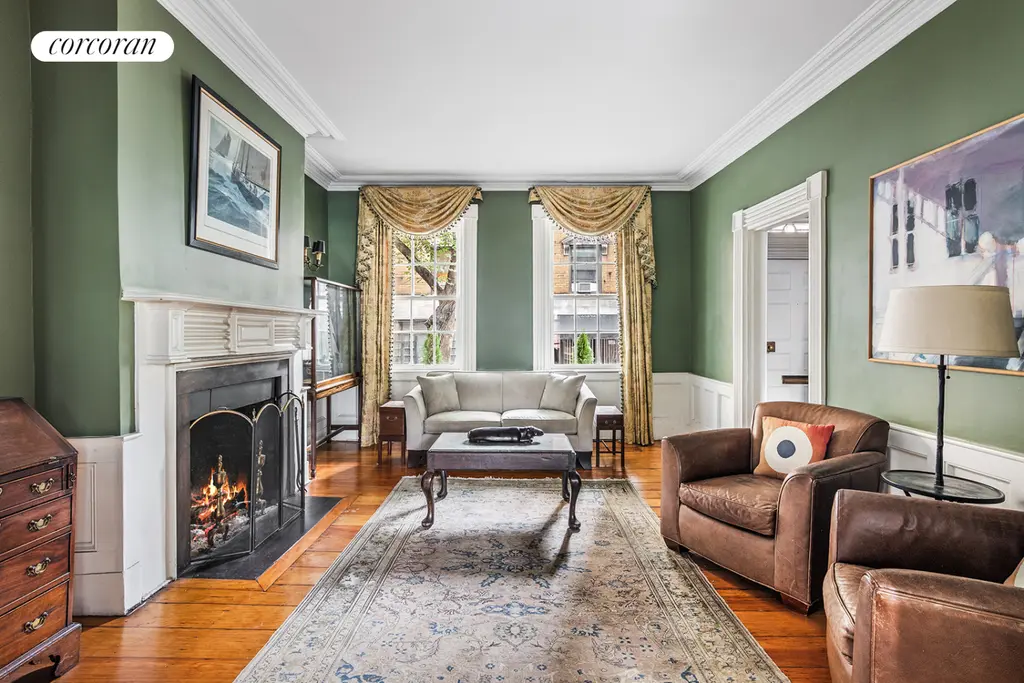
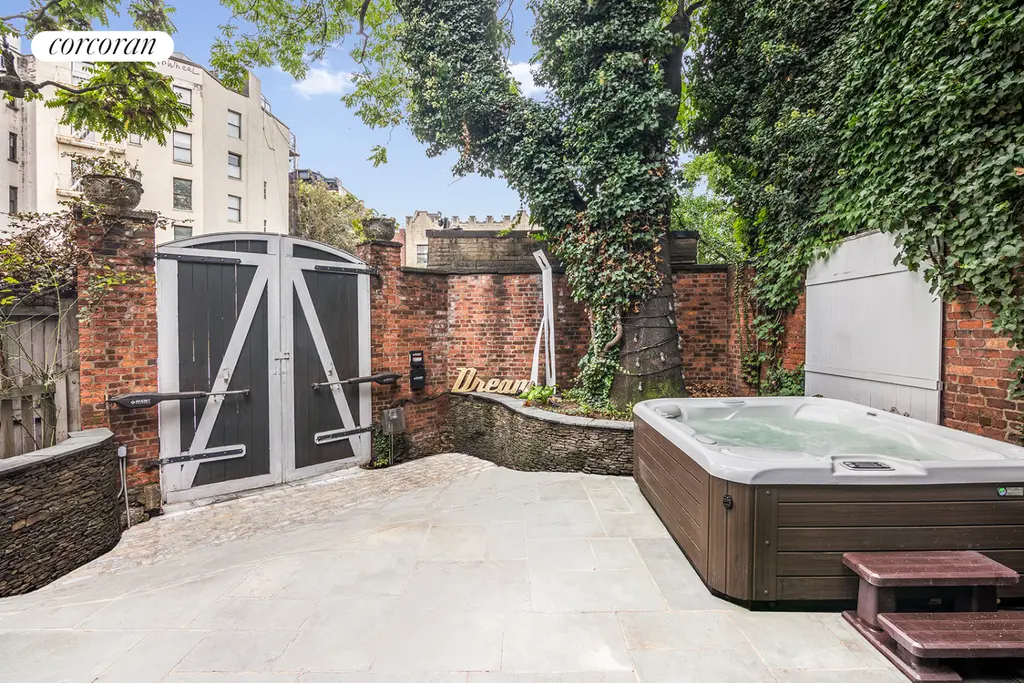
Greek Revival Style
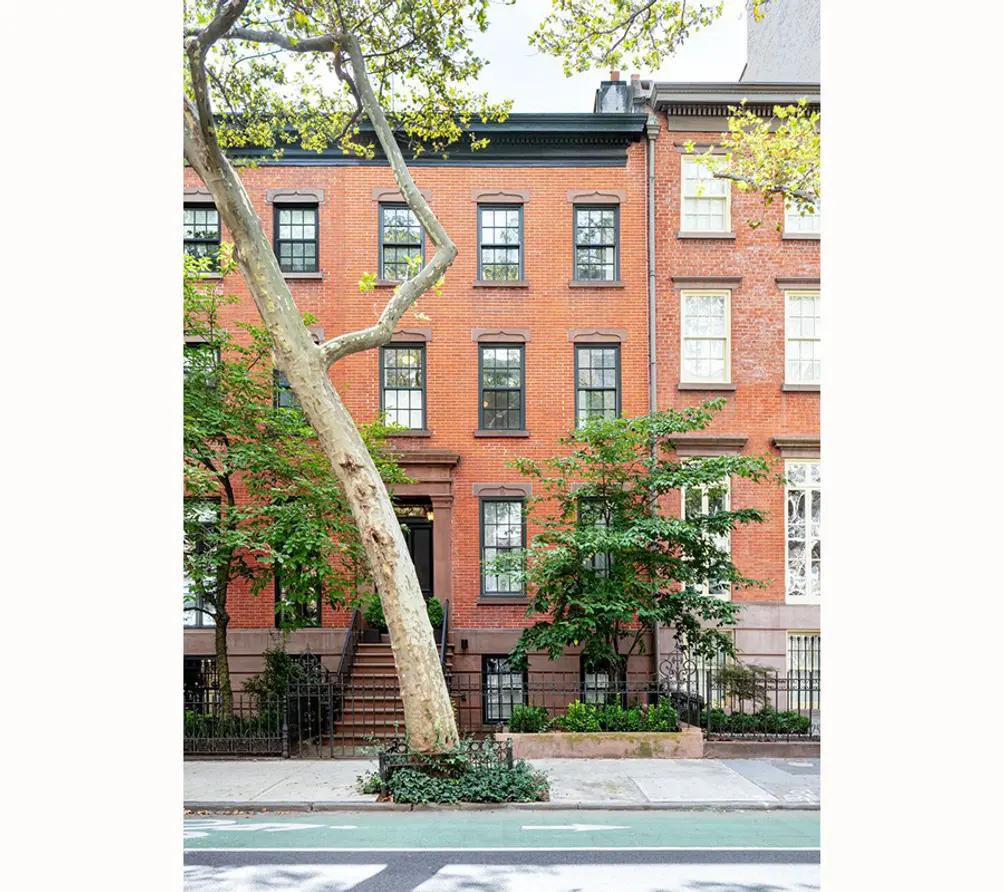 112 West 13th Street via Compass
112 West 13th Street via Compass
Between the 1830s and 1850s, New York City's architectural landscape transitioned from Federal-style rowhouses to the more monumental Greek Revival style. While red brick facades remained prevalent, new elements such as Ionic and Doric columns, along with Greek-themed ornamental details, became prominent. A typical Greek Revival rowhouse featured a brownstone base with red brick above. Notable examples include "The Row" on Washington Square, constructed in 1833, which showcases red brick with white marble trim.
125 West 11th Street, #TH
$25,000,000
Greenwich Village | Townhouse | 6+ Bedrooms, 5.5 Baths | 7,878 ft2
125 West 11th Street, # (Brown Harris Stevens Residential Sales LLC)
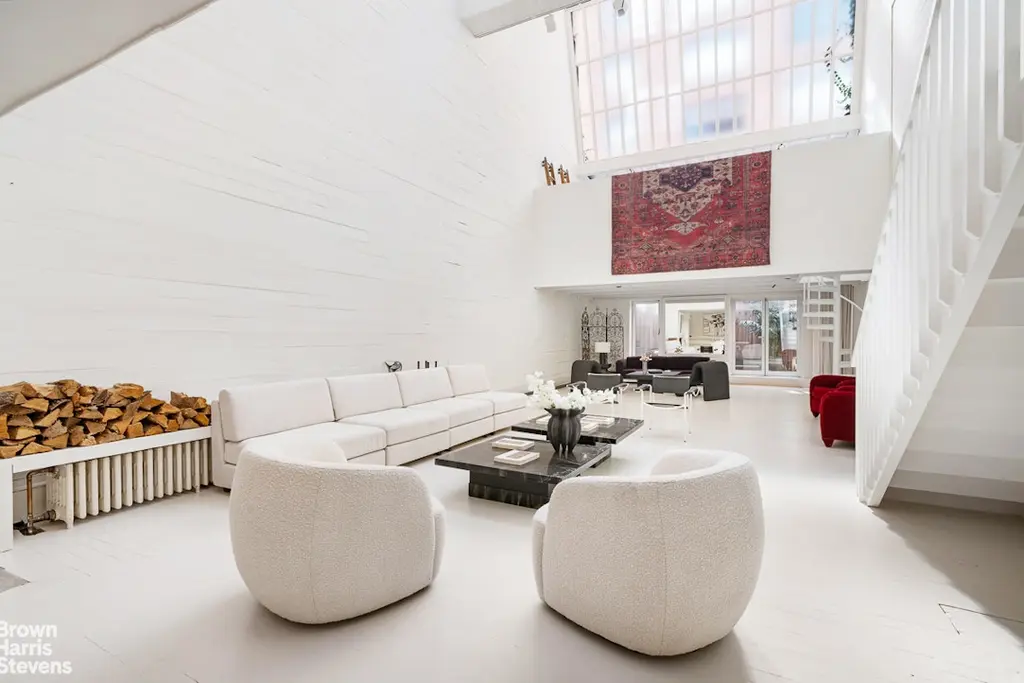
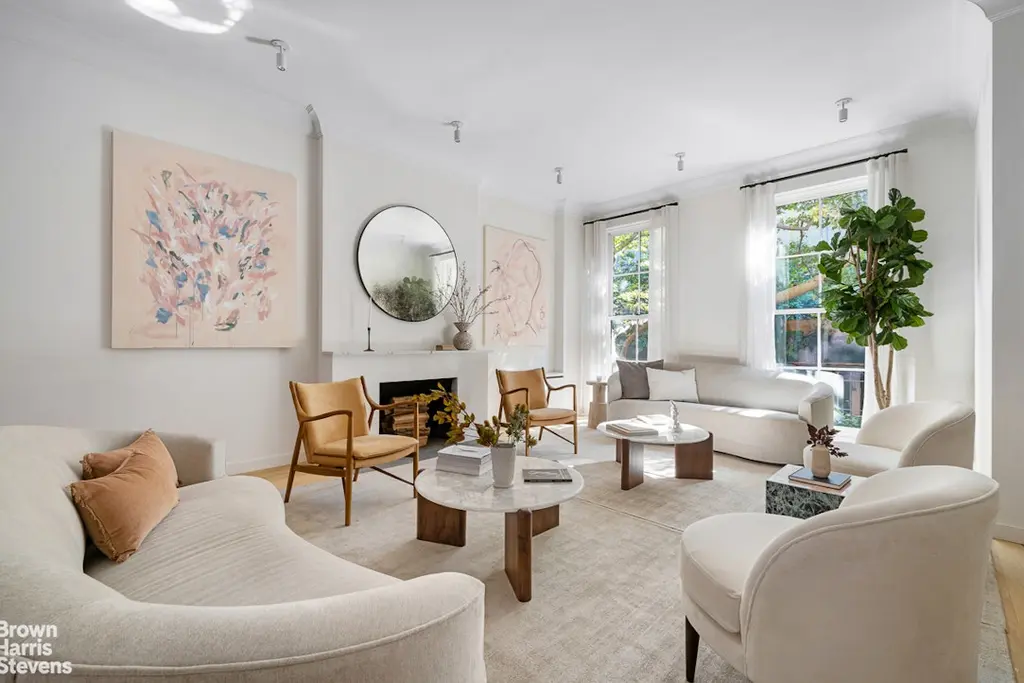
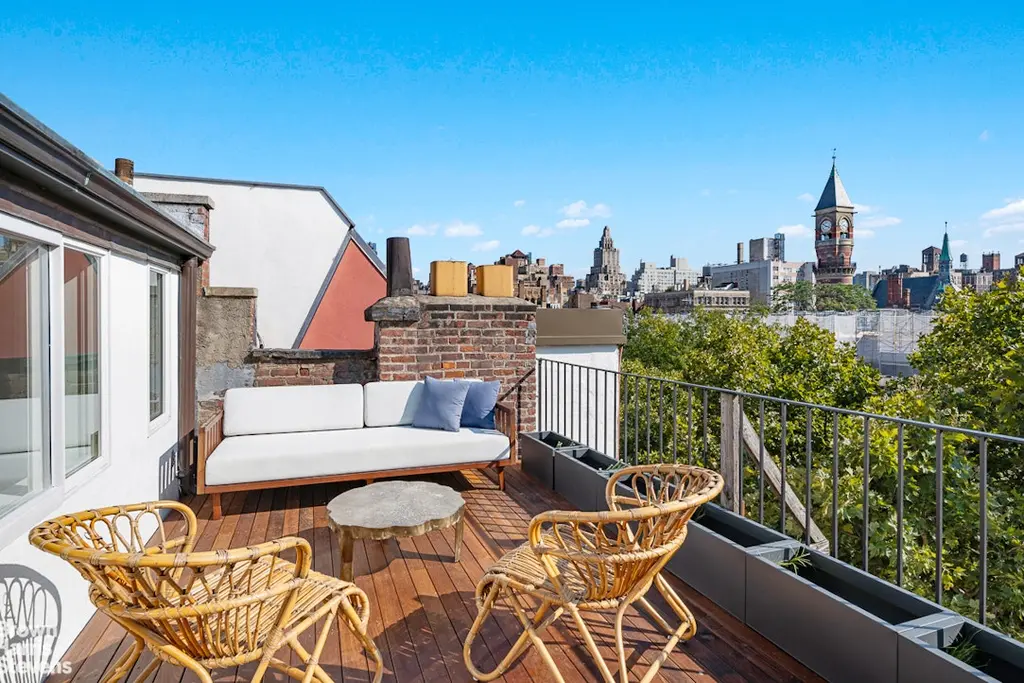
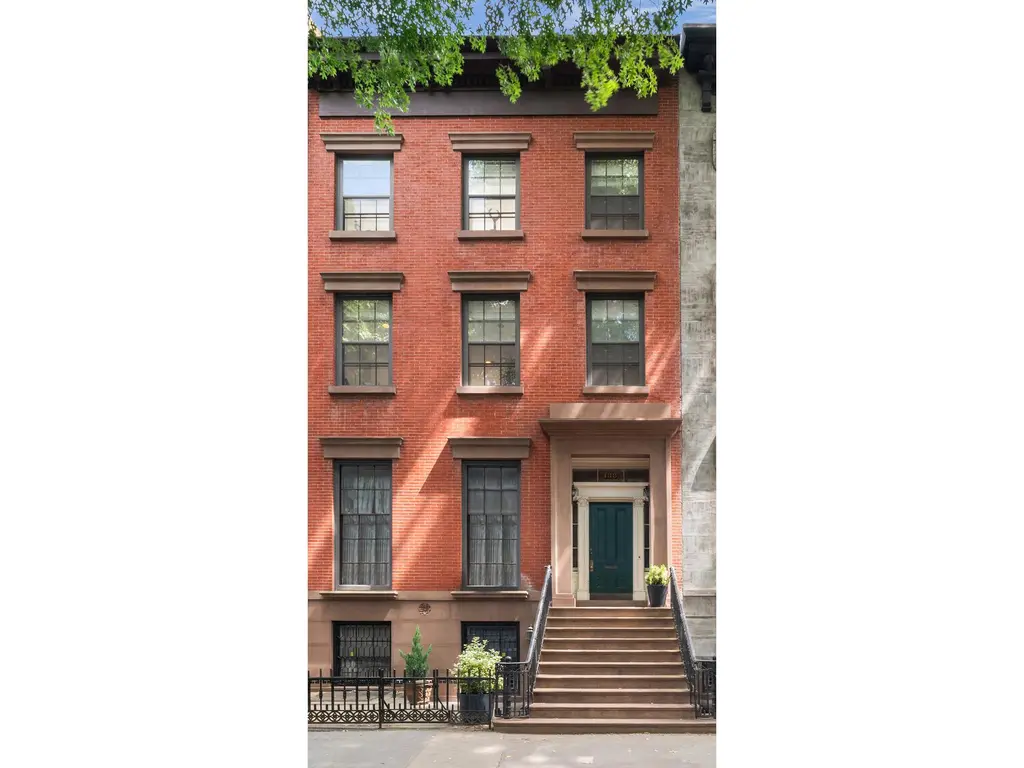
133 Pacific Street, #2 (Douglas Elliman Real Estate)
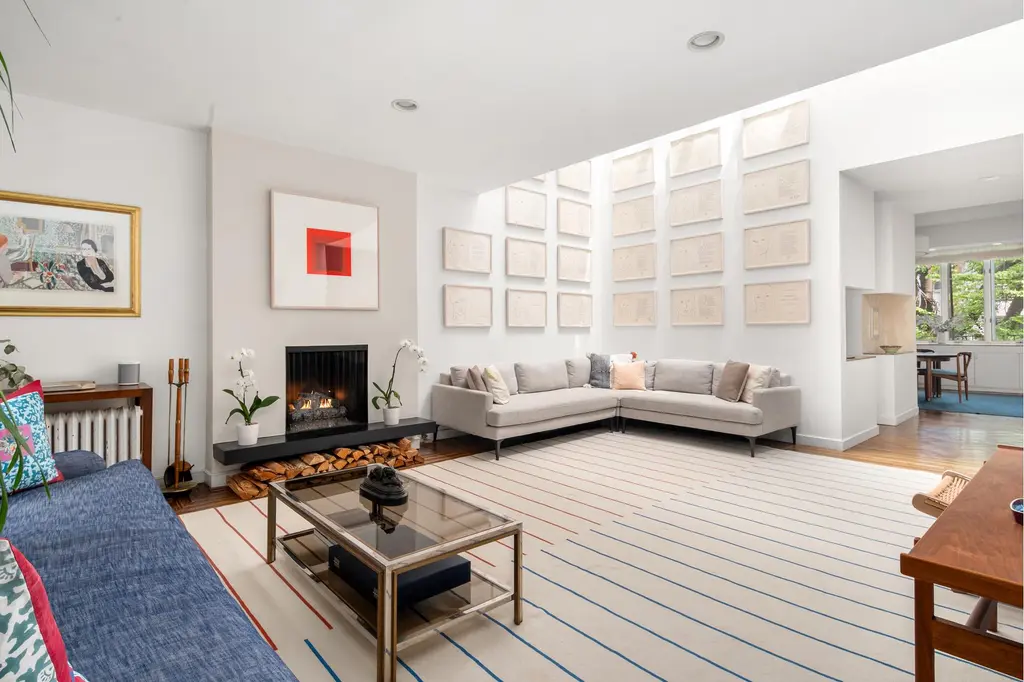
334 West 20th Street, # (Compass)
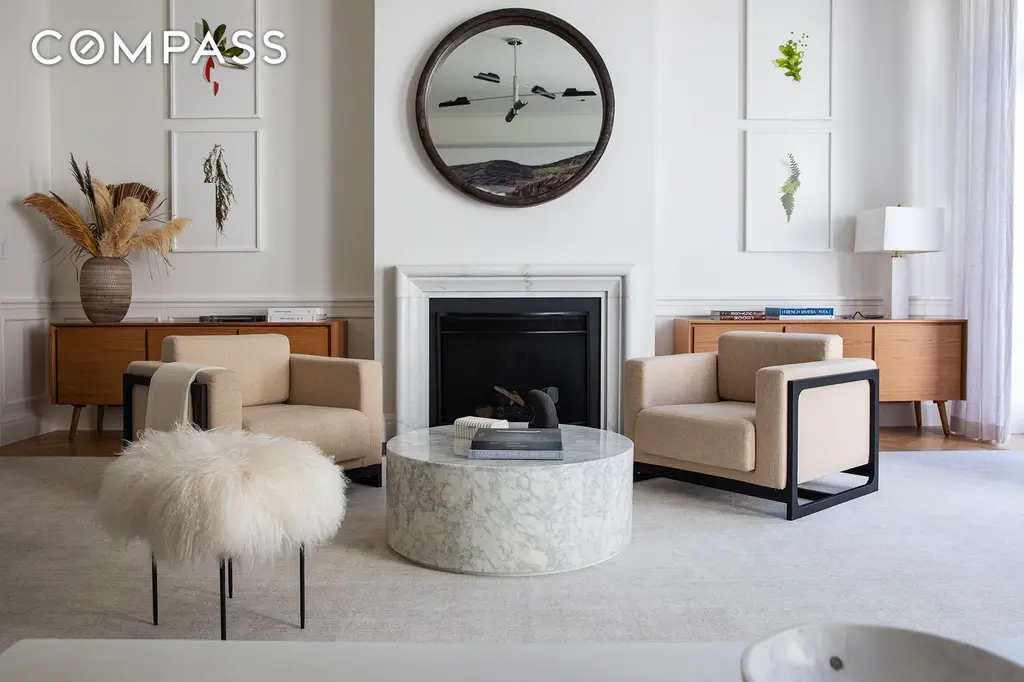
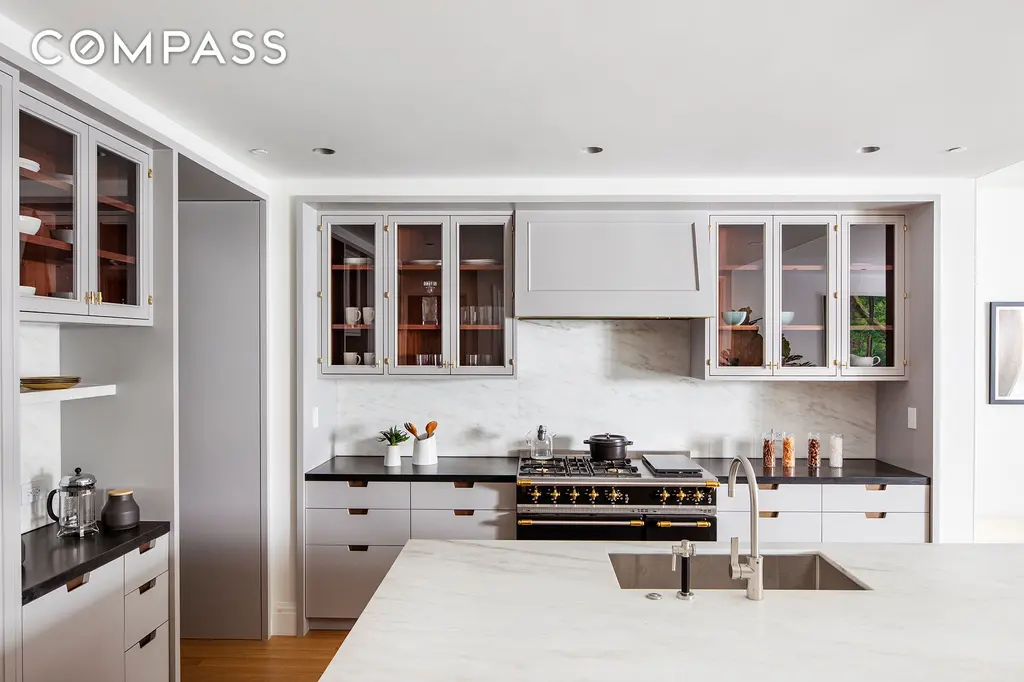
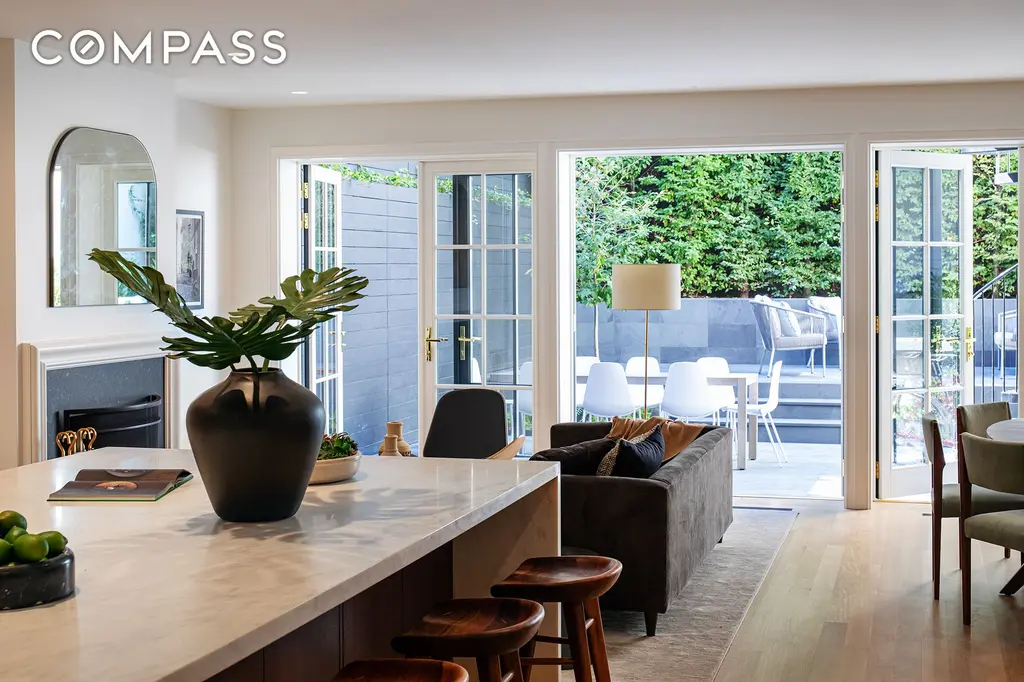
Gothic Revival Style
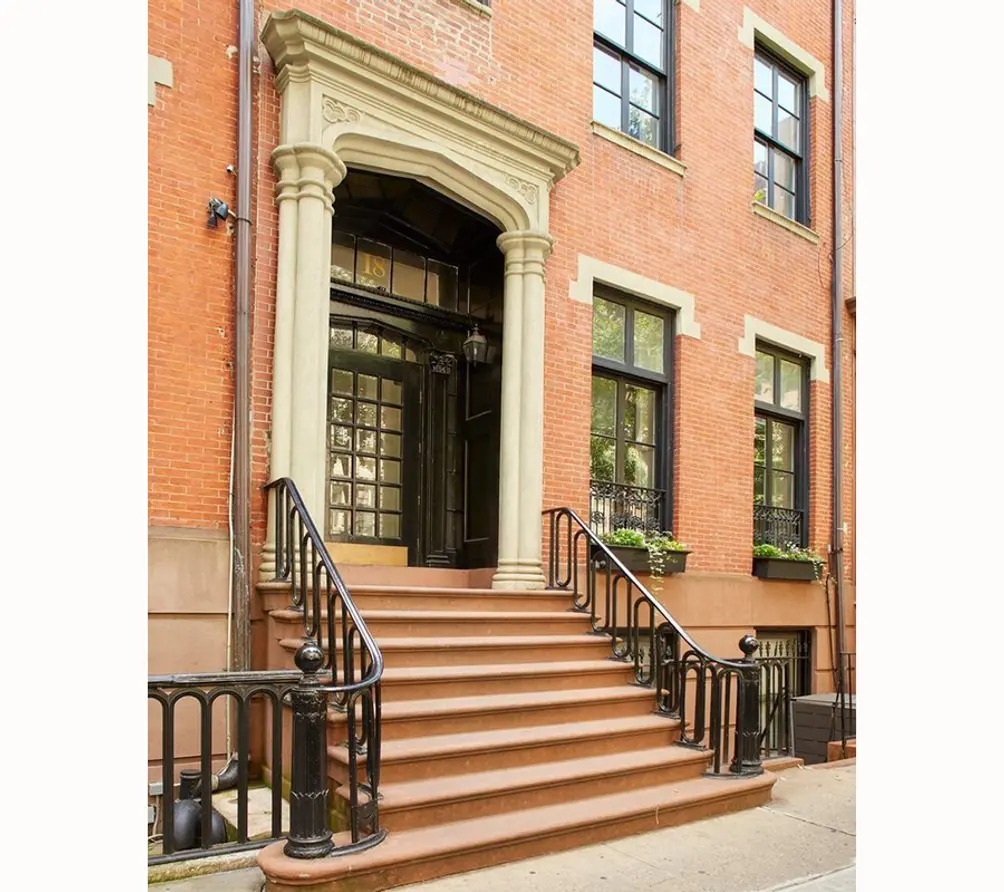 All images of 18 East 10th Street via Sotheby's International Realty
All images of 18 East 10th Street via Sotheby's International Realty
As Gothic Revival-style architecture came through in churches on the rise throughout New York before the 1850s (including the historic Trinity Church), it soon inspired residential design as well. While space constraints kept it from truly taking hold with rowhouses, its influence can be seen in details like ironwork in balconies and stoop railings.
313 West 102nd Street, #TH
$6,900,000 (-27.4%)
Riverside Dr./West End Ave. | Townhouse | 4 Bedrooms, 4.5 Baths | 5,100 ft2
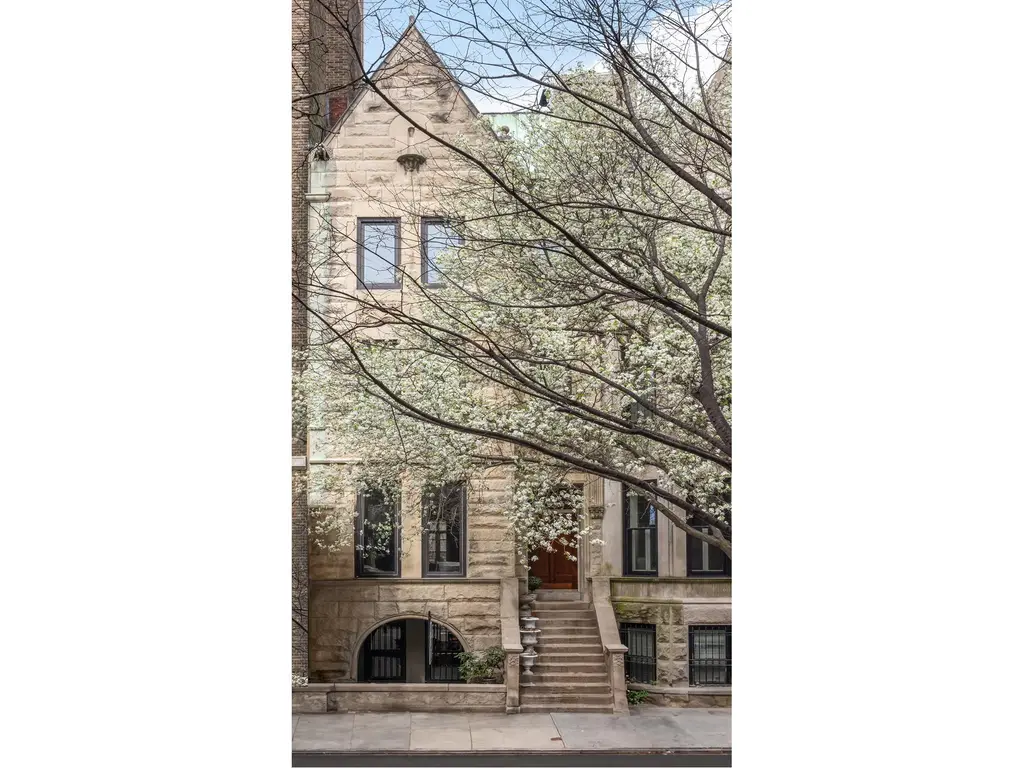
313 West 102nd Street, # (Douglas Elliman Real Estate)
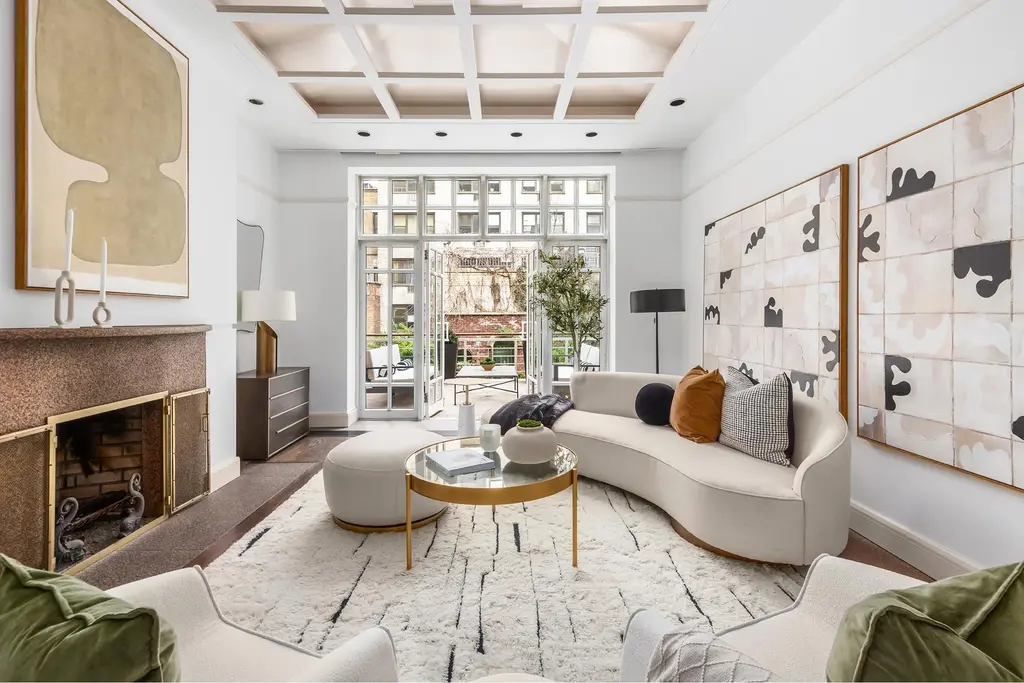
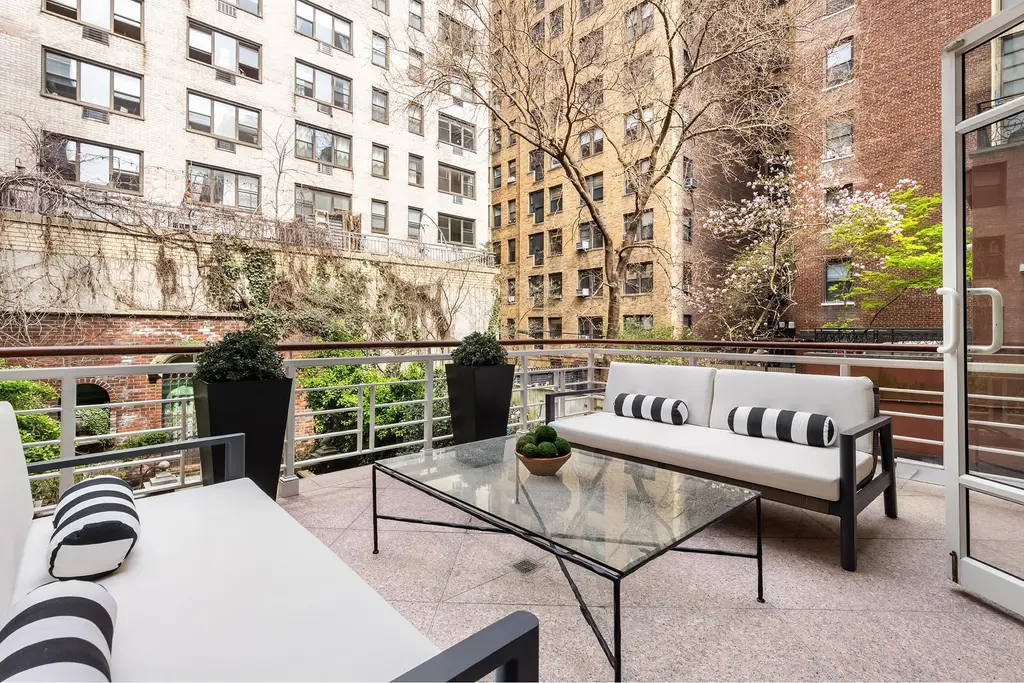
135 East 19th Street, #TH
$9,995,000 (-28.4%)
Gramercy Park | Townhouse | 6+ Bedrooms, 5.5 Baths | 6,798 ft2
135 East 19th Street, # (Compass)
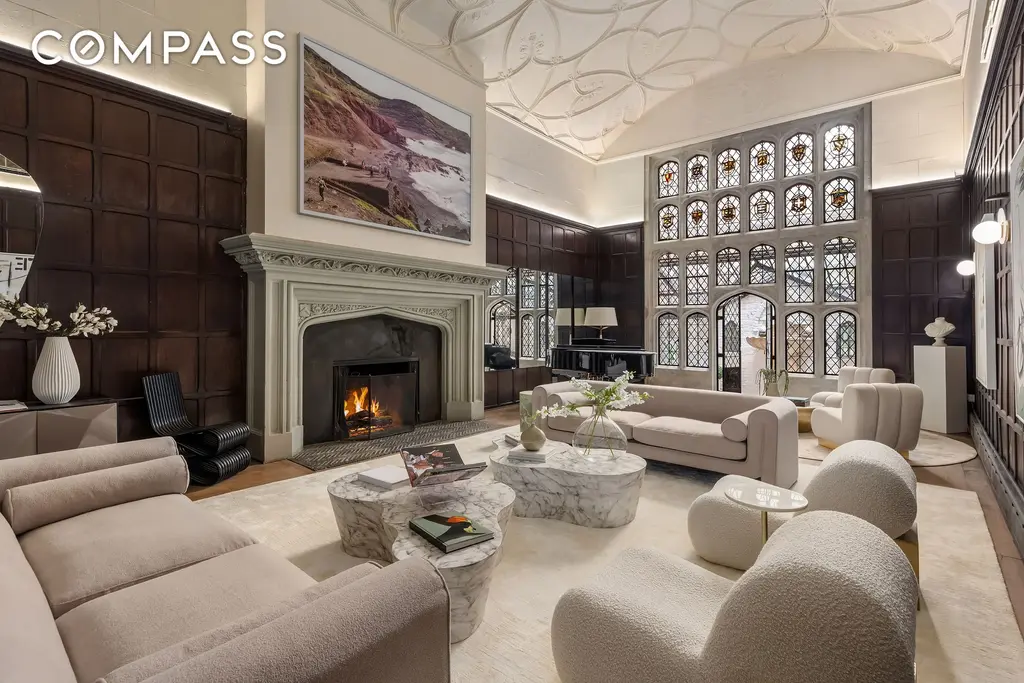
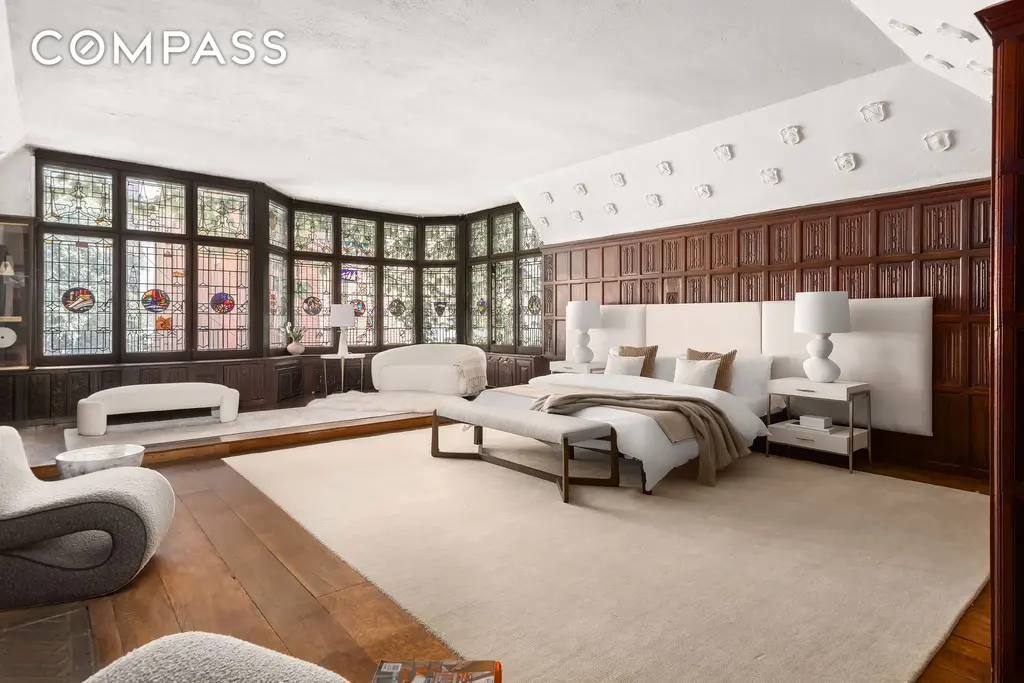
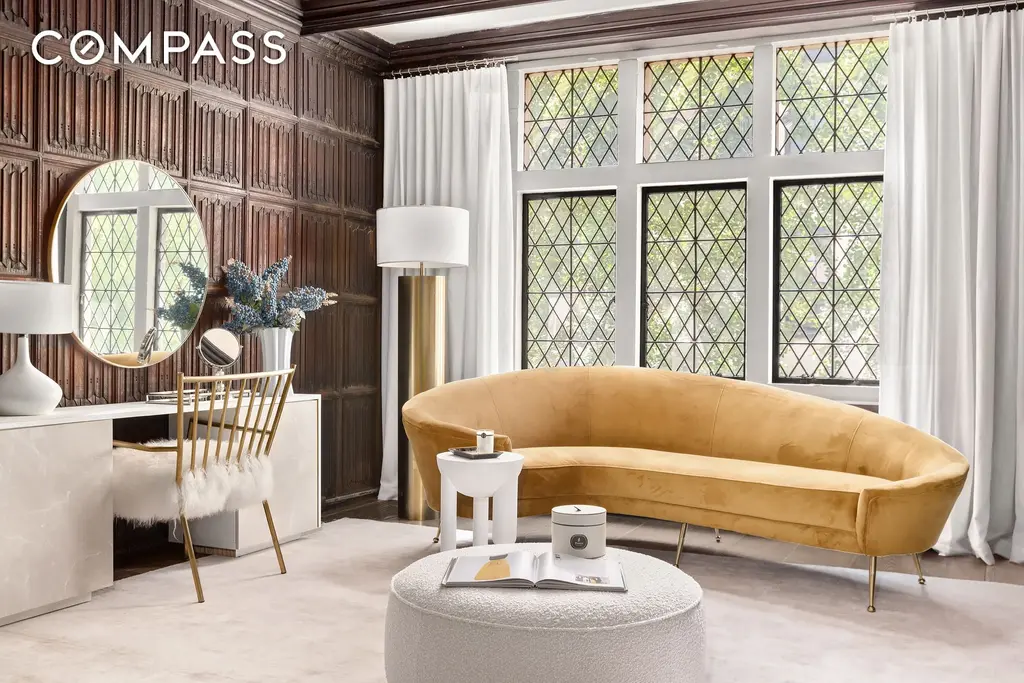
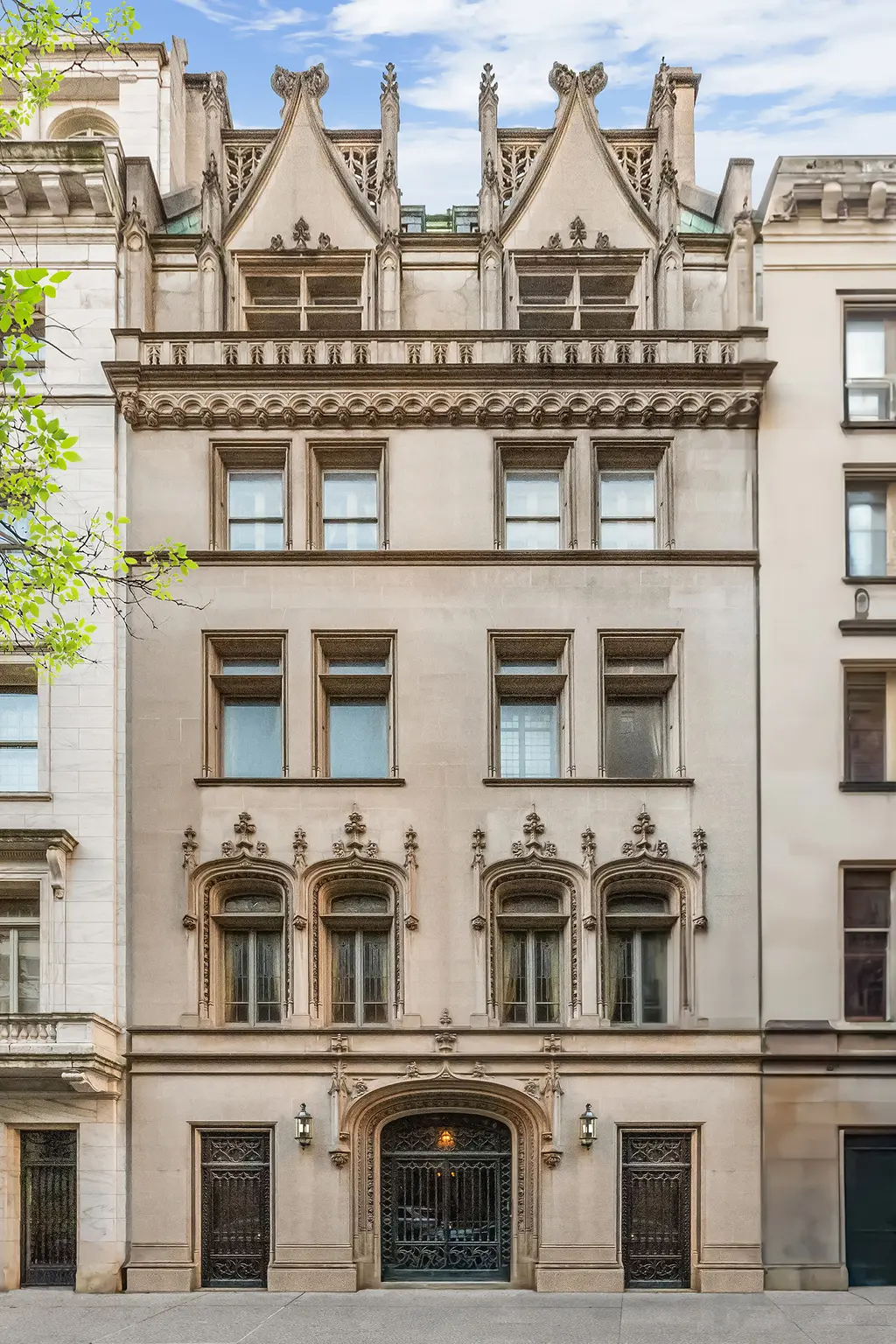
4 East 80th Street, # (Modlin Group LLC)
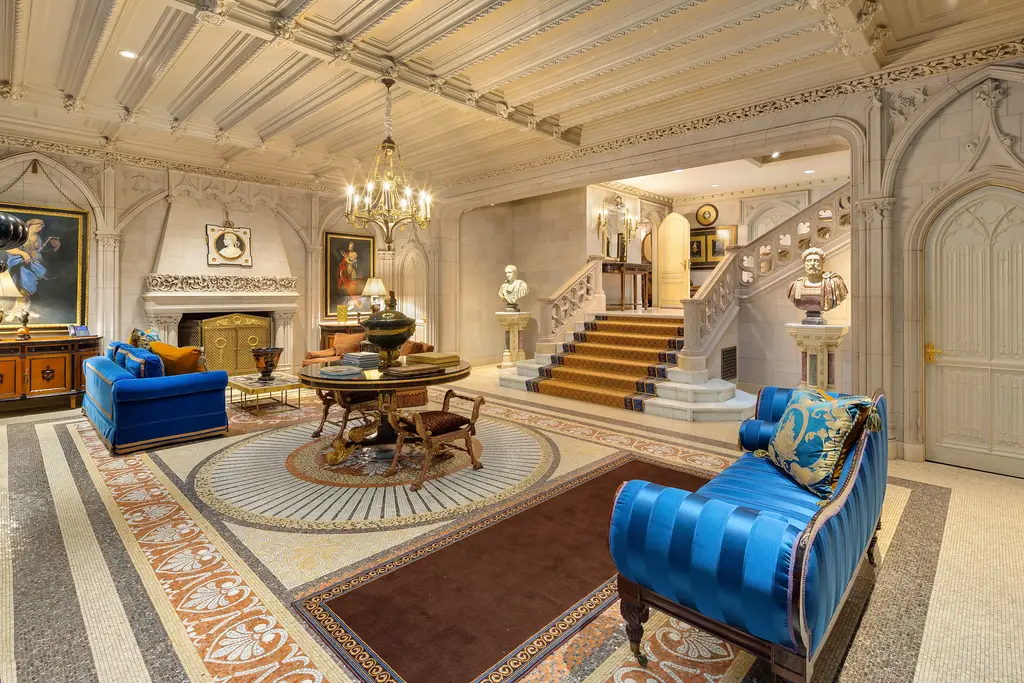
Italianate Style
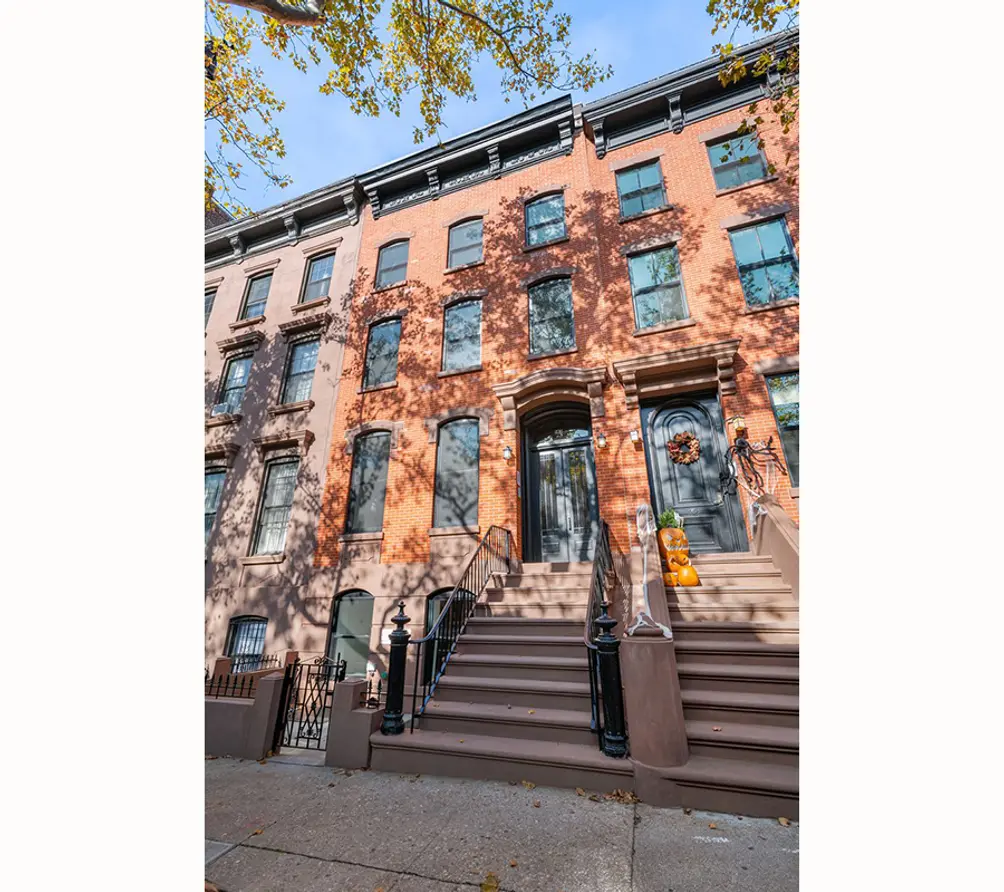 All images of 143 Summit Street via Compass
All images of 143 Summit Street via Compass
Between the 1850s and 1870s, New York City embraced the Italianate architectural style, drawing inspiration from the grand palazzi of Italy. This style was characterized by elegant curved lines, delicate ornamentation, and a harmonious symmetry that graced the city's streetscapes.
Builders favored local brownstone for facades, as its rich, earthy tones lent structures an aged and dignified appearance, aligning with the United States' desire to reflect European sophistication (we had an inferiority complex). The Italianate-style brownstones, typically two to four stories high, featured tall stoops, long windows, and majestic entries, creating a uniform and pleasing rhythm along their blocks.
Builders favored local brownstone for facades, as its rich, earthy tones lent structures an aged and dignified appearance, aligning with the United States' desire to reflect European sophistication (we had an inferiority complex). The Italianate-style brownstones, typically two to four stories high, featured tall stoops, long windows, and majestic entries, creating a uniform and pleasing rhythm along their blocks.
15 Saint Lukes Place, # (Compass)
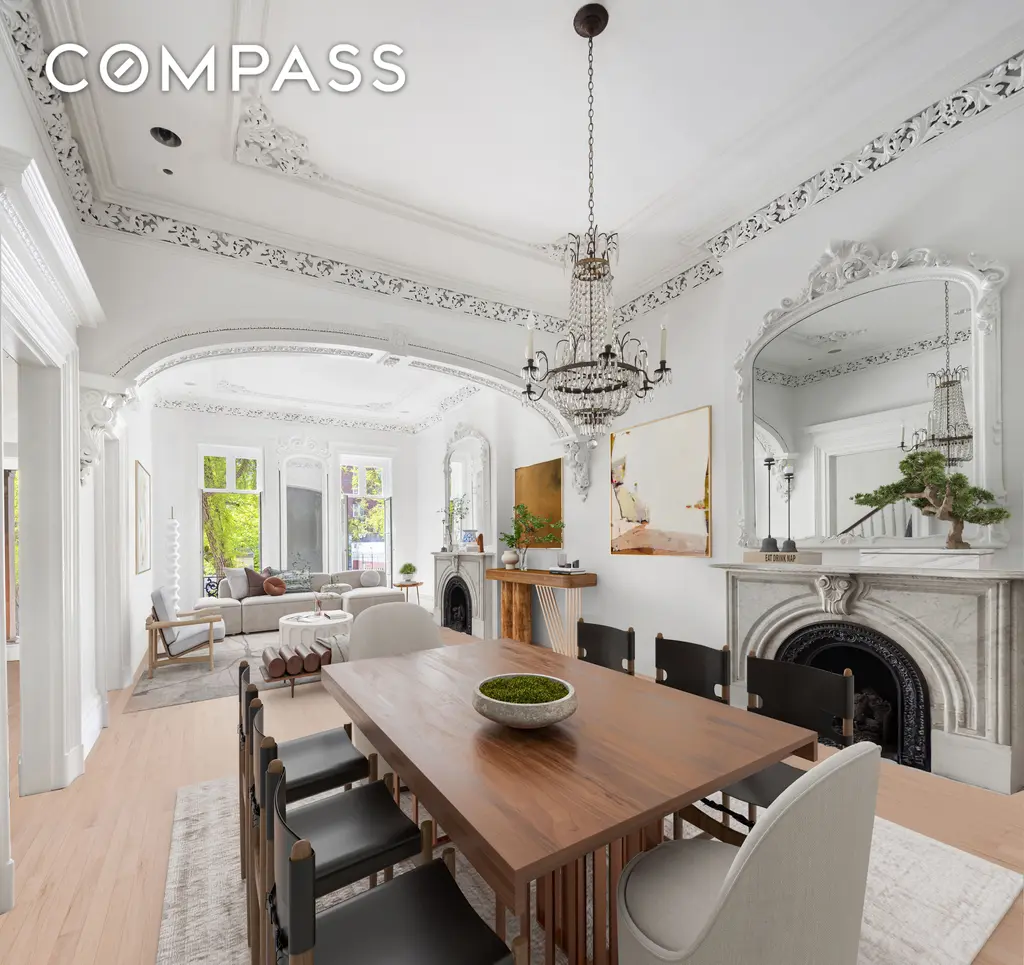
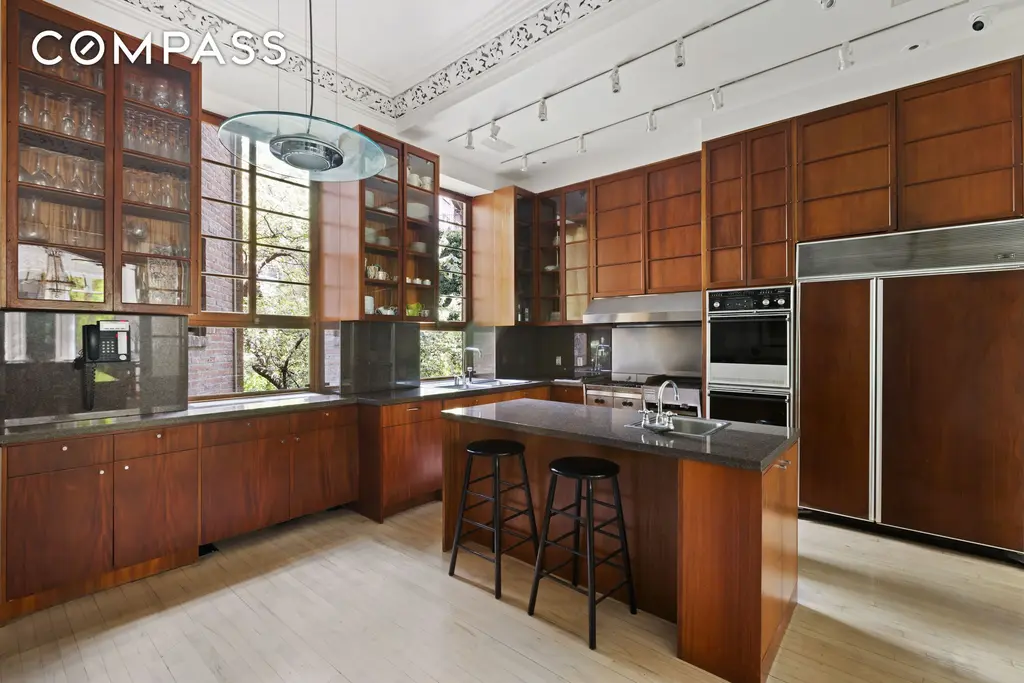
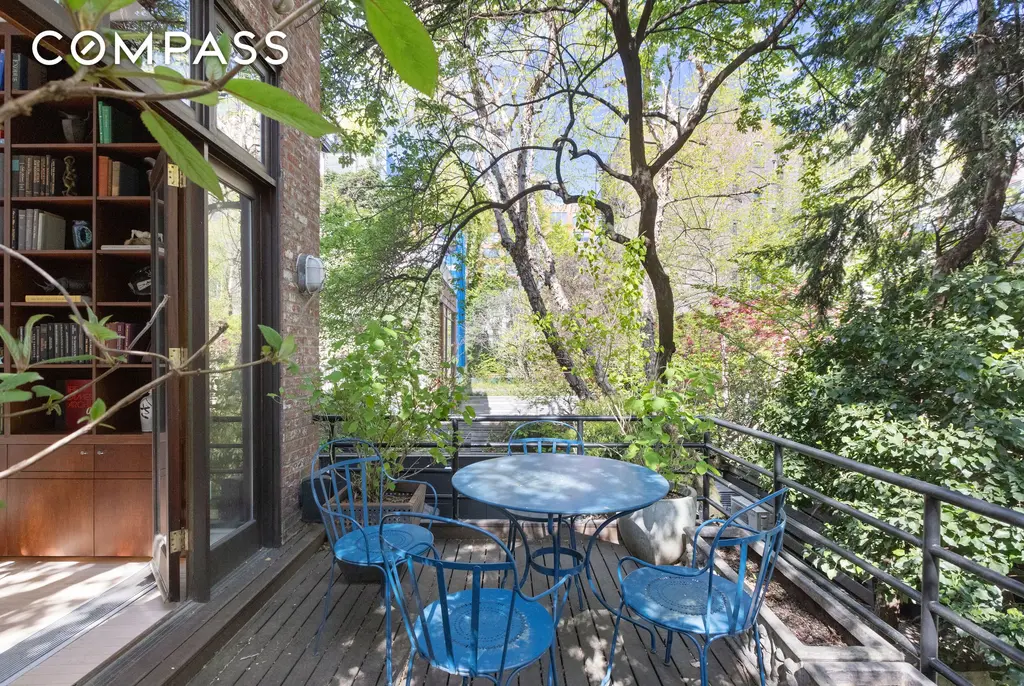
34 West 12th Street, #TH
$35,000,000
Greenwich Village | Townhouse | 5 Bedrooms, Unknown Baths | 7,373 ft2
34 West 12th Street, # (Sothebys International Realty)
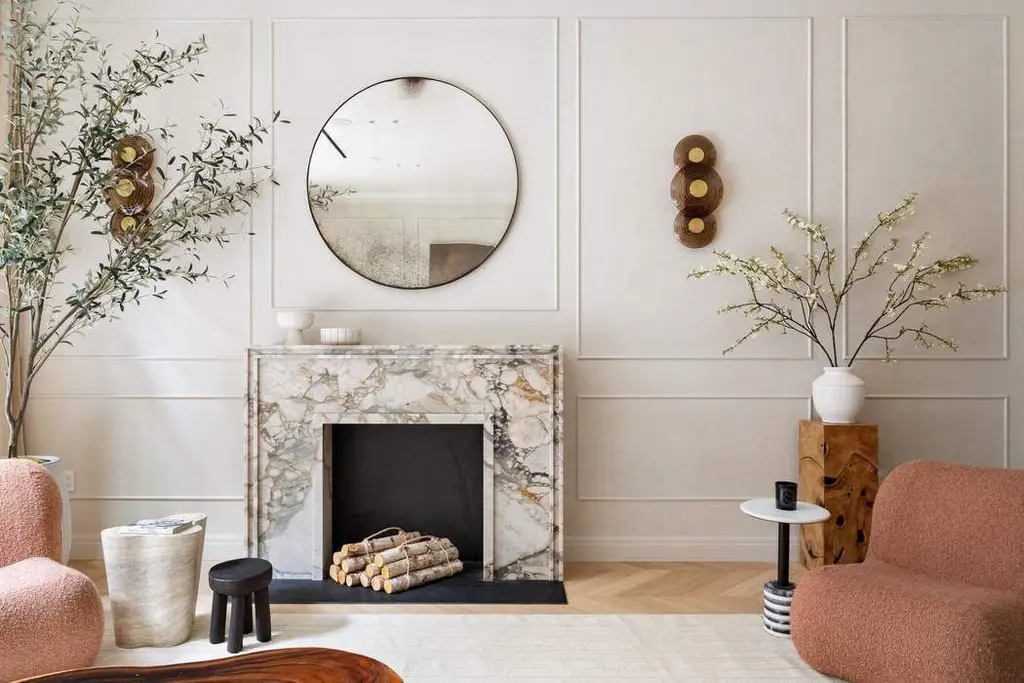
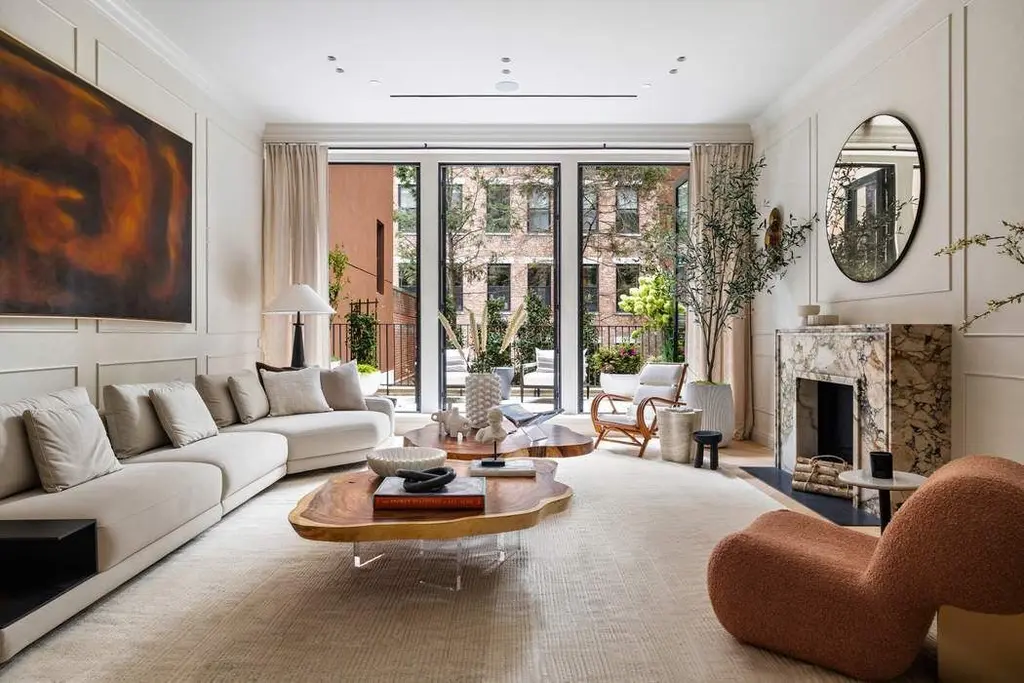
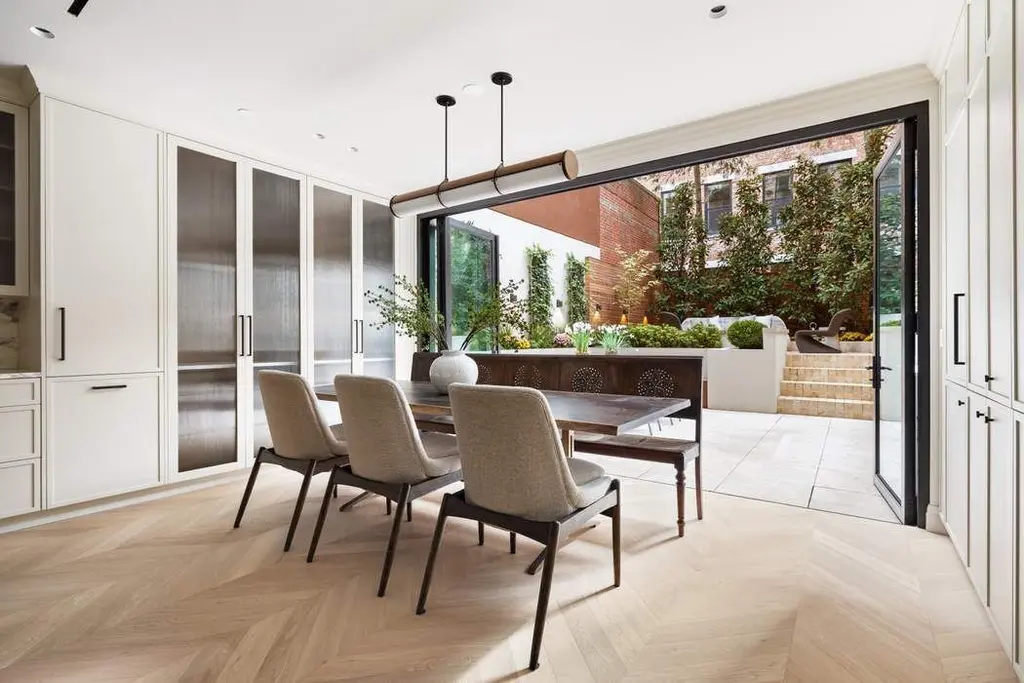
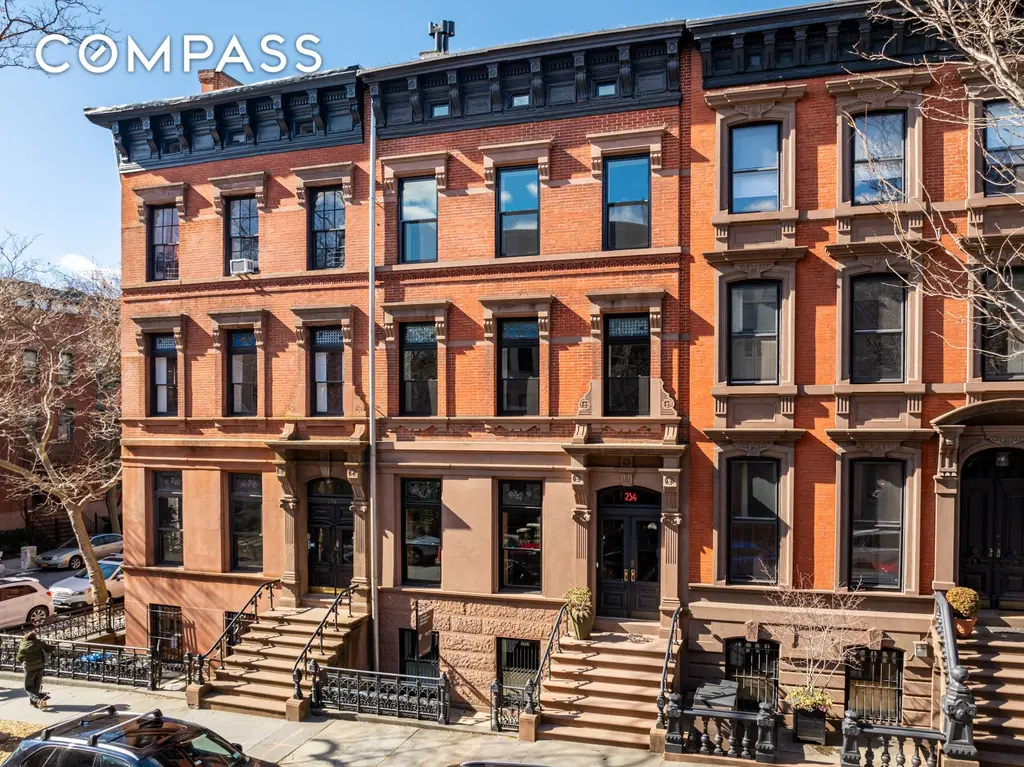
234 Clinton Street, # (Compass)
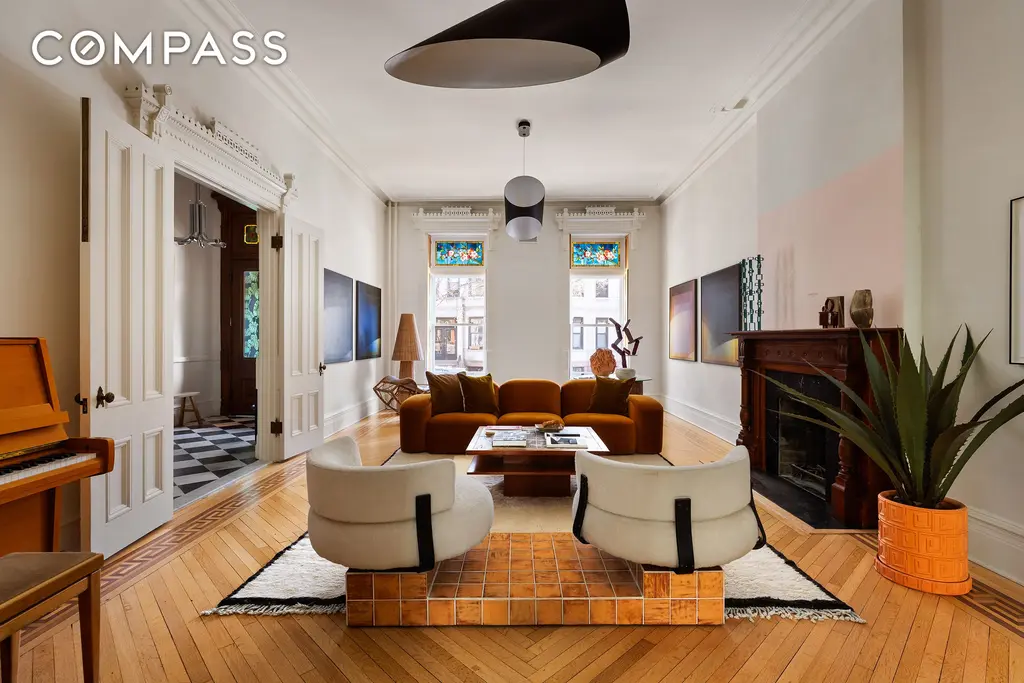
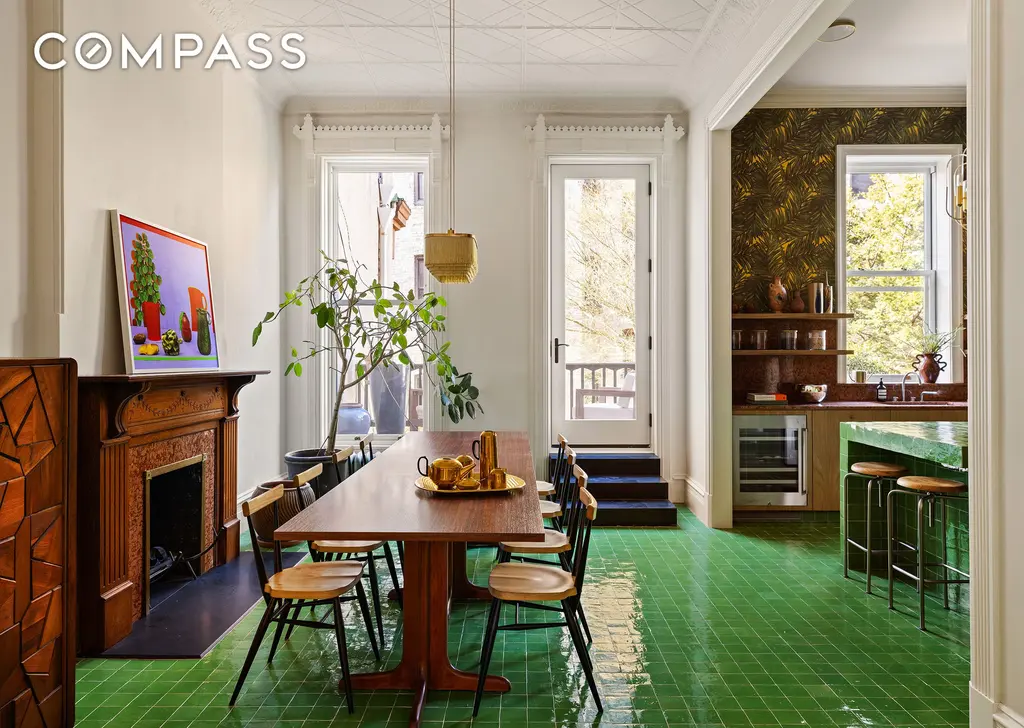
Second Empire Style
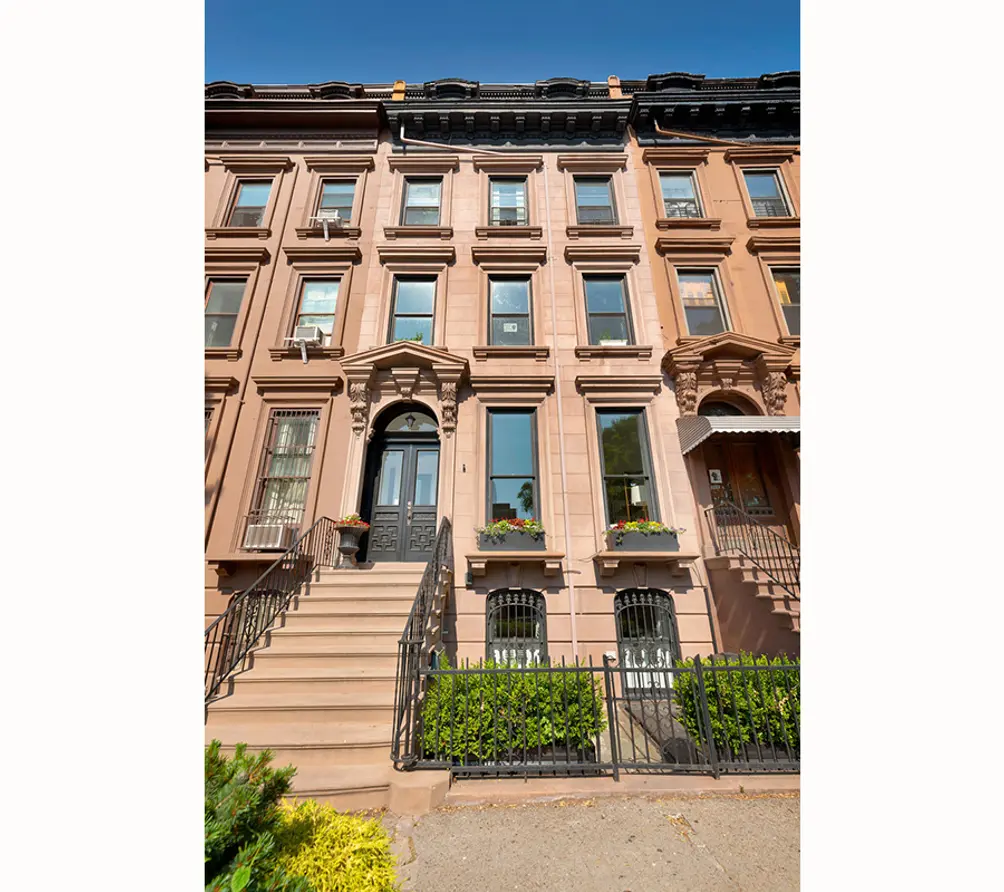 All images of 215 Clermont Avenue via Compass
All images of 215 Clermont Avenue via Compass
In the 1860s, New York City saw the emergence of the Second Empire architectural style, which, like the Italianate style, drew inspiration from European designs. This style is distinguished by its ornate curved windows and the distinctive mansard roofs, which not only added a unique aesthetic but also provided additional living space within the attic. A notable example of this architectural style can be found in the Fort Greene Historic District, where a row of these elegant brownstones graces the area around Fort Greene Park. These homes are typically three to four stories tall, feature intricate facades and elevated entrances. Unfortunately for us, they are rarely available.
225 East 62nd Street, #TH
$5,495,000 (-7.6%)
Lenox Hill | Townhouse | 4 Bedrooms, Unknown Baths | 2,850 ft2

225 East 62nd Street, # (Sothebys International Realty)
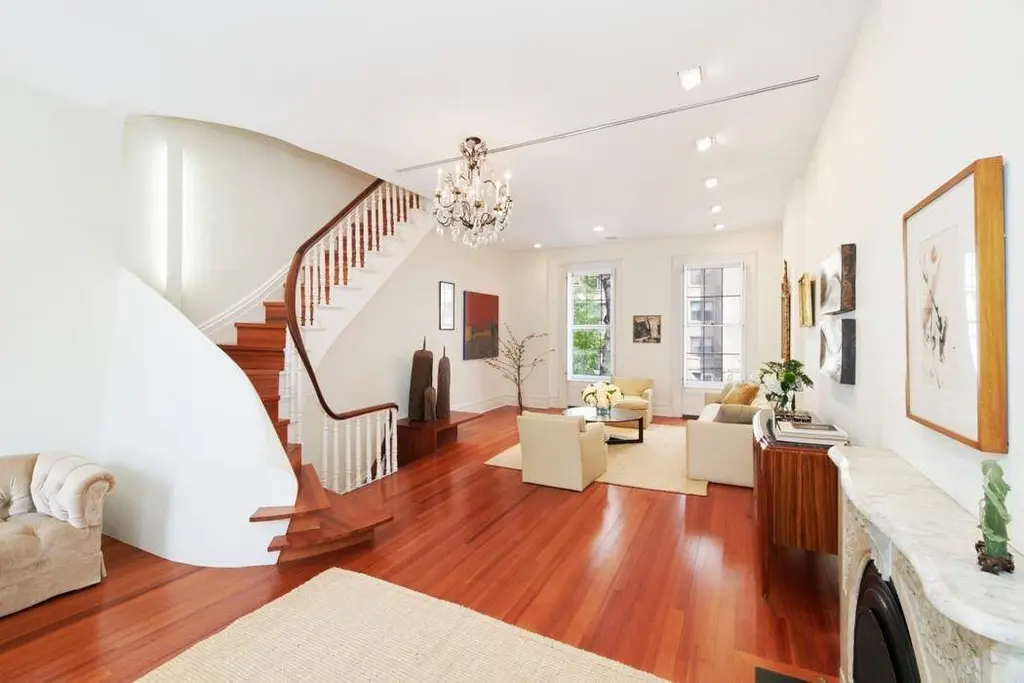
Neo-Grec Style
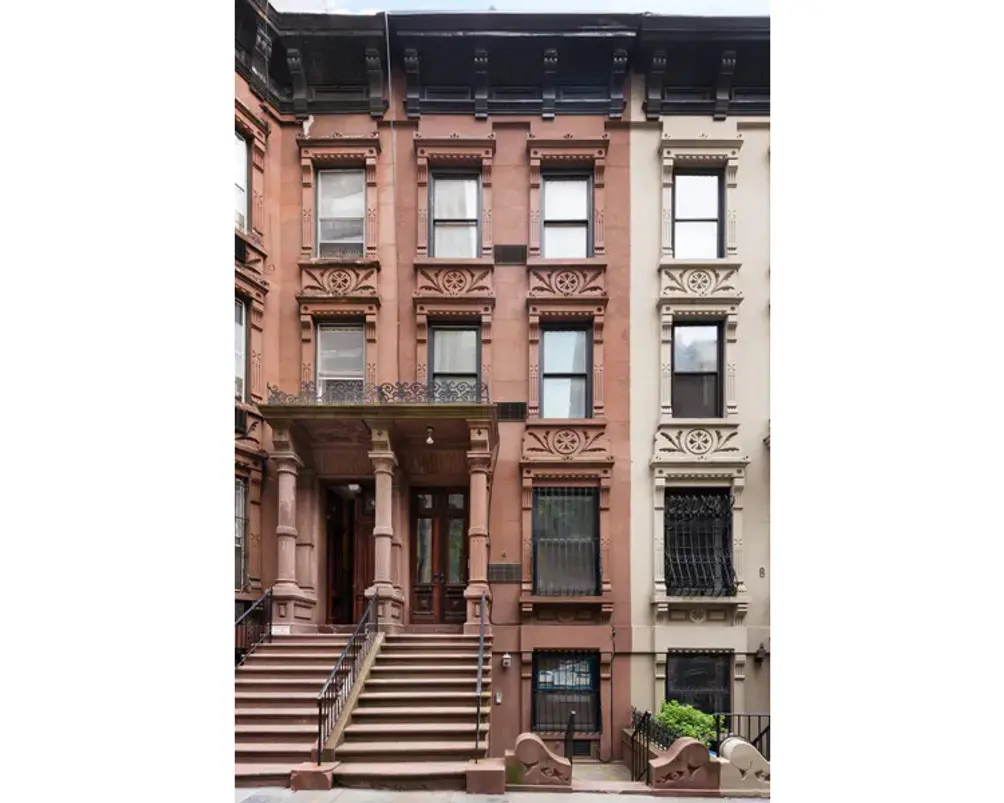 All images of 6 West 83rd Street via Leslie J. Garfield
All images of 6 West 83rd Street via Leslie J. Garfield
In the mid-1860s and 1870s, New York City's architectural landscape transitioned from the ornate curves of Italianate design to the more angular and linear aesthetics of the Neo-Grec style. This movement retained the use of brownstone facades but introduced sharper lines and incised detailing, reflecting a fascination with classical Greek forms. Neo-Grec structures often feature pronounced geometric ornamentation, stylized floral patterns, and robust cornices, creating a distinctive and cohesive streetscape.
274 Lenox Avenue, # (Brown Harris Stevens Residential Sales LLC)
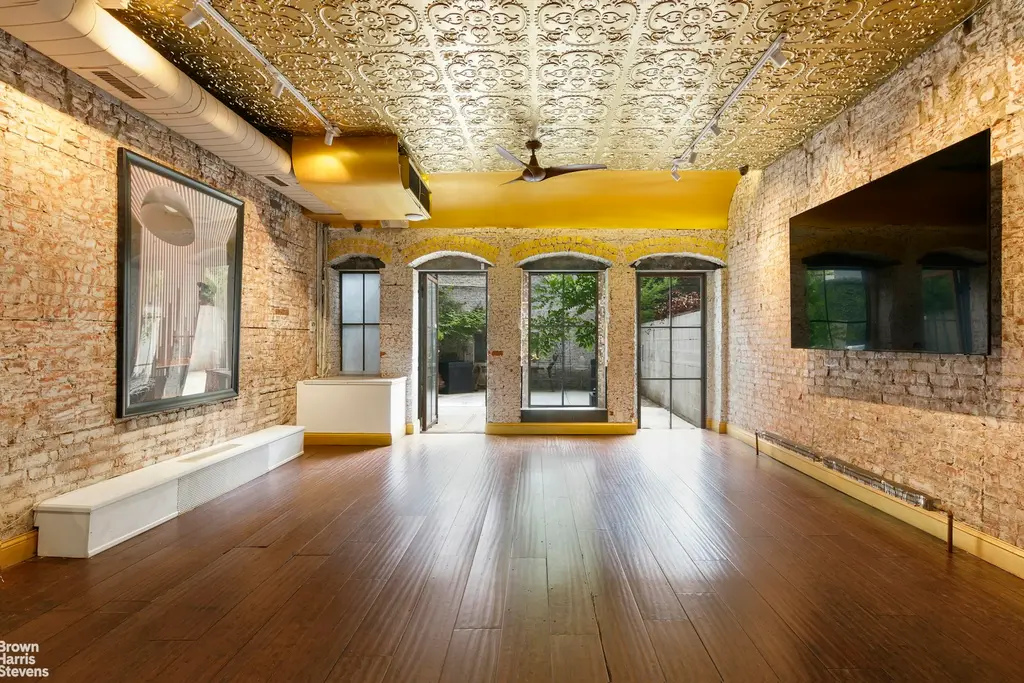
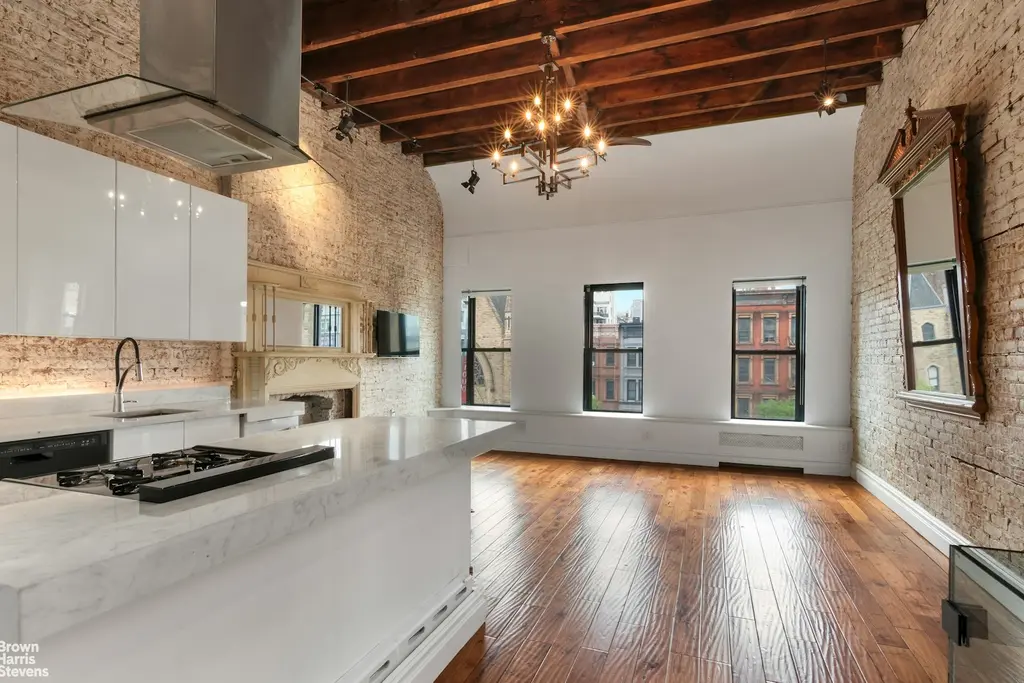
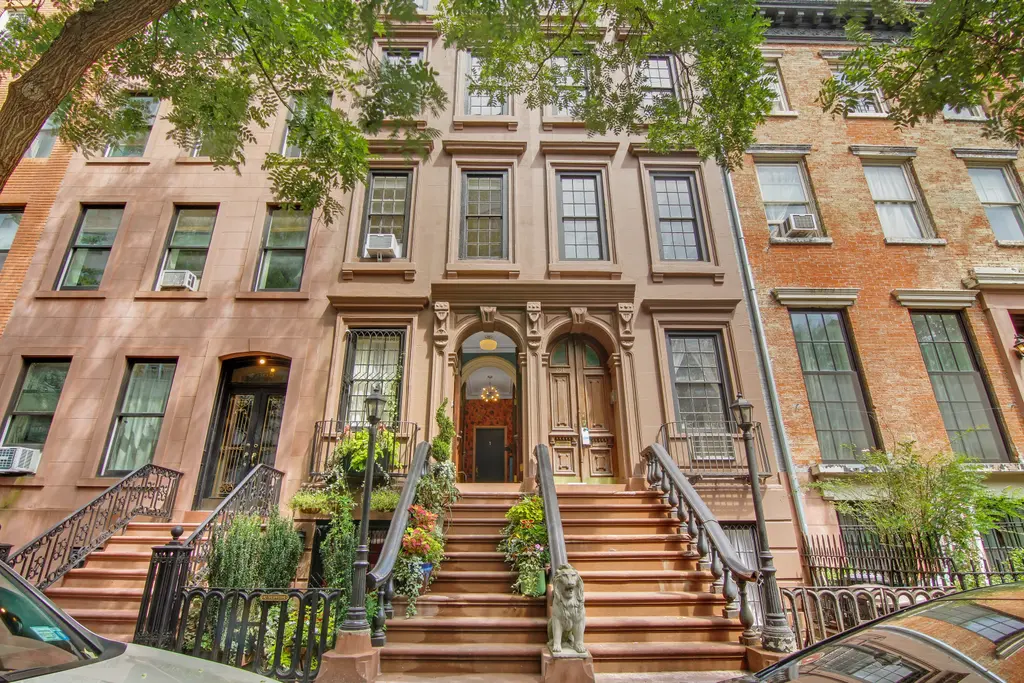
353 West 22nd Street, # (Serhant)
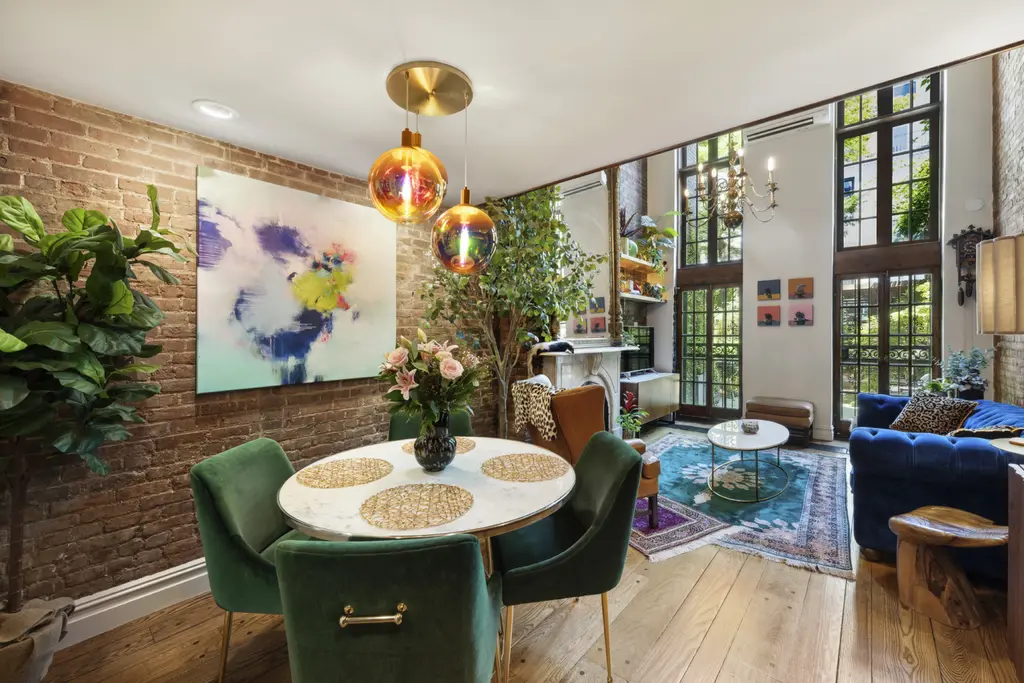
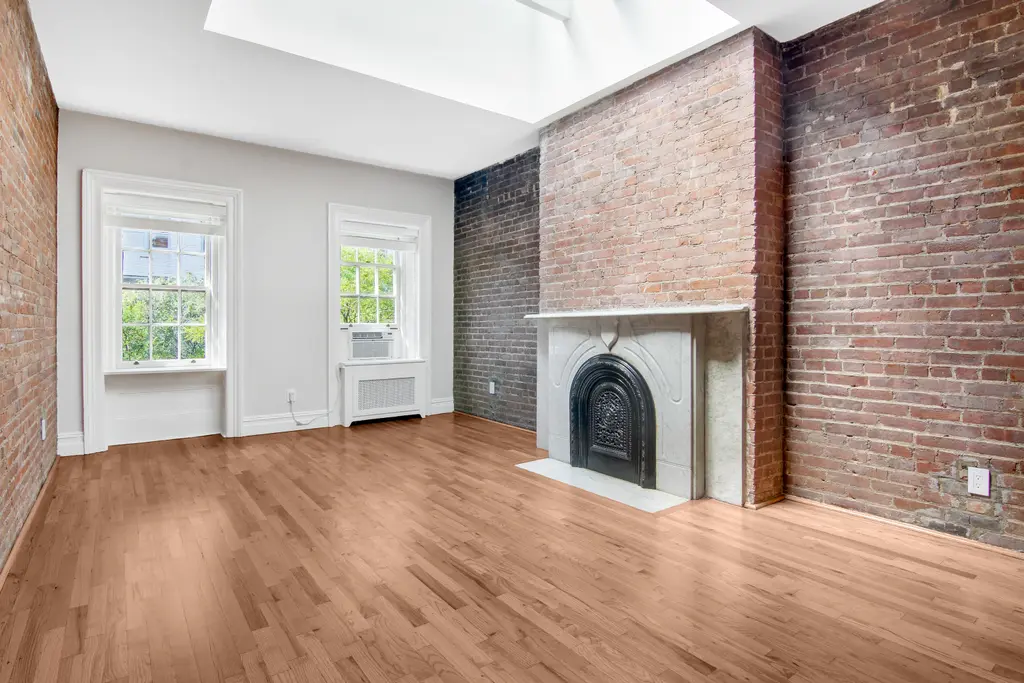
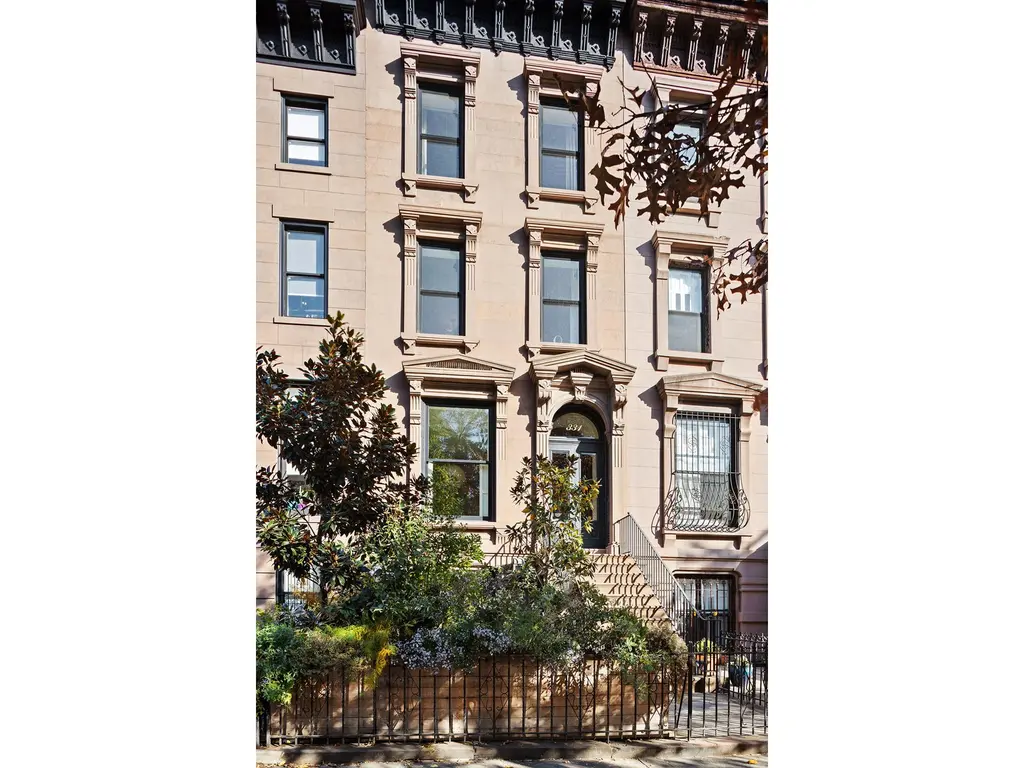
331 Washington Avenue, # (Douglas Elliman Real Estate)
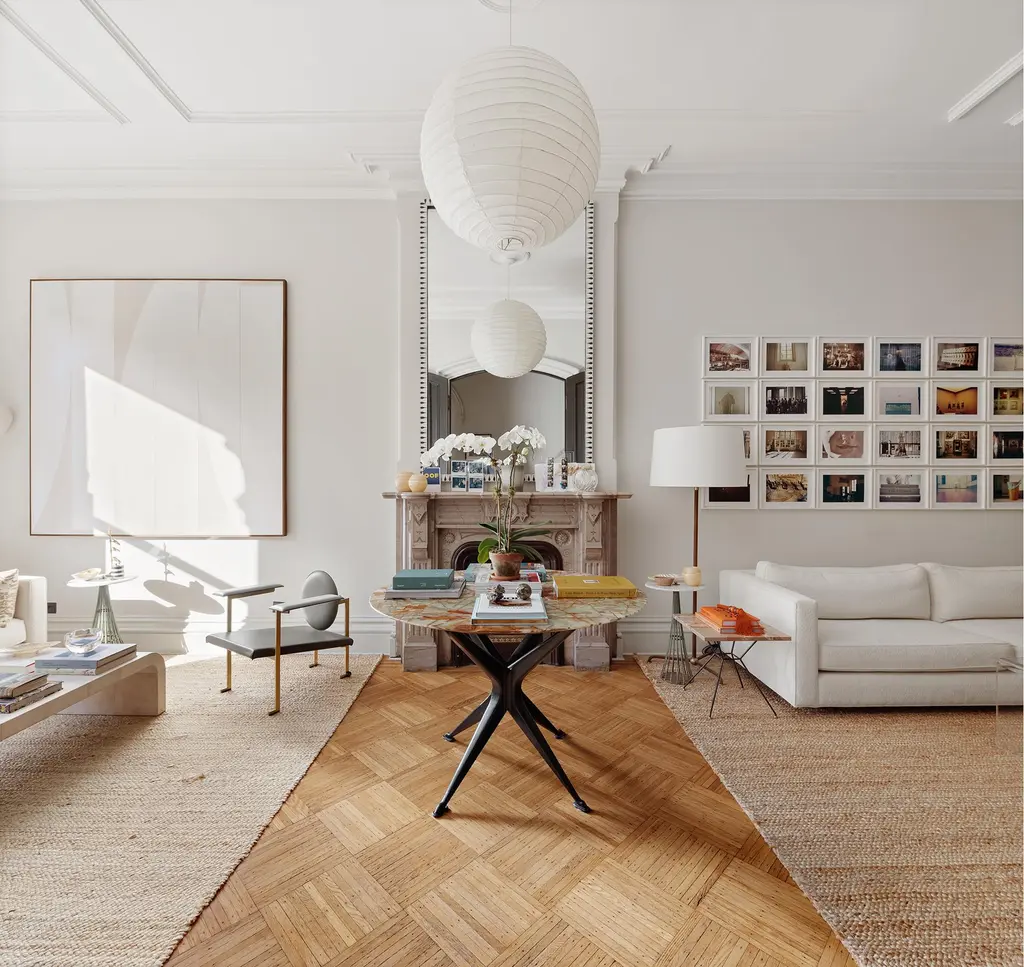
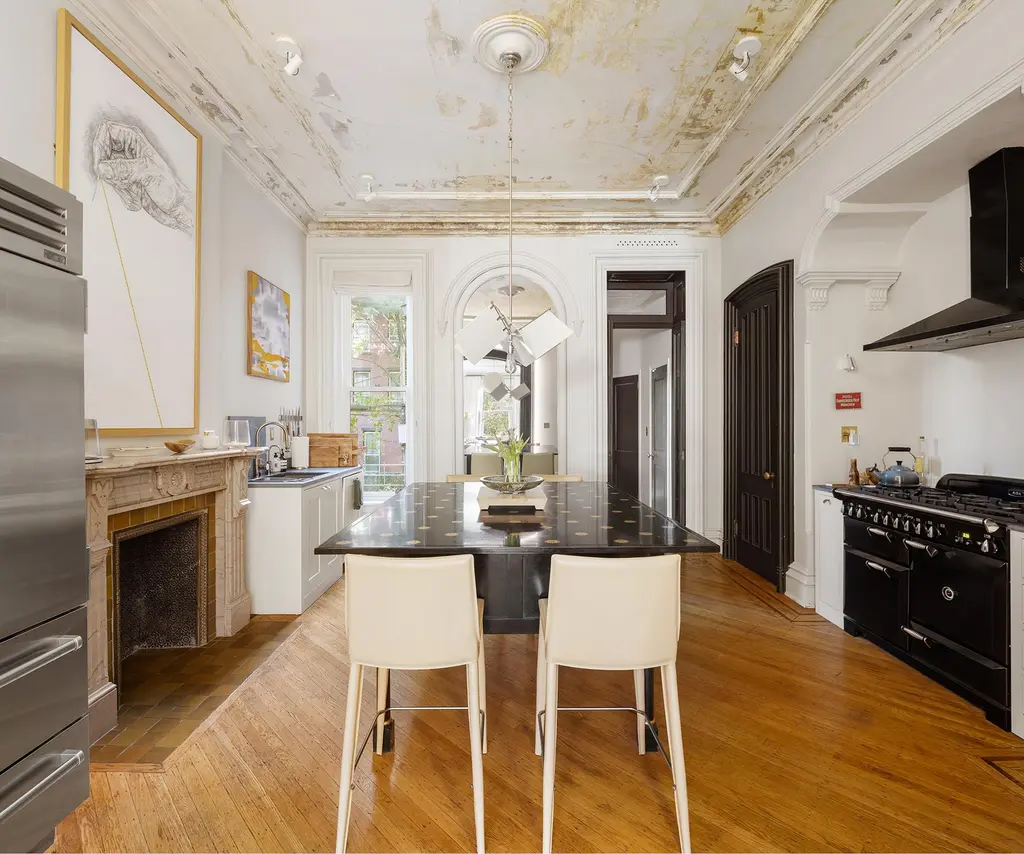
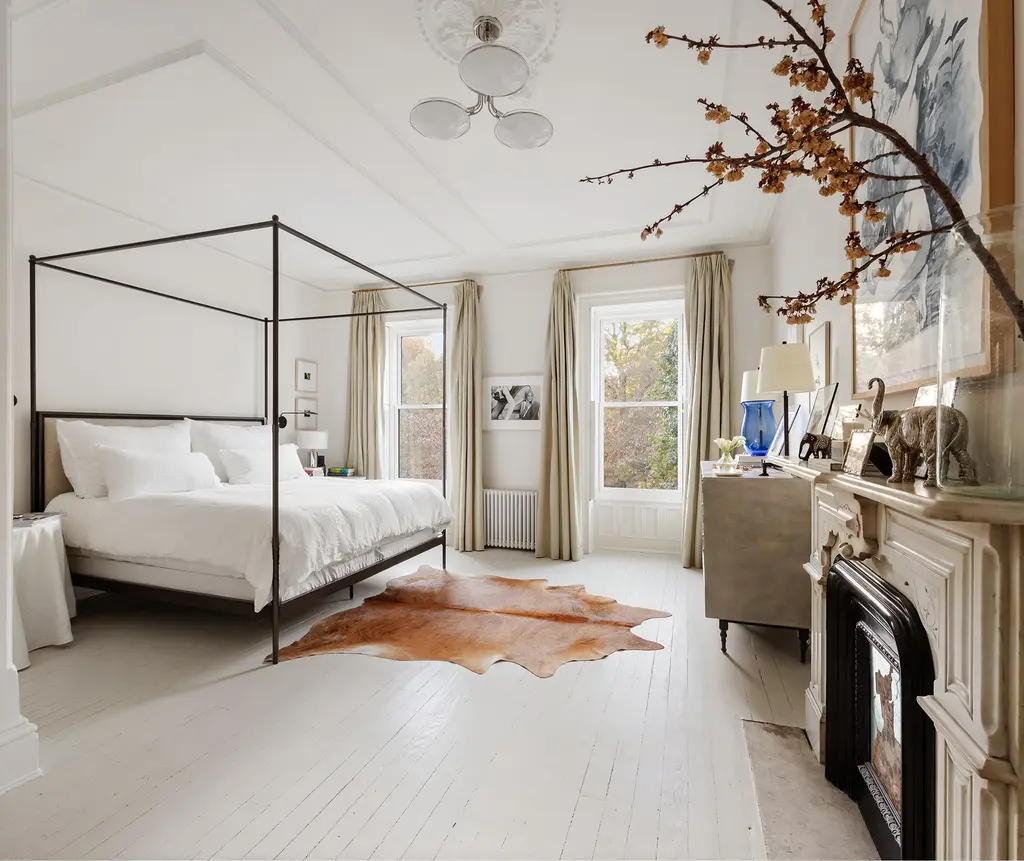
Would you like to tour any of these properties?
Just complete the info below.
Or call us at (212) 755-5544
30 West 11th Street, #TH
$9,975,000 (-5%)
Greenwich Village | Townhouse | 6+ Bedrooms, 6+ Baths | 5,670 ft2
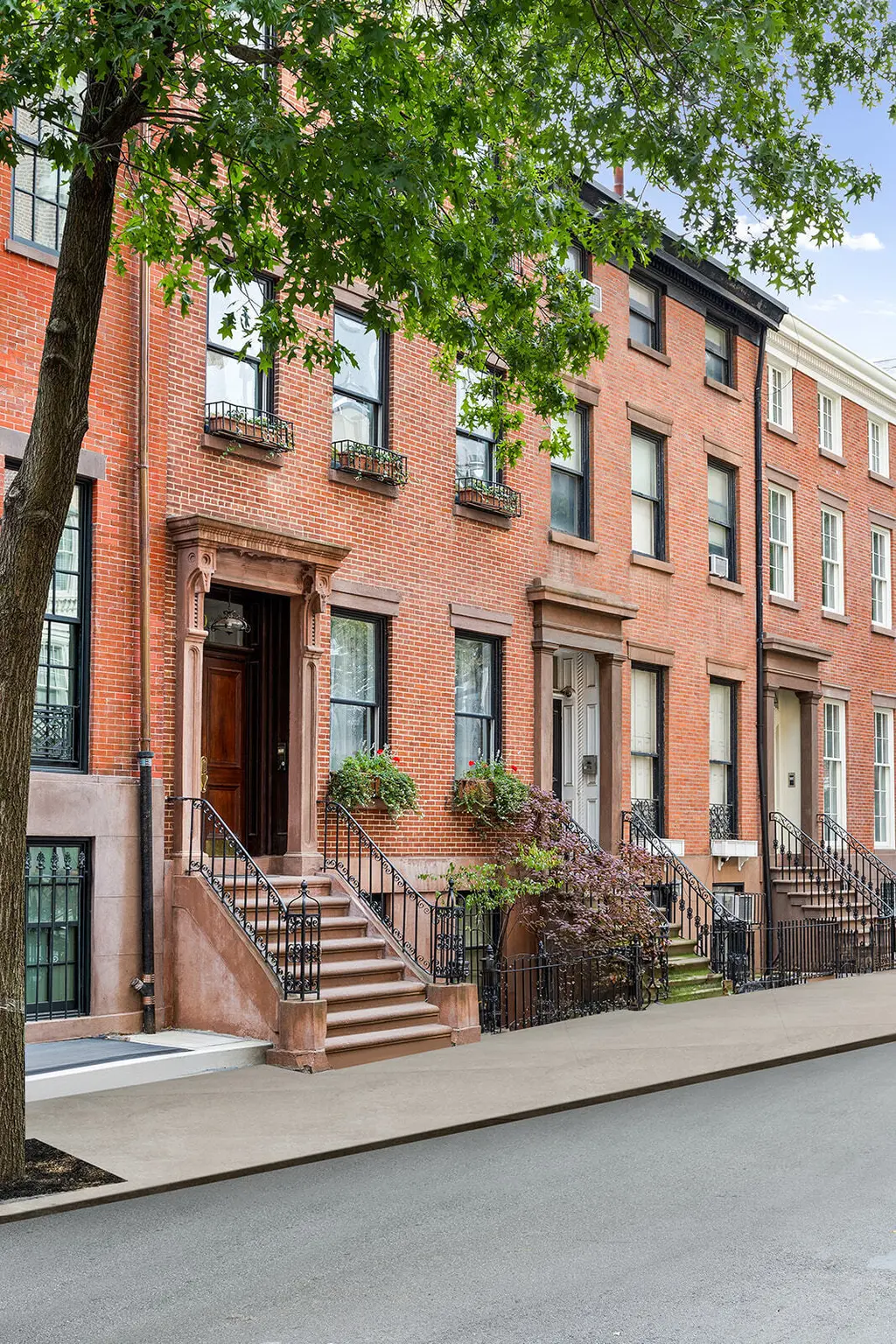
30 West 11th Street, # (Leslie J Garfield & Co Inc)
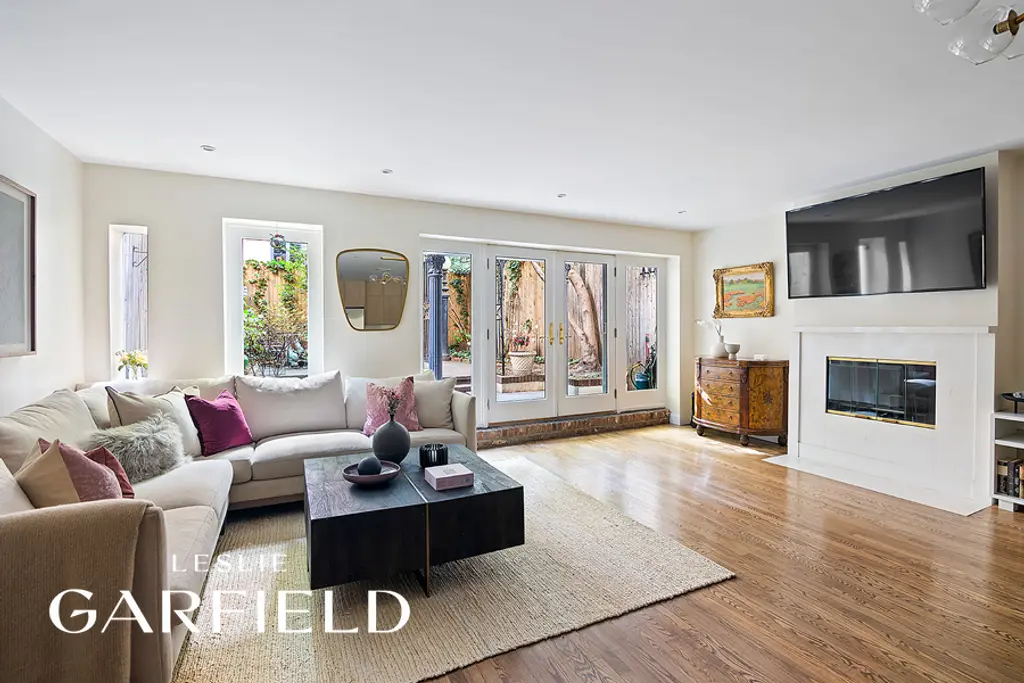
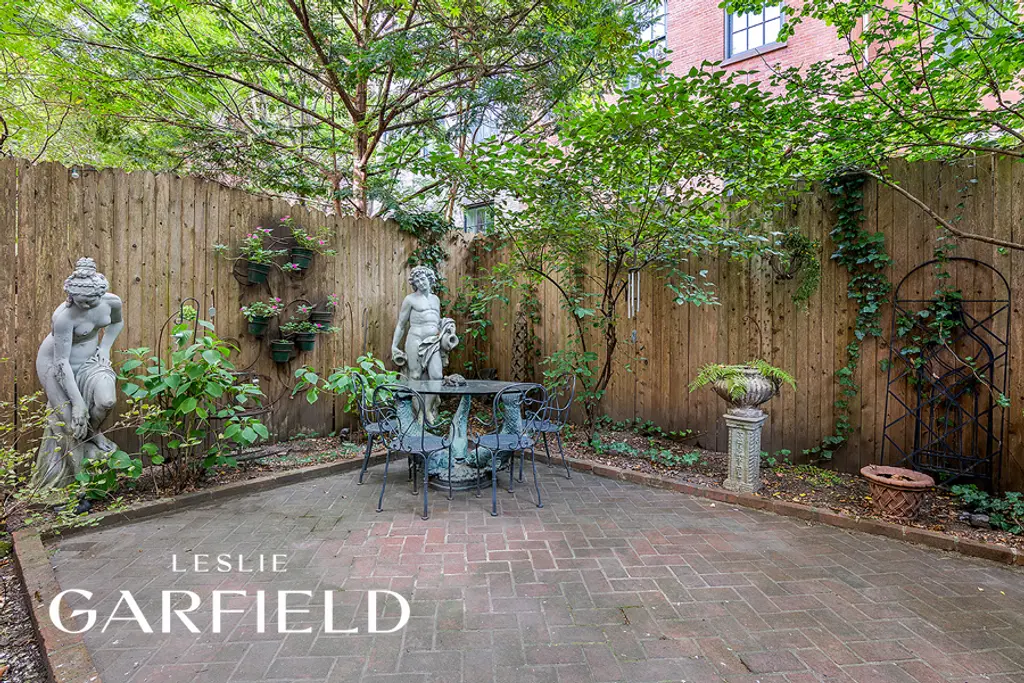
Queen Anne Style
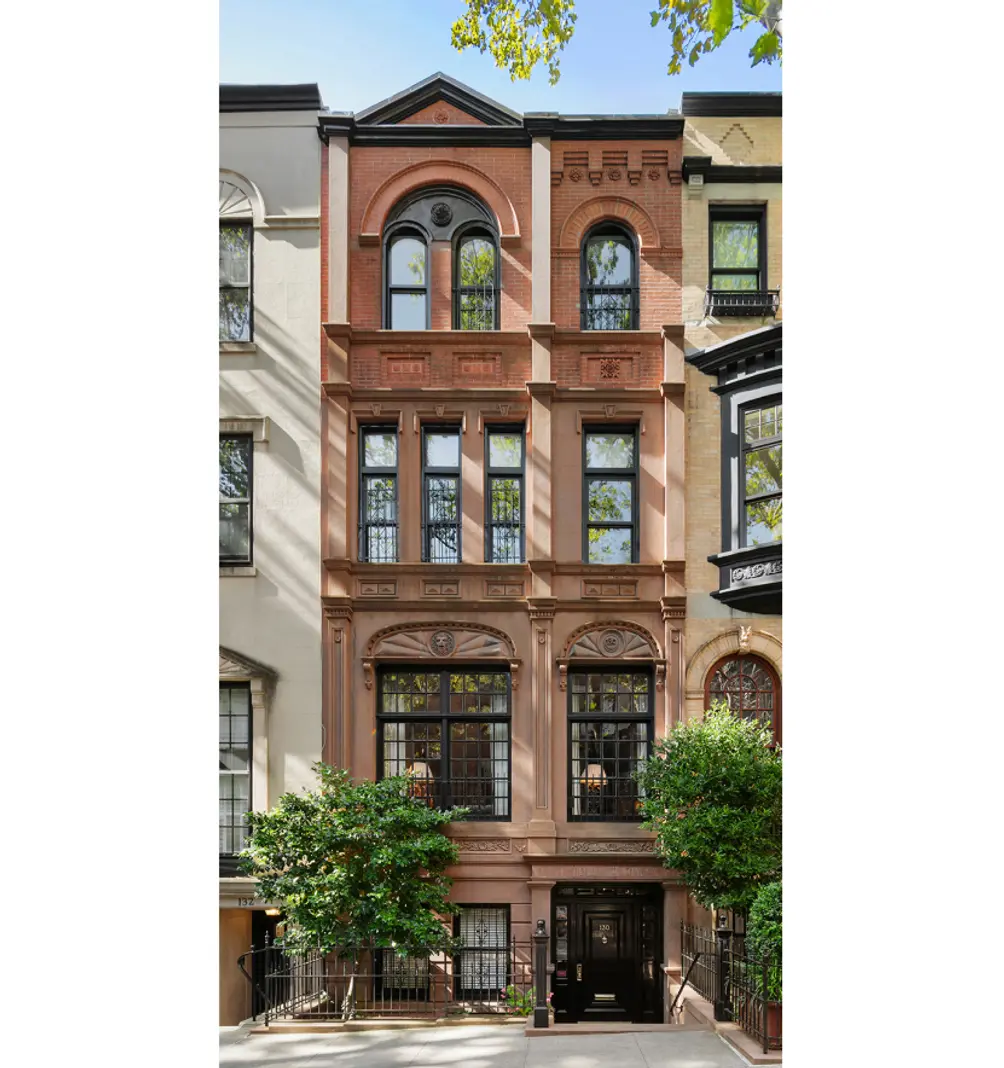 All images of 130 East 95th Street via Compass
All images of 130 East 95th Street via Compass
From the 1870s to the 1890s, New York City witnessed the rise of Queen Anne-style townhouses, marking a departure from previous architectural norms. This eclectic style is characterized by its use of diverse materials, including brick, stone, and wood, combined to create textured and visually engaging facades.
Architectural features such as asymmetrical designs, bay windows, turrets, and decorative gables contribute to the distinctive and picturesque appearance of these homes.
Architectural features such as asymmetrical designs, bay windows, turrets, and decorative gables contribute to the distinctive and picturesque appearance of these homes.
138 East 95th Street, #TH
$7,350,000
Carnegie Hill | Townhouse | 6+ Bedrooms, Unknown Baths | 4,100 ft2
138 East 95th Street, # (Leslie J Garfield & Co Inc)
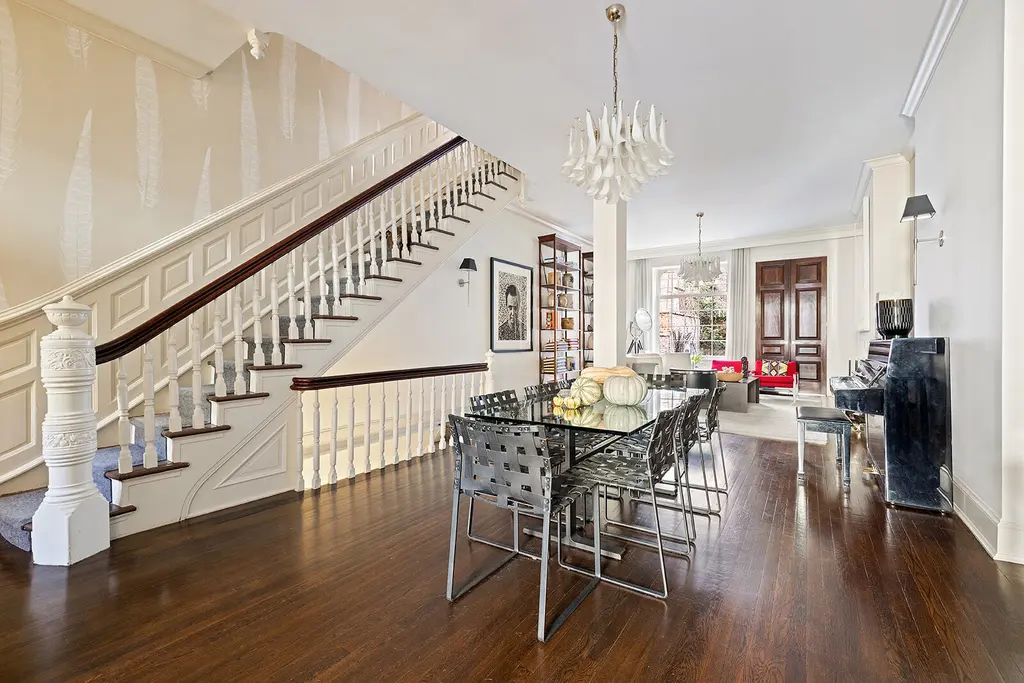
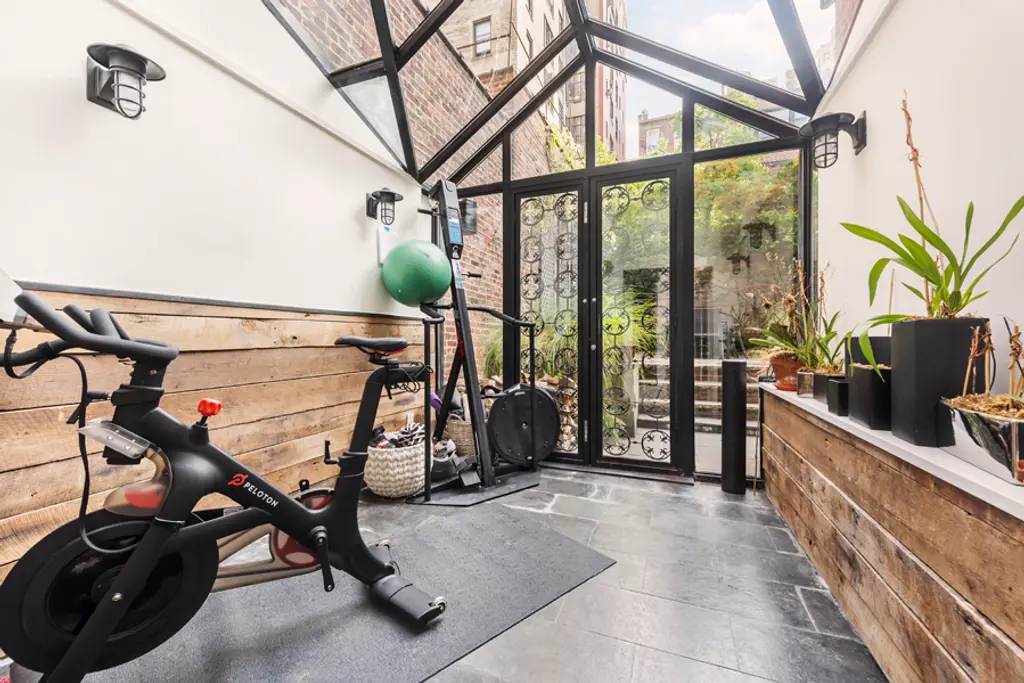
108 Willow Street, # (Leslie J Garfield & Co Inc)
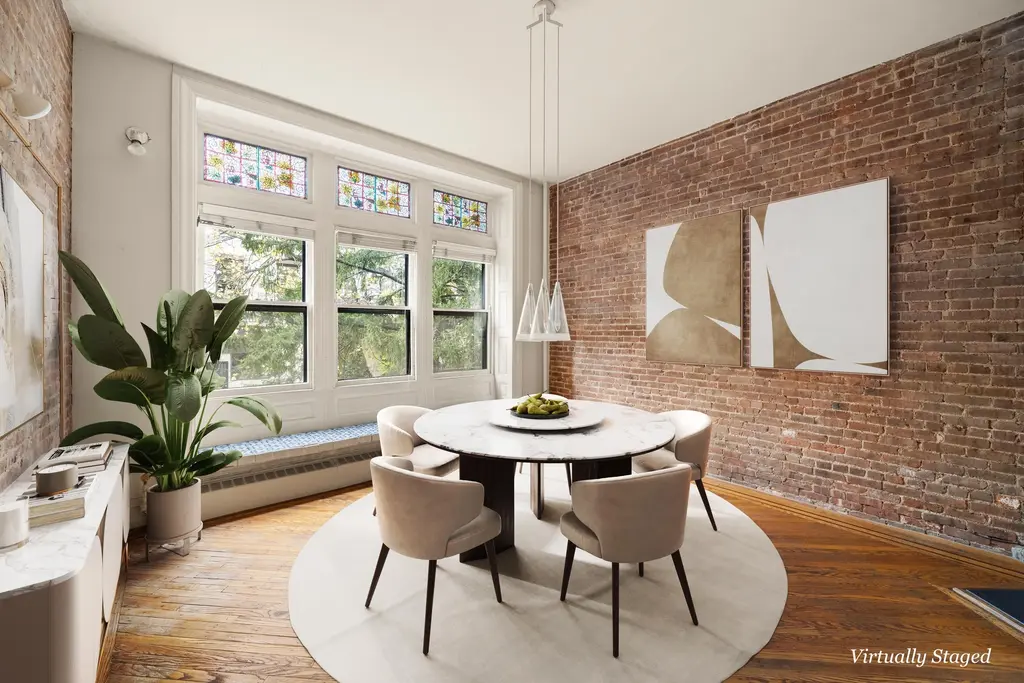
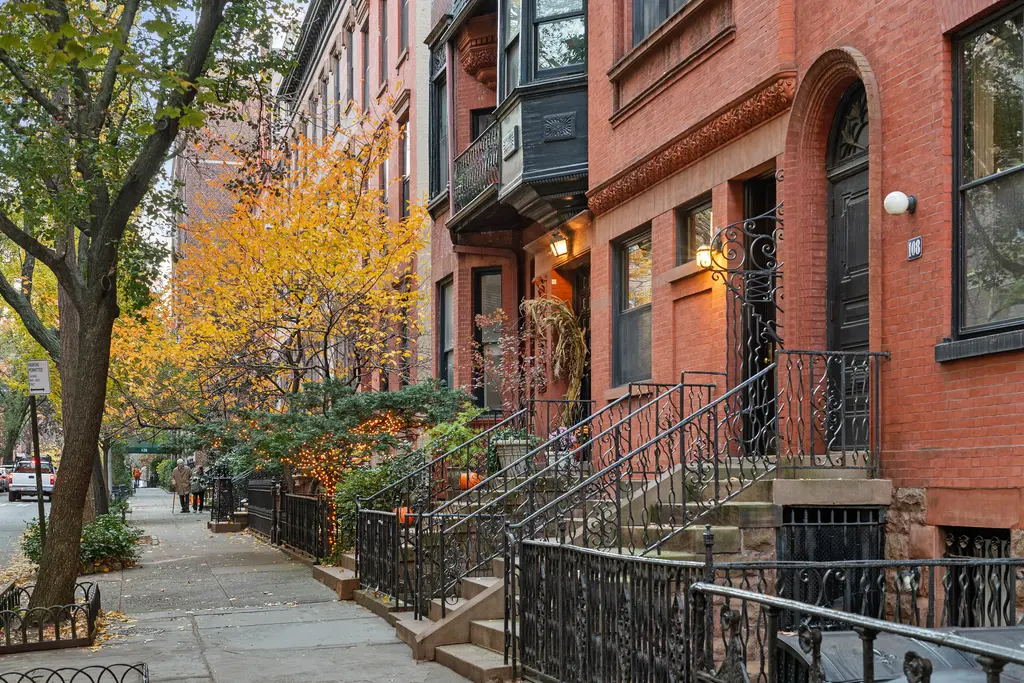
38 West 87th Street, #TH
$16,500,000
Central Park West | Townhouse | 5 Bedrooms, 6+ Baths | 8,300 ft2
38 West 87th Street, # (Modlin Group LLC)
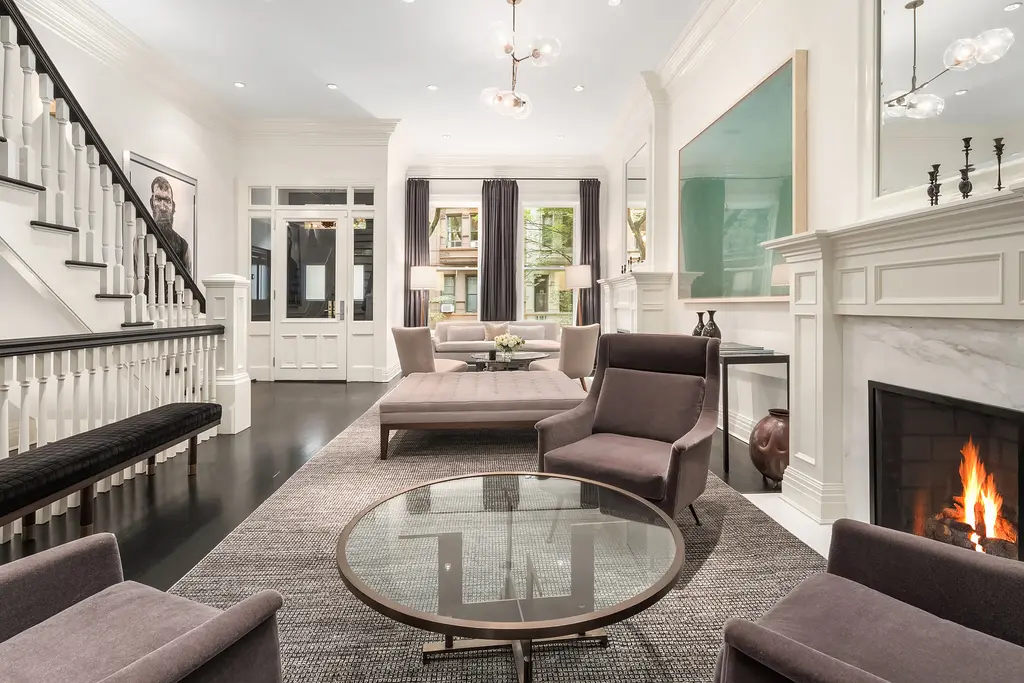
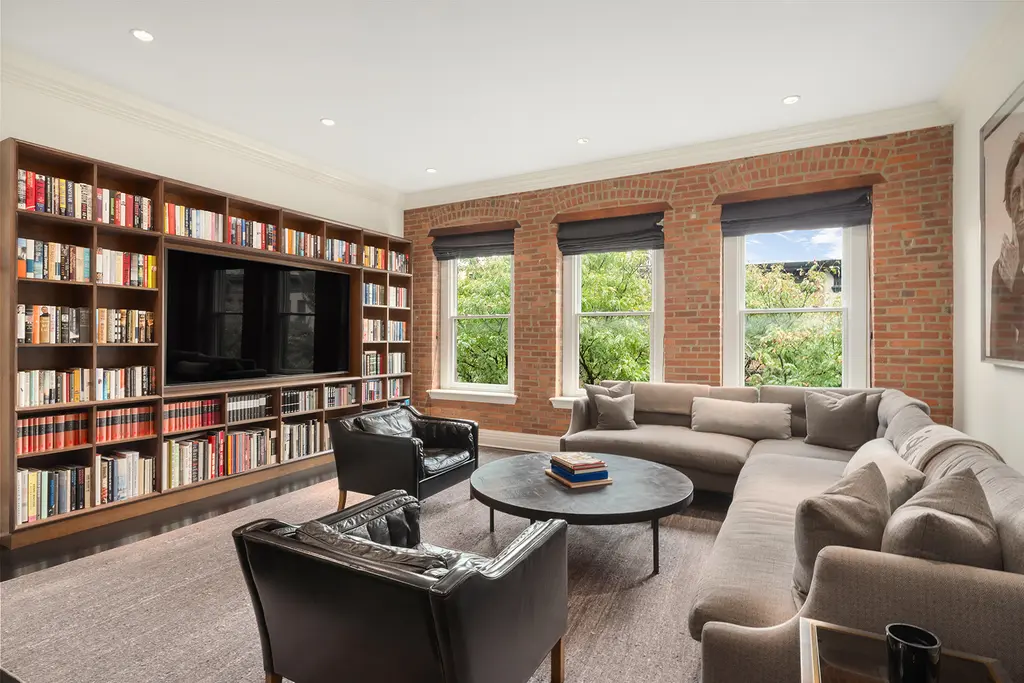
Romanesque Revival
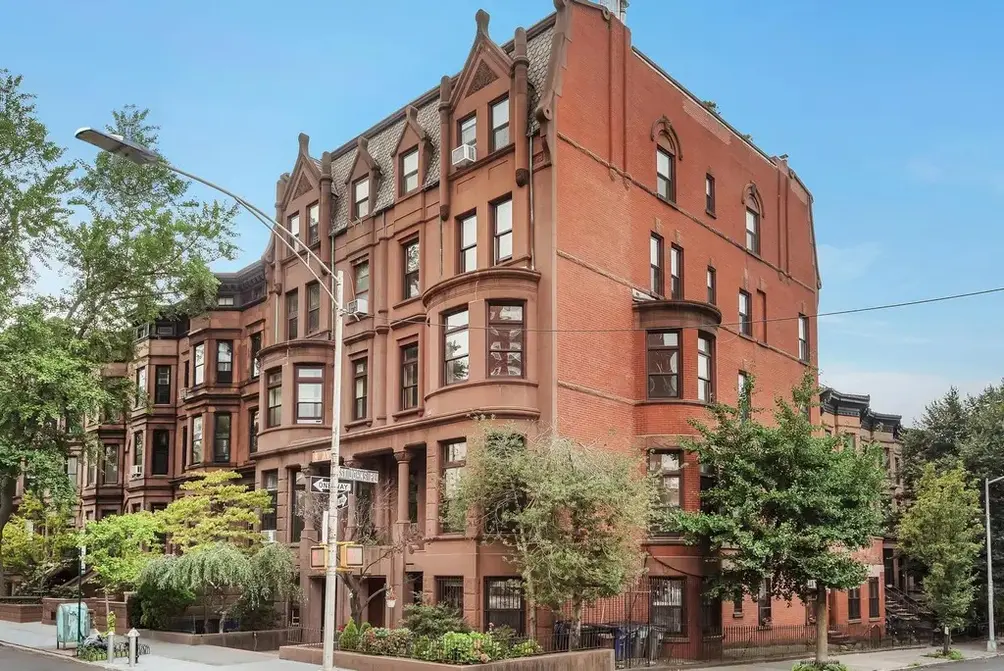 The Warwick in Brooklyn (Douglas Elliman Real Estate)
The Warwick in Brooklyn (Douglas Elliman Real Estate)
The Romanesque Revival Style, prominent in the 1880s to 1890s, is characterized by its robust features, asymmetry, and the use of polychromatic materials, emphasizing a straightforward expression of structure.
Tonal and textural juxtapositions abound, incorporating rock-faced brownstone, granite, limestone, elongated red, yellow, and brown brick, along with terra cotta. The style relies on the enduring nature of stone to convey a sense of solidity, and includes Byzantine-style carved ornamentation featuring spiny, interlaced vegetal forms, abstract patterns, and grotesque human and animal heads.
Massive arches, deeply recessed round-arched door and window openings, multi-paneled wood double doors, elaborate stained-glass transom lights, and Spanish tile roofs are distinctive elements that contribute to the overall robust aesthetic of this architectural style.
Tonal and textural juxtapositions abound, incorporating rock-faced brownstone, granite, limestone, elongated red, yellow, and brown brick, along with terra cotta. The style relies on the enduring nature of stone to convey a sense of solidity, and includes Byzantine-style carved ornamentation featuring spiny, interlaced vegetal forms, abstract patterns, and grotesque human and animal heads.
Massive arches, deeply recessed round-arched door and window openings, multi-paneled wood double doors, elaborate stained-glass transom lights, and Spanish tile roofs are distinctive elements that contribute to the overall robust aesthetic of this architectural style.
475 West 144th Street, #TH
$2,299,999 (-9.8%)
Hamilton Heights | Townhouse | 6+ Bedrooms, 4.5 Baths | 4,608 ft2
475 West 144th Street, # (Serhant)
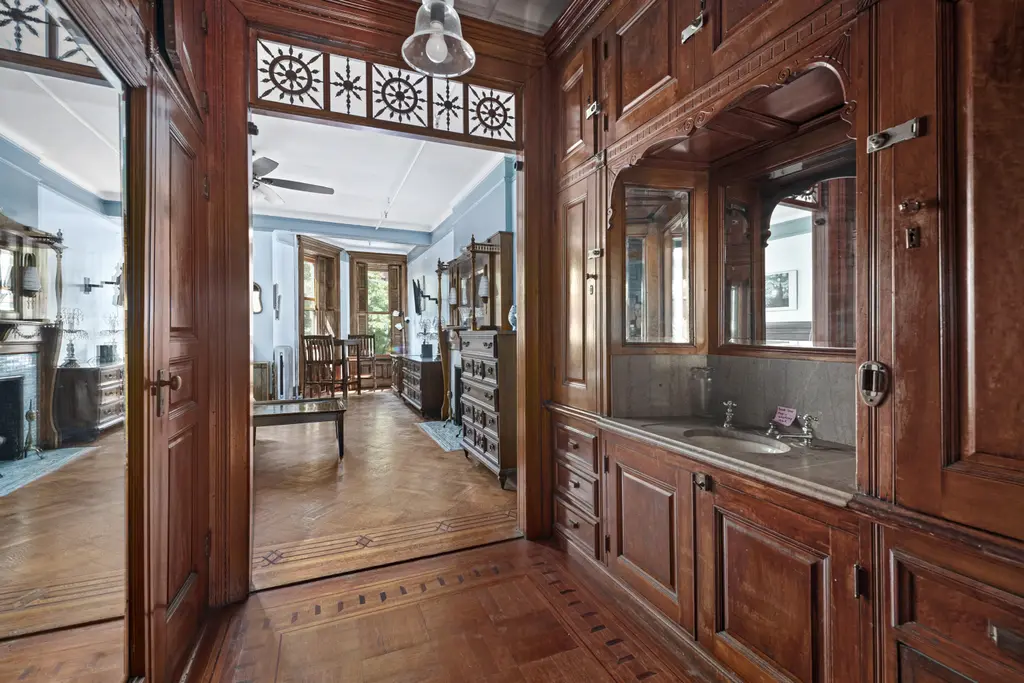
237 Hancock Street, #5 (Compass)
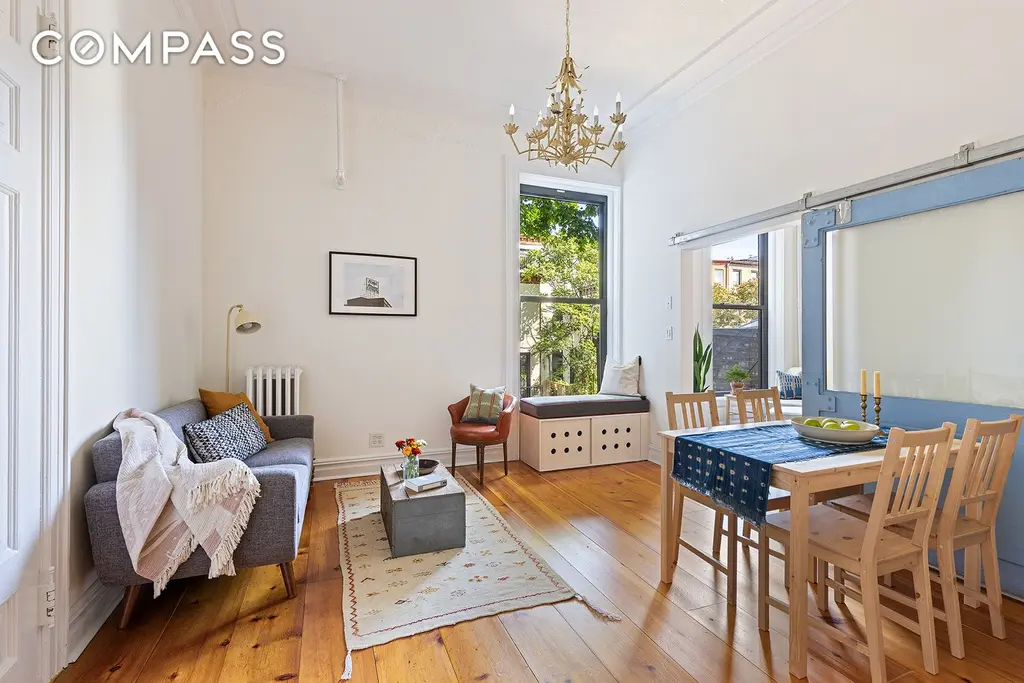
350 West End Avenue, #TH
$9,995,000 (-8.7%)
Broadway Corridor | Townhouse | 6+ Bedrooms, 6+ Baths | 9,555 ft2
350 West End Avenue, # (Leslie J Garfield & Co Inc)
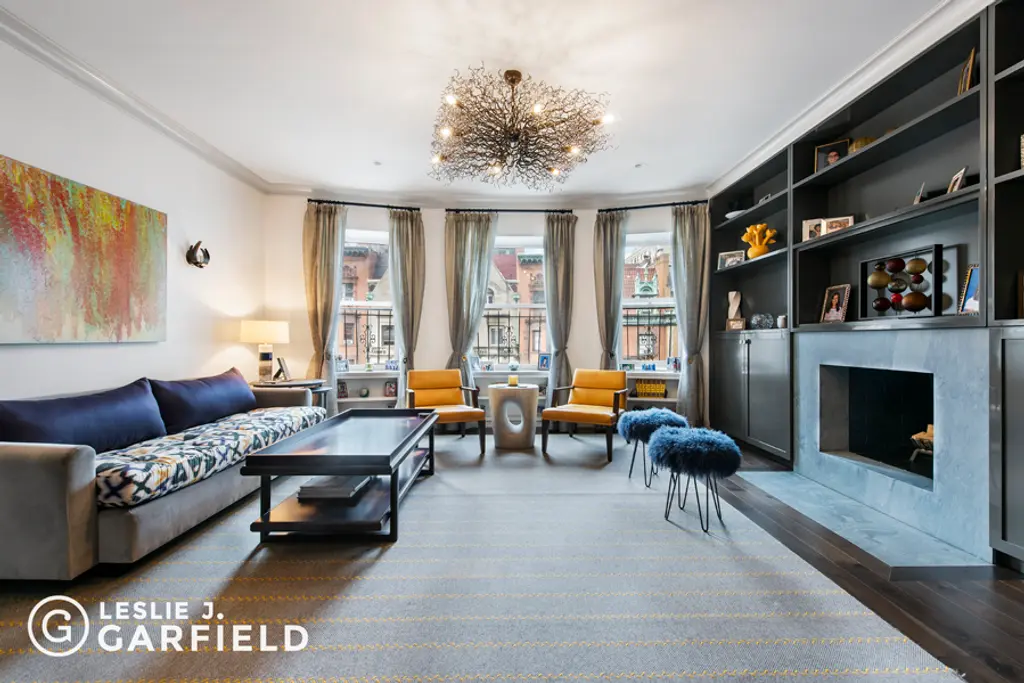
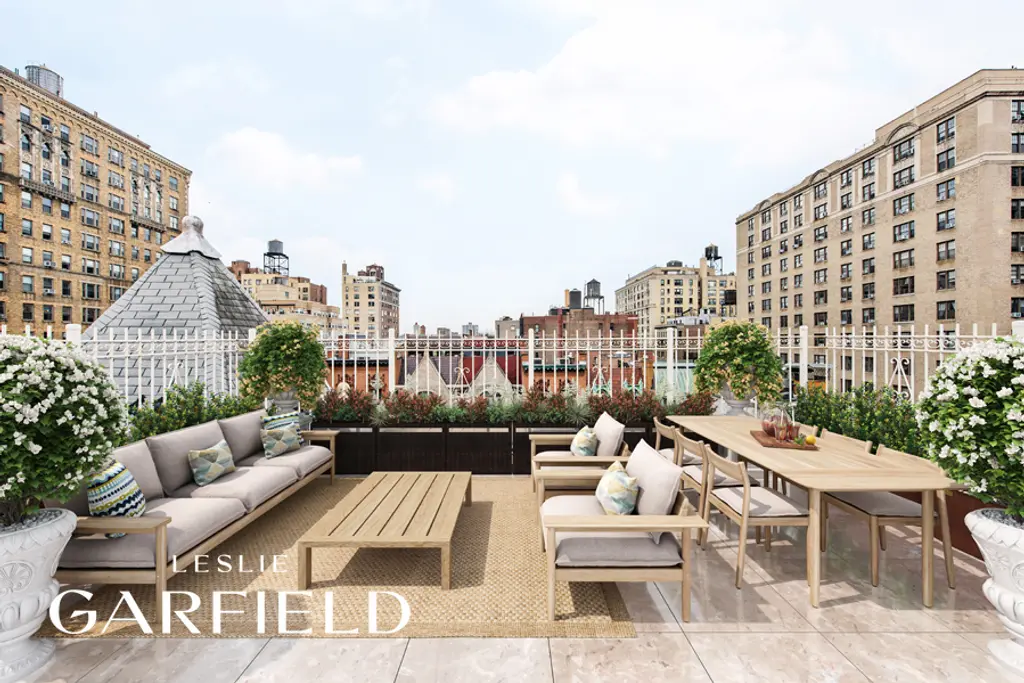
Renaissance Revival
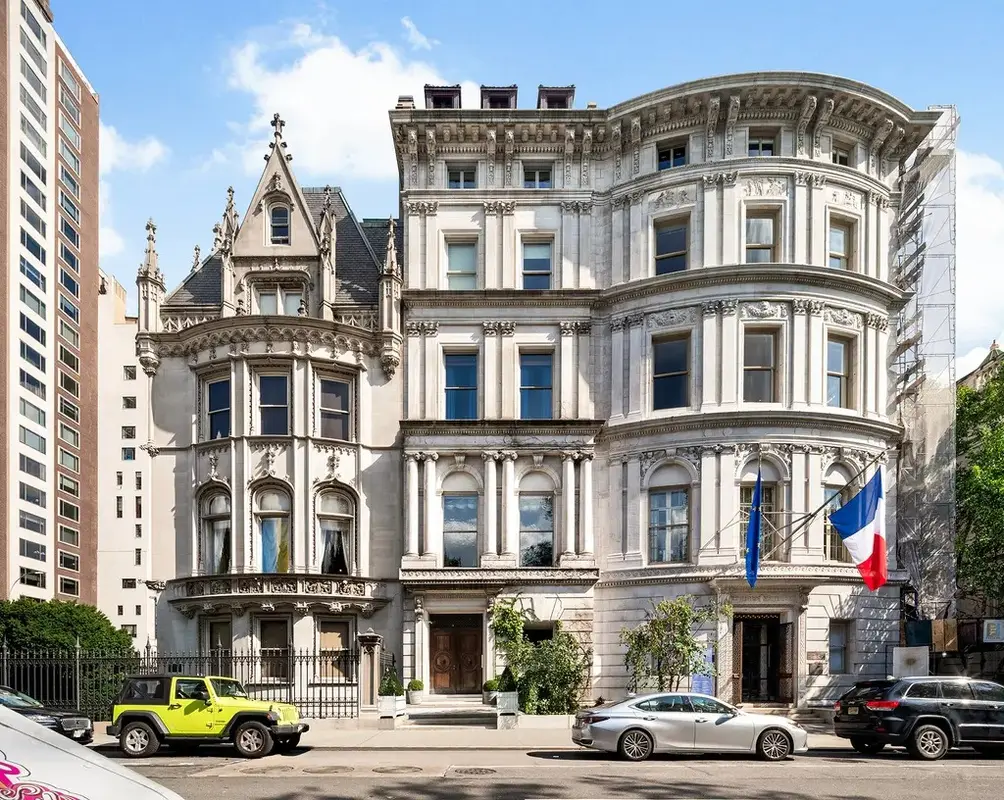 973 Fifth Avenue, #House (Modlin Group LLC)
973 Fifth Avenue, #House (Modlin Group LLC)
From the 1880s to the 1920s, Renaissance Revival architecture flourished in New York City, reflecting the grandeur and optimism of the era. Inspired by classical European design, this style favored lighter-colored facades—often limestone or light brick—that conveyed a sense of refinement and permanence. Ornate detailing was key, with formal entryways, elegant pilasters, and decorative flourishes such as floral garlands, wreaths, and fruit motifs adorning windows and cornices. These rowhouses exuded sophistication, drawing on the symmetry and grandeur of the Italian and French Renaissance while adapting to the rhythm of the city's growing streetscape.
14 West 121st Street, # (Harlem Lofts Inc)
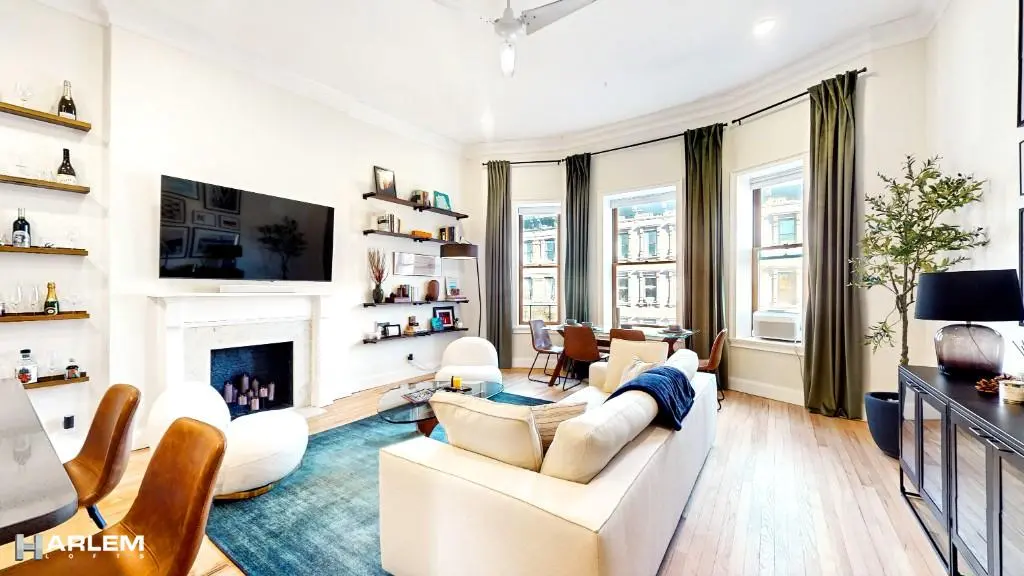
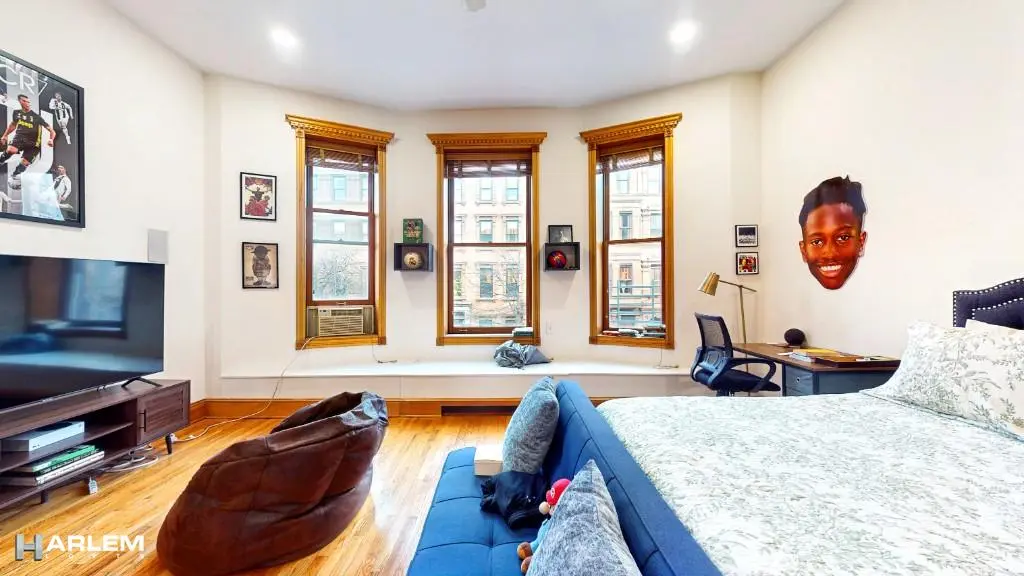
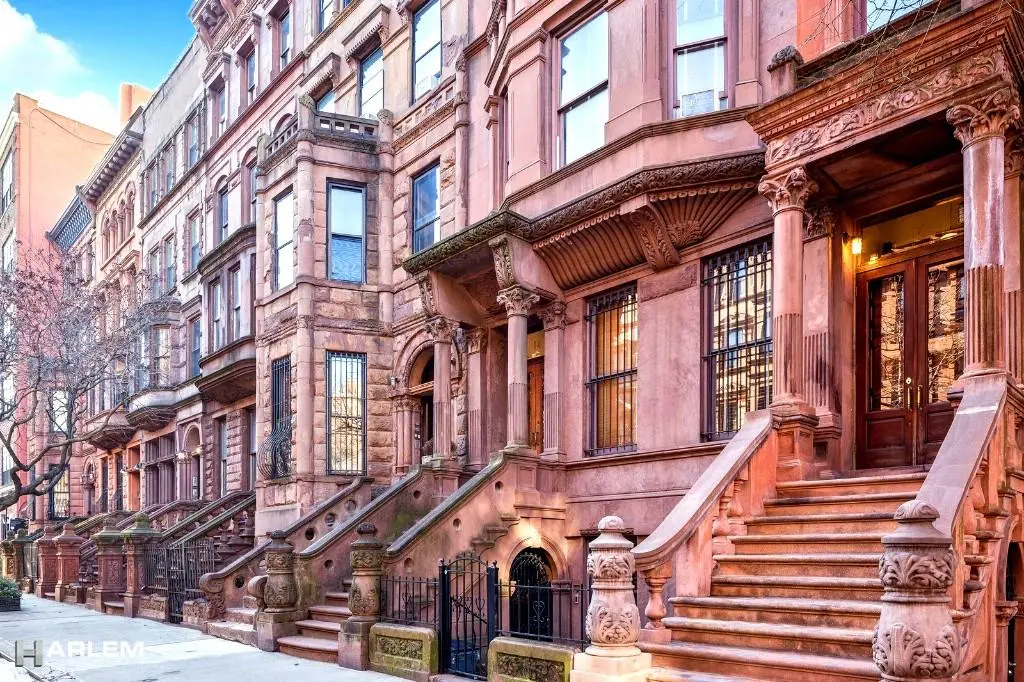
416 West 154th Street, #TH
$2,595,000
Hamilton Heights | Townhouse | 5 Bedrooms, 4.5 Baths | 5,197 ft2
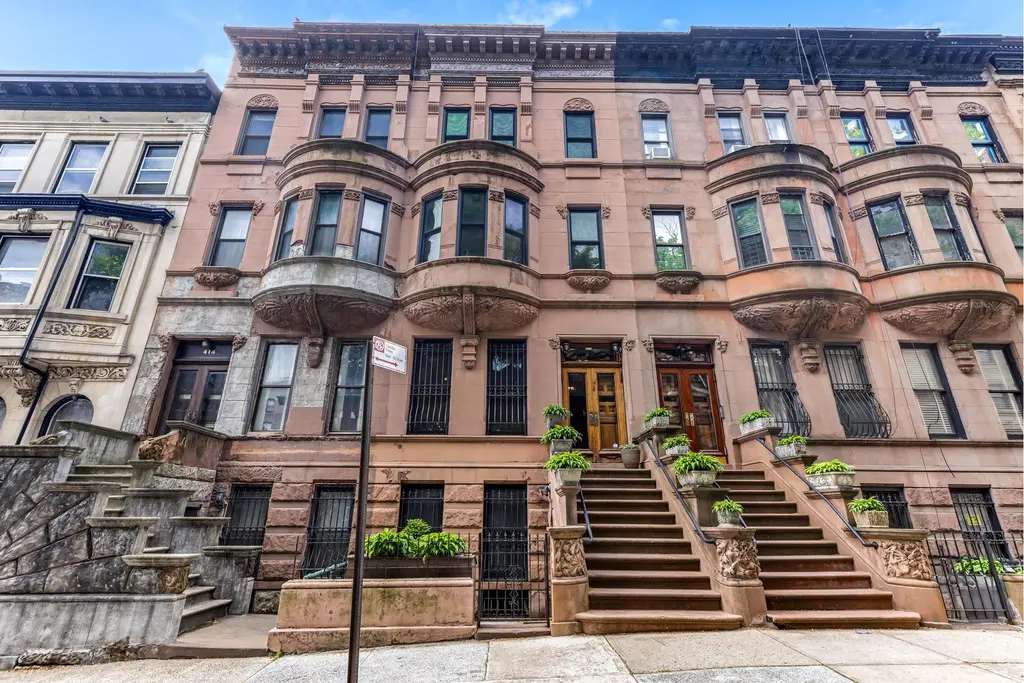
416 West 154th Street, # (Douglas Elliman Real Estate)
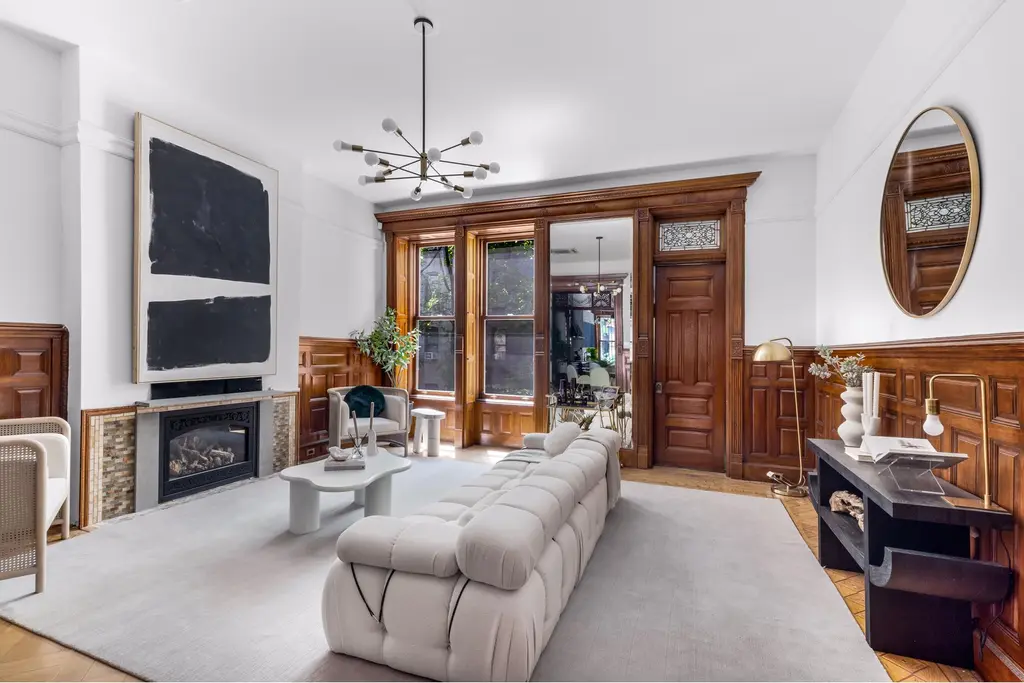
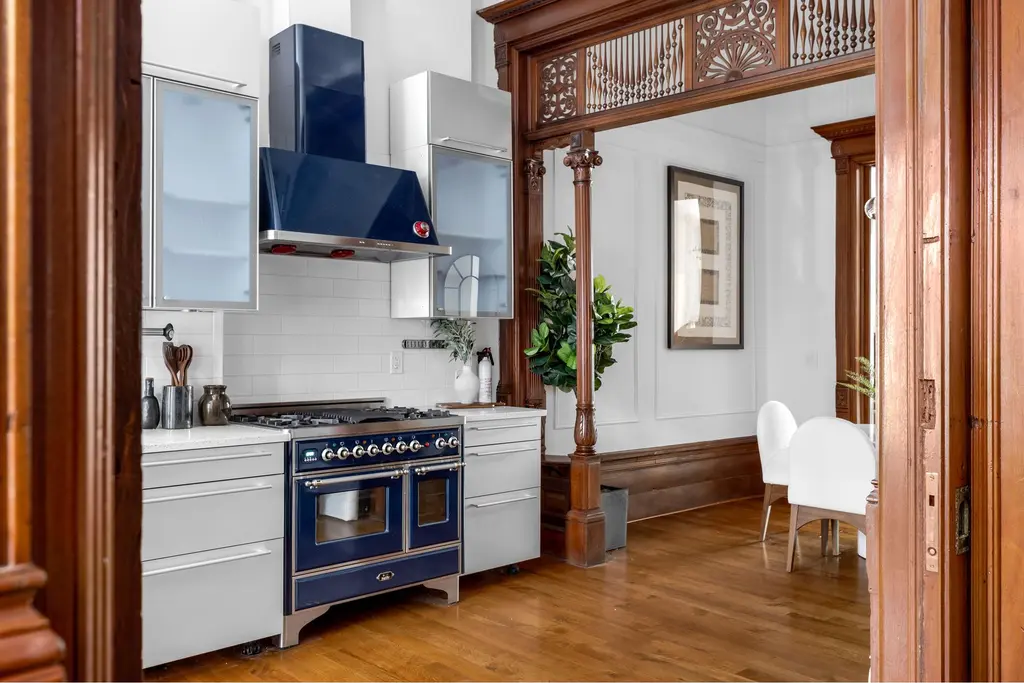
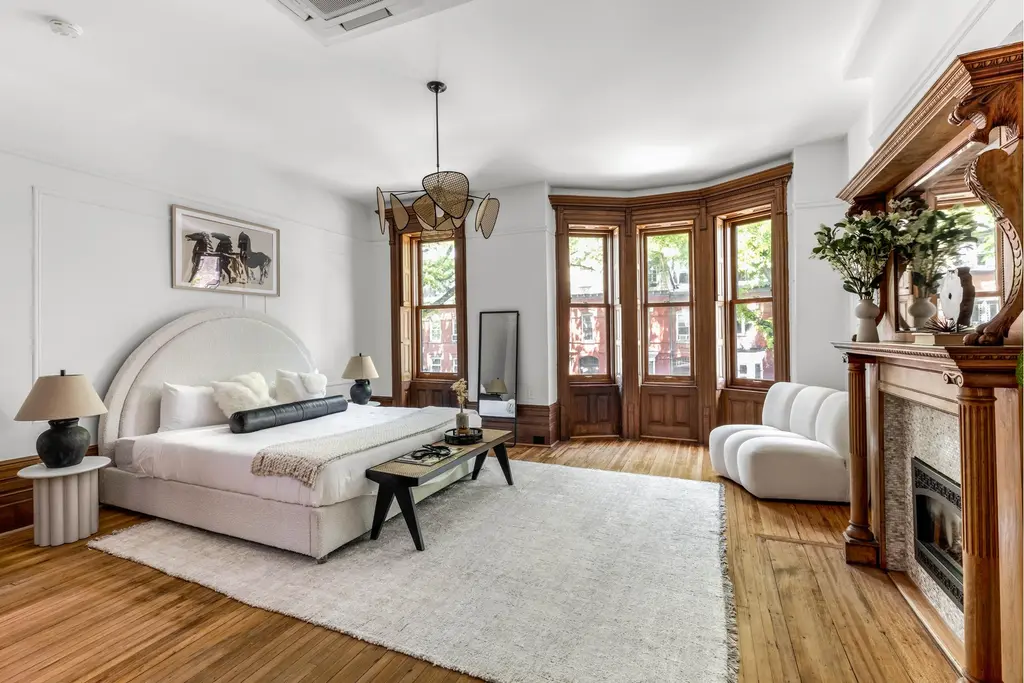
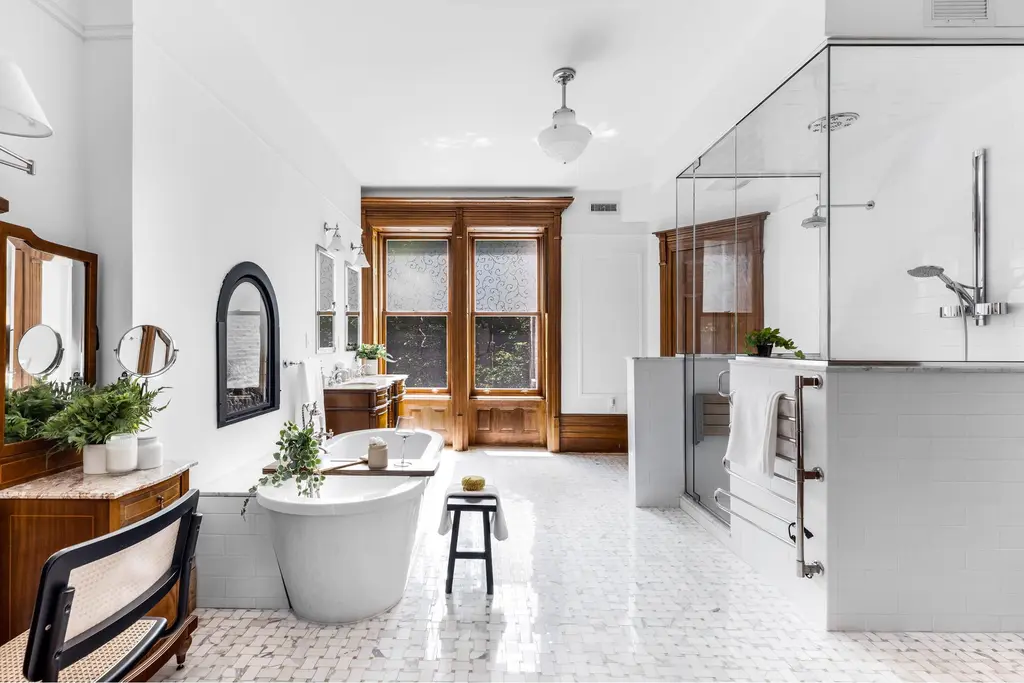
109 West 77th Street, #TH
$5,995,000
Broadway Corridor | Townhouse | 6+ Bedrooms, 5 Baths | 5,760 ft2
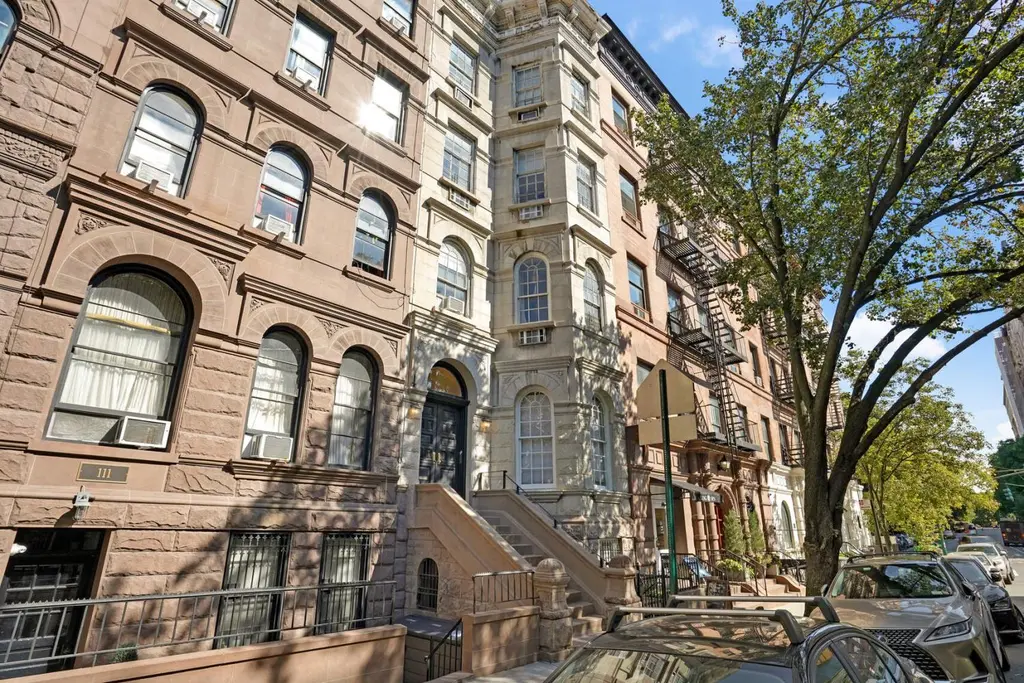
109 West 77th Street, # (Christies International Real Estate Group LLC)
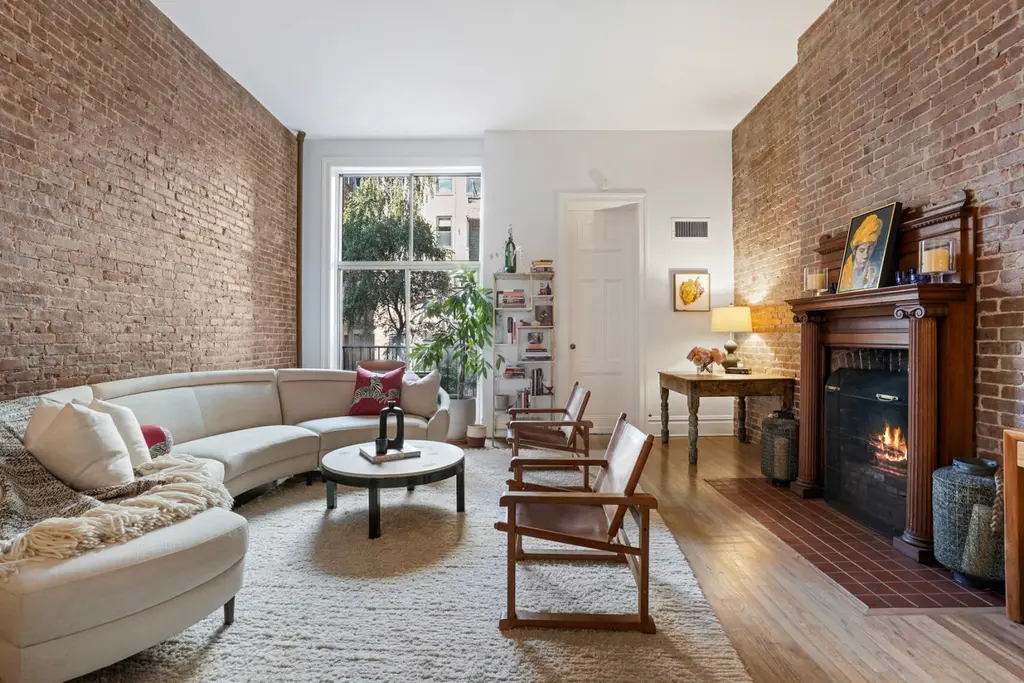
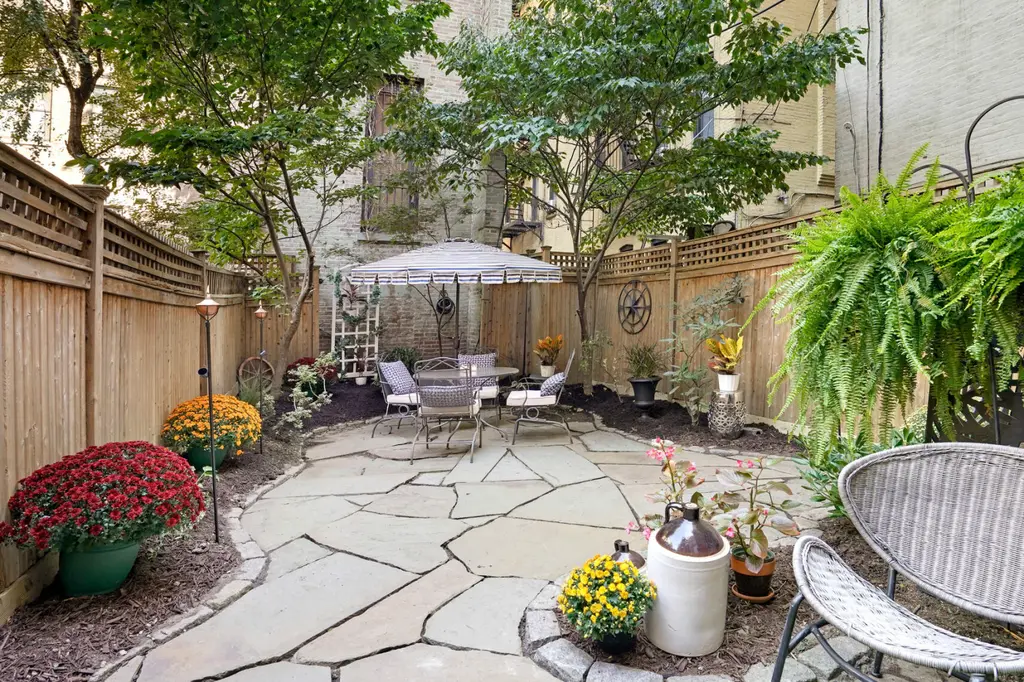
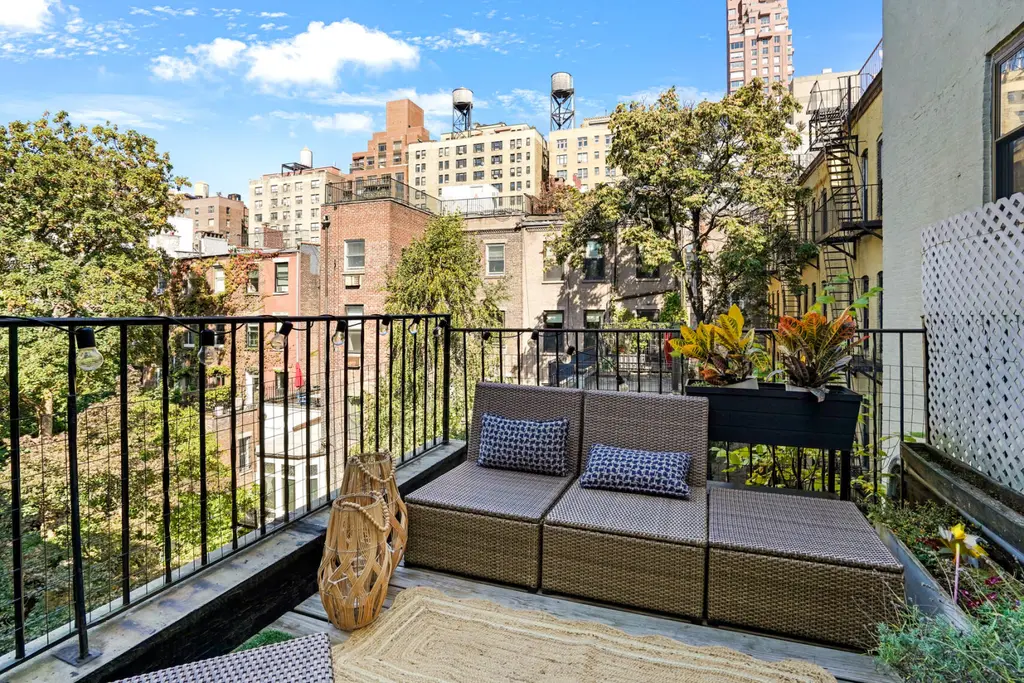
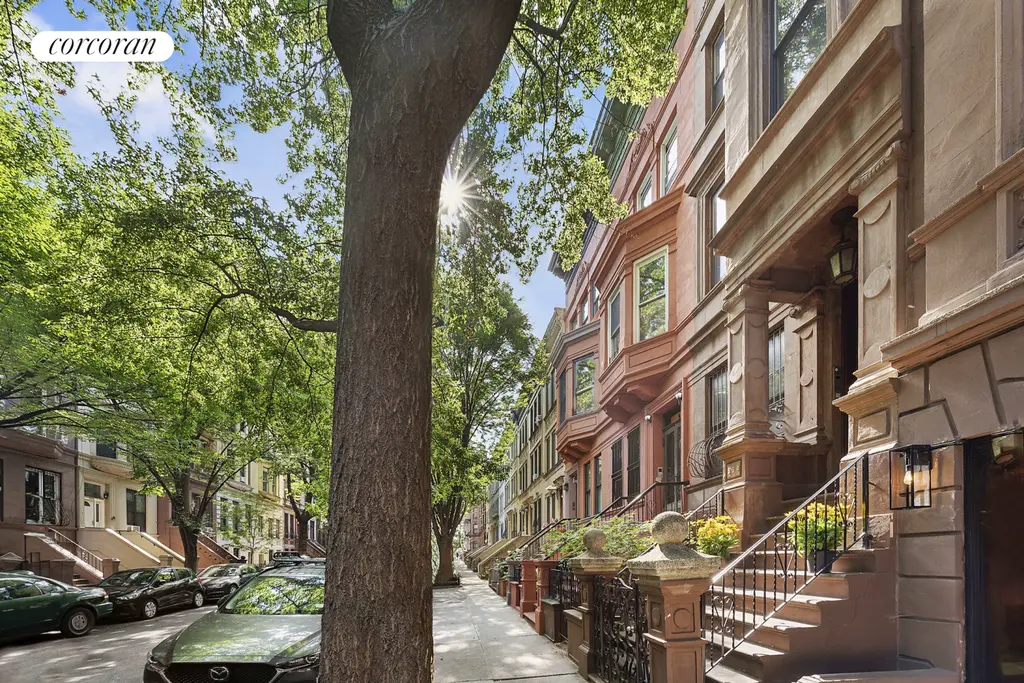
534 West 149th Street, # (Corcoran Group)
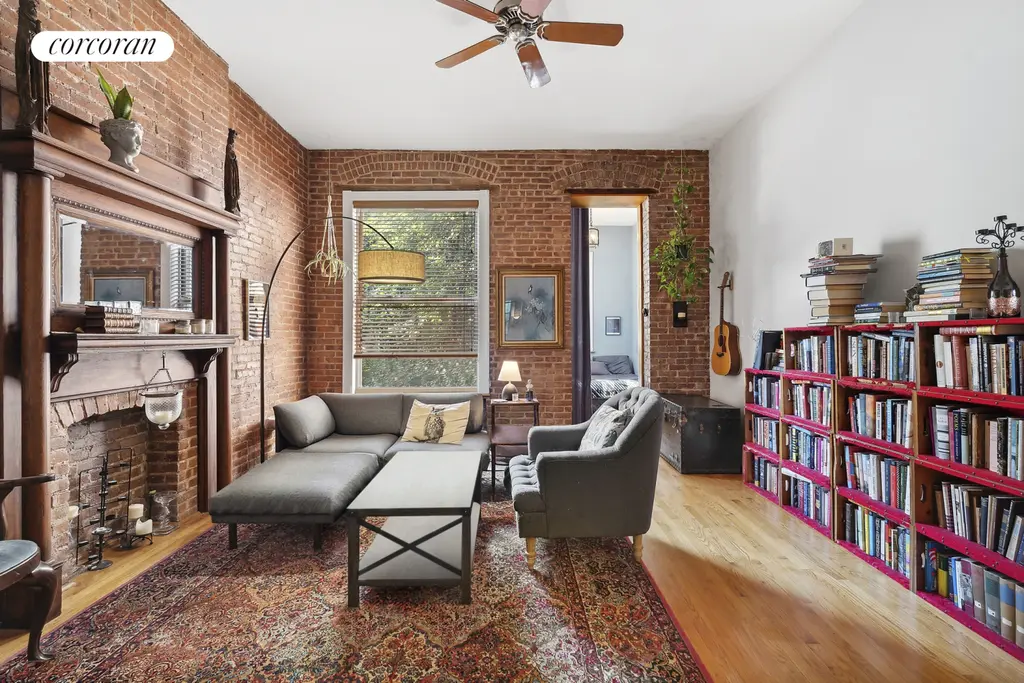
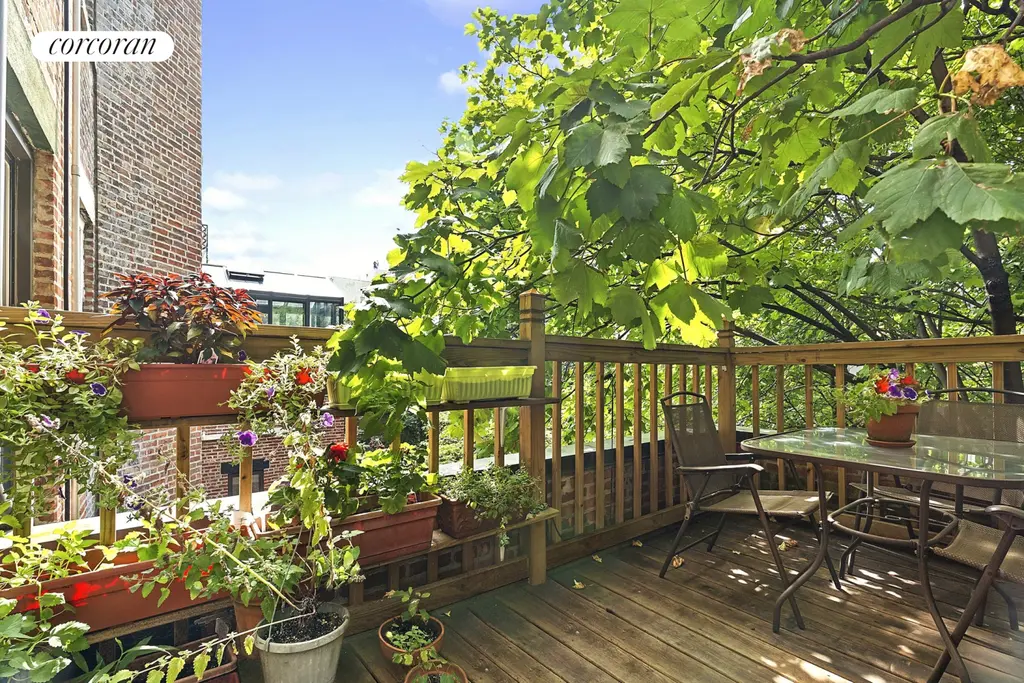
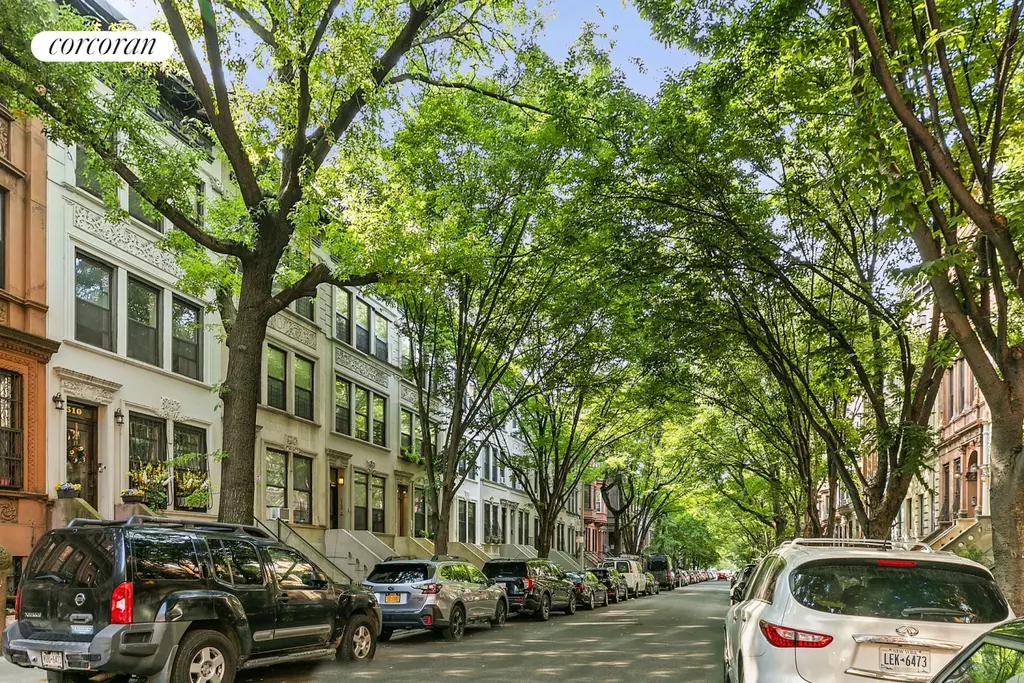
44 West 90th Street, #TH
$8,450,000 (-5.6%)
Central Park West | Townhouse | 6+ Bedrooms, 6+ Baths | 6,790 ft2
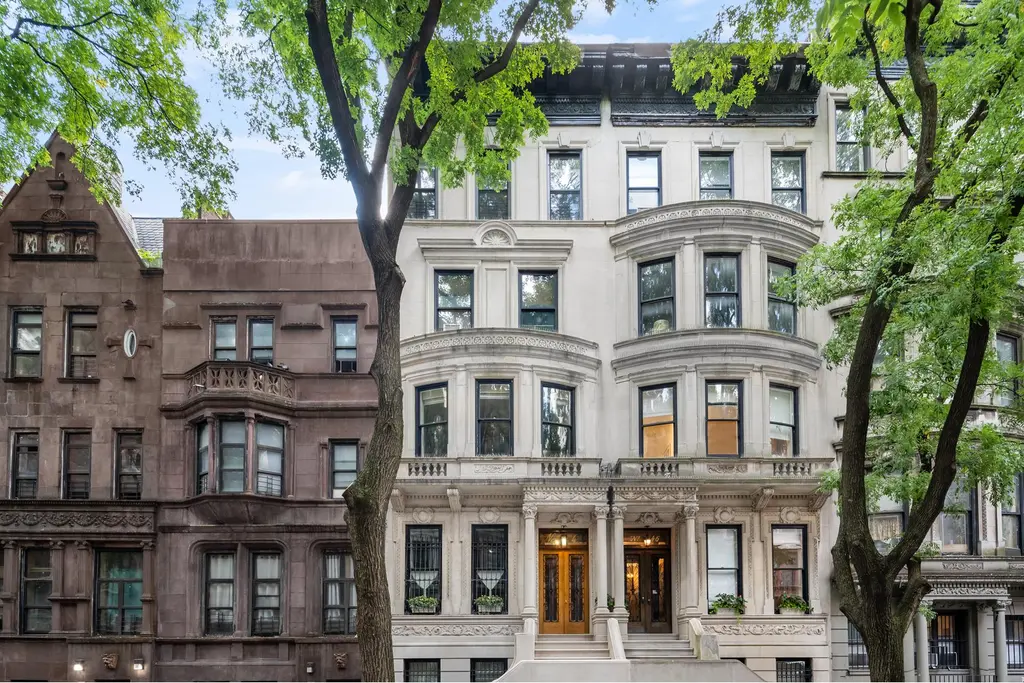
44 West 90th Street, # (Douglas Elliman Real Estate)
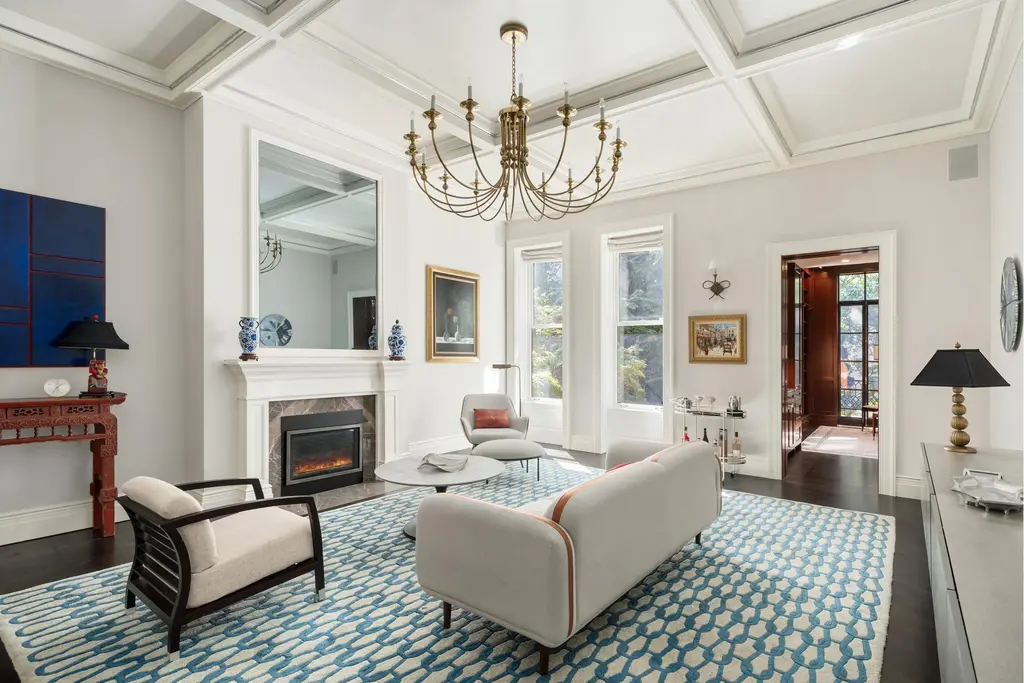
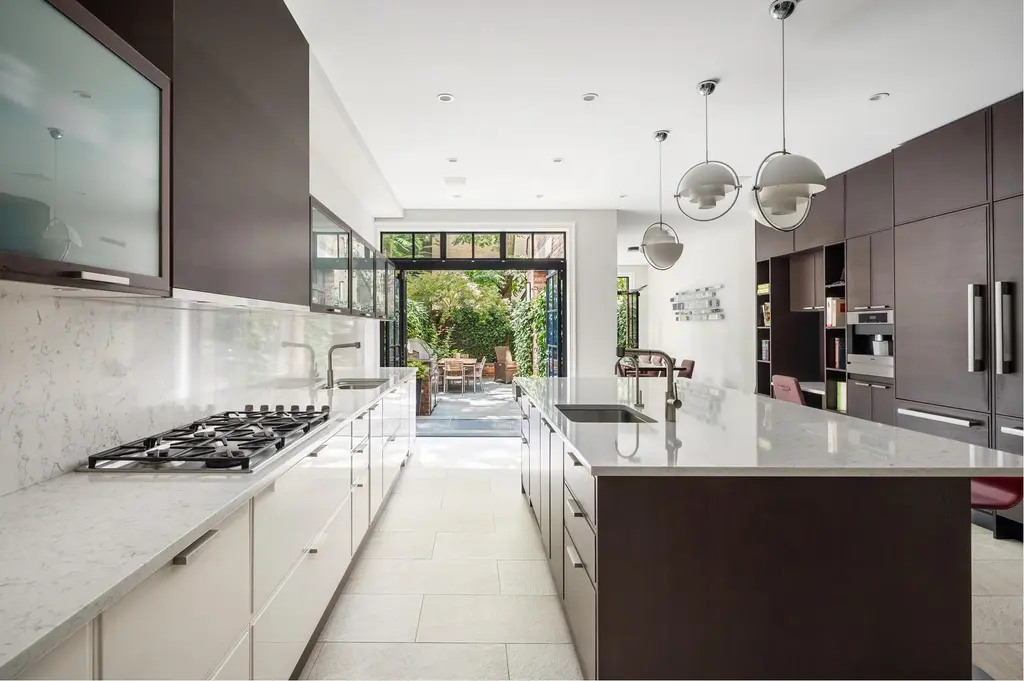
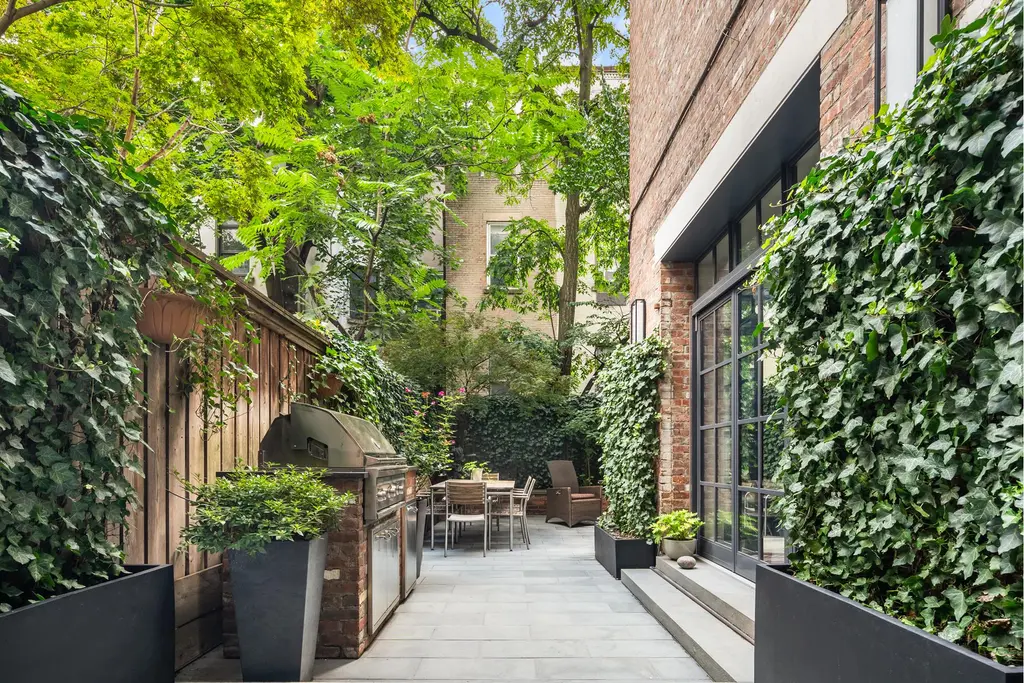
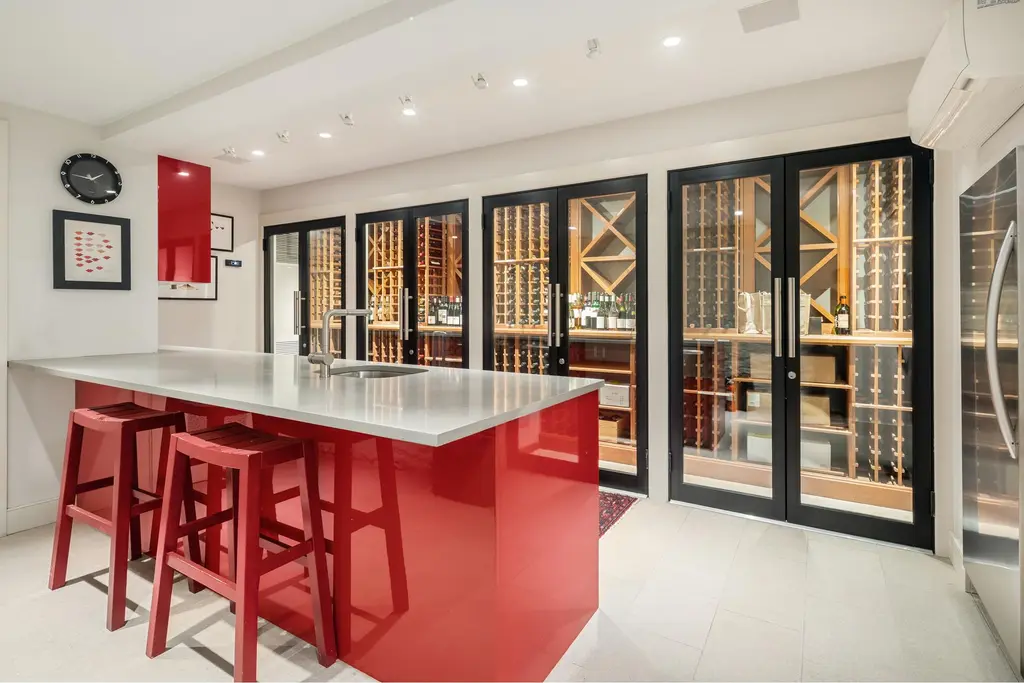
Beaux-Arts
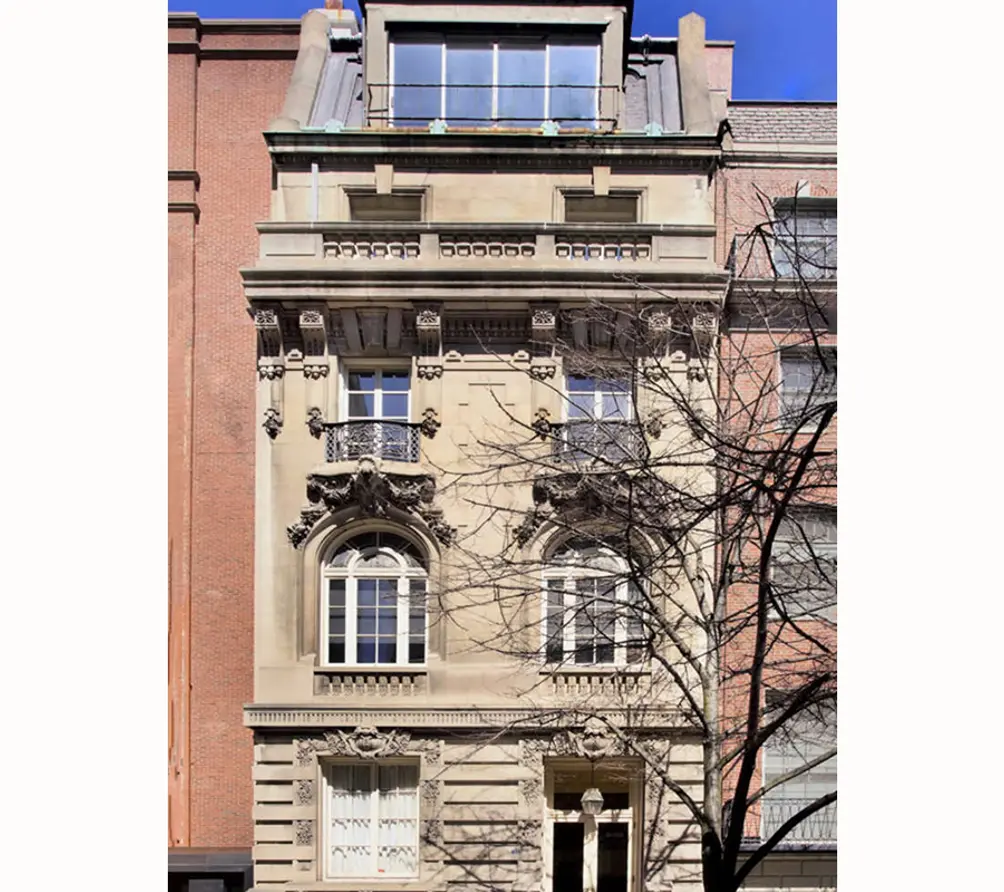 35 East 68th Street via CityRealty
35 East 68th Street via CityRealty
Reflecting a harmonious blend of classical elements, the Beaux-Arts Style stands out for its robust architectural details. Popular in New York from 1890 to 1920, the style originated in influential art schools in France, an nearly the entirety of Paris utilizes this style. With its roots deeply embedded in academic classicism, the style exhibits a distinctive symmetry of design, an ordered and uniform appearance, and characteristics such as a five-story height, steep mansard roof, or flat/low-pitched roof.
Buildings in this style often feature white marble, limestone, or light-colored brick facades adorned with bold, three-dimensional stone carving and ornamentation like cartouches. Entrance doors are typically elevated by one or two steps, while the main floor, often above the entrance, boasts large windows with balconies, incorporating double-hung and casement wood windows. Additionally, curved or three-sided projecting bay windows and sheet metal cornices with embellished console brackets contribute to the overall aesthetic.
Buildings in this style often feature white marble, limestone, or light-colored brick facades adorned with bold, three-dimensional stone carving and ornamentation like cartouches. Entrance doors are typically elevated by one or two steps, while the main floor, often above the entrance, boasts large windows with balconies, incorporating double-hung and casement wood windows. Additionally, curved or three-sided projecting bay windows and sheet metal cornices with embellished console brackets contribute to the overall aesthetic.
15 East 63rd Street, #TH
$39,500,000
Park/Fifth Ave. to 79th St. | Townhouse | 6+ Bedrooms, 6+ Baths | 18,000 ft2
15 East 63rd Street, # (Brown Harris Stevens Residential Sales LLC)
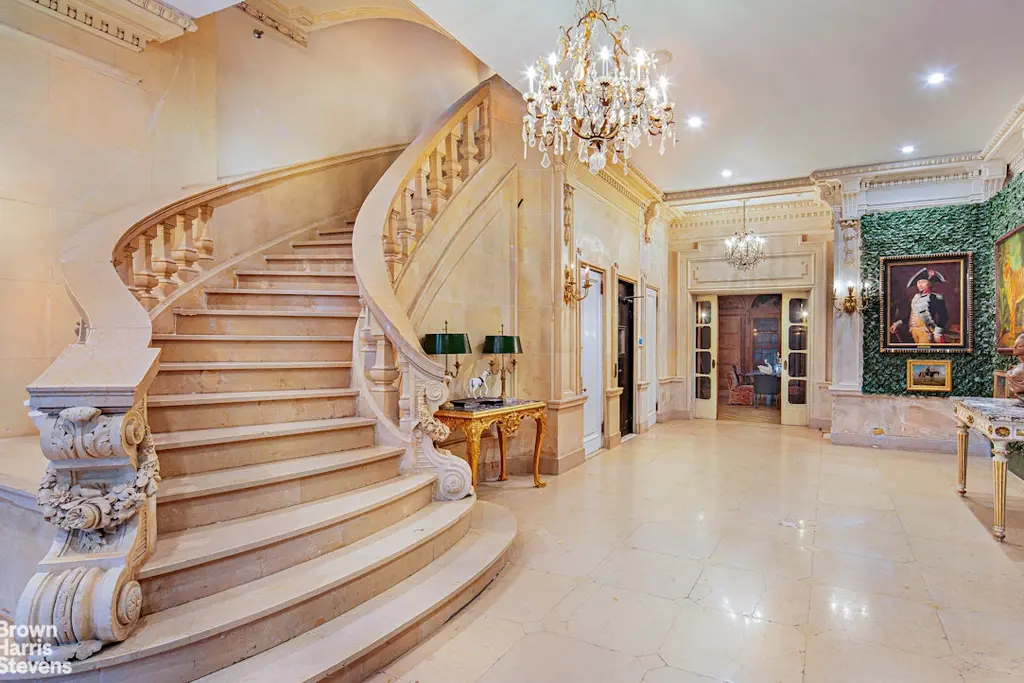
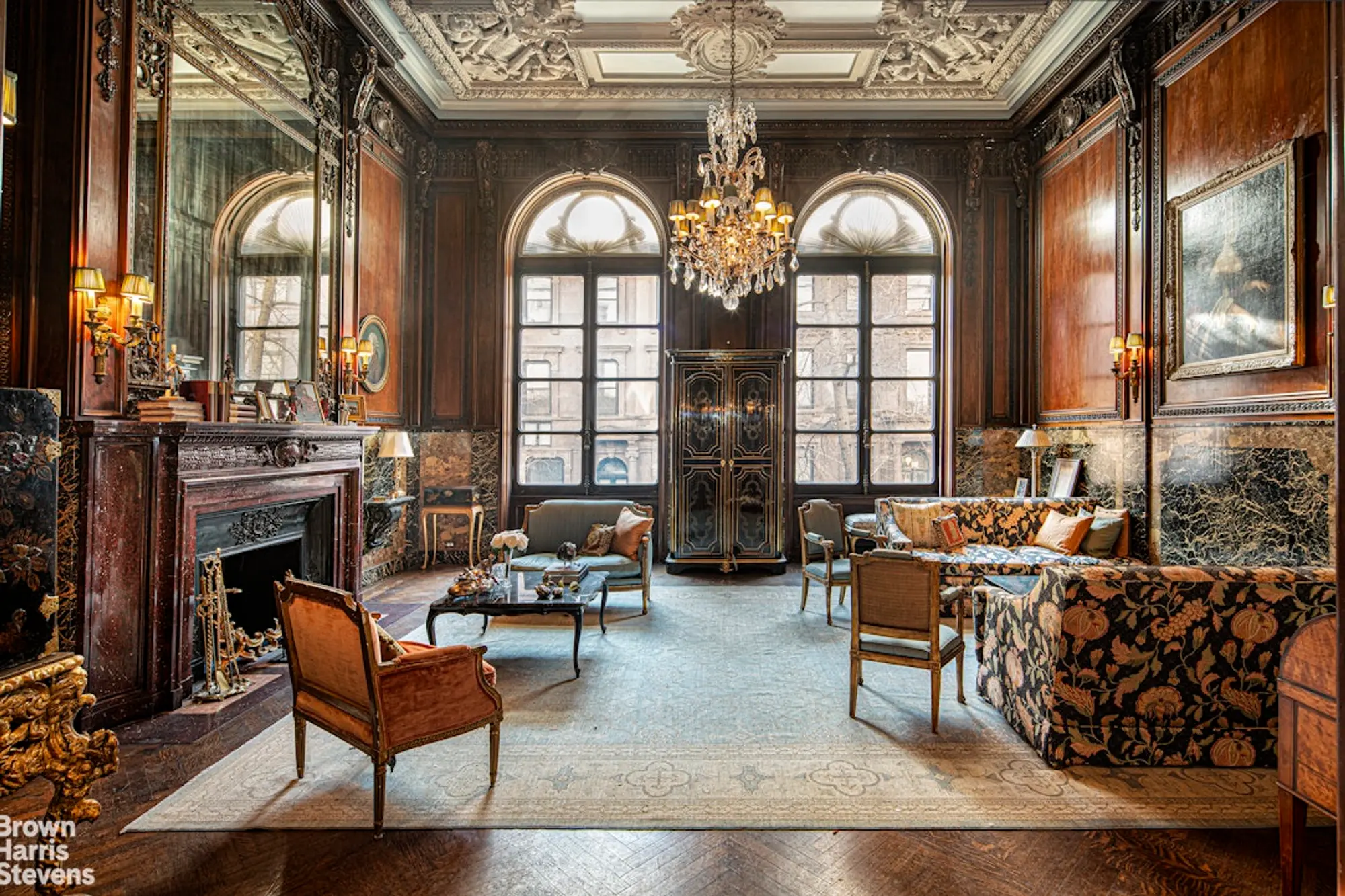
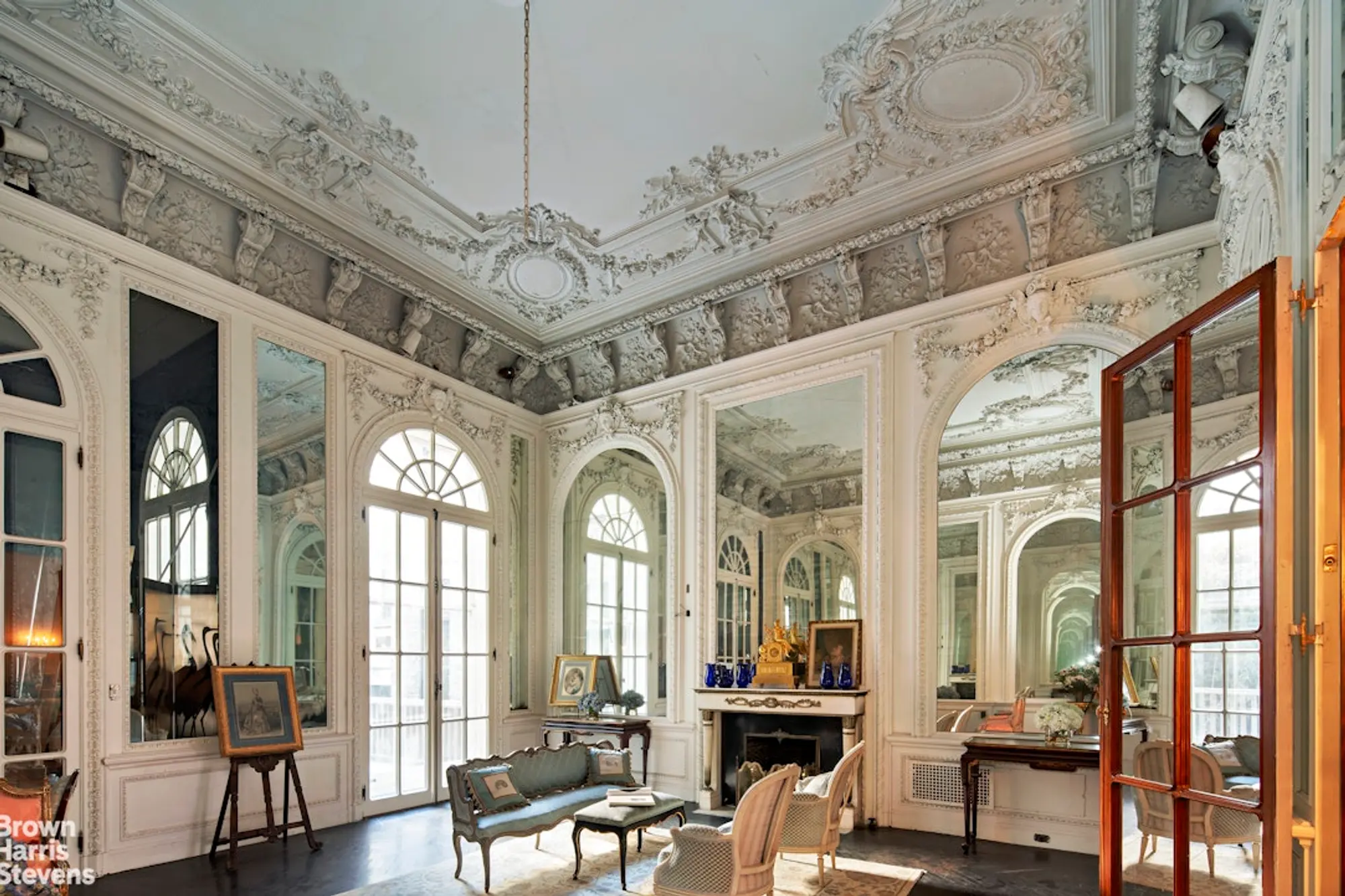
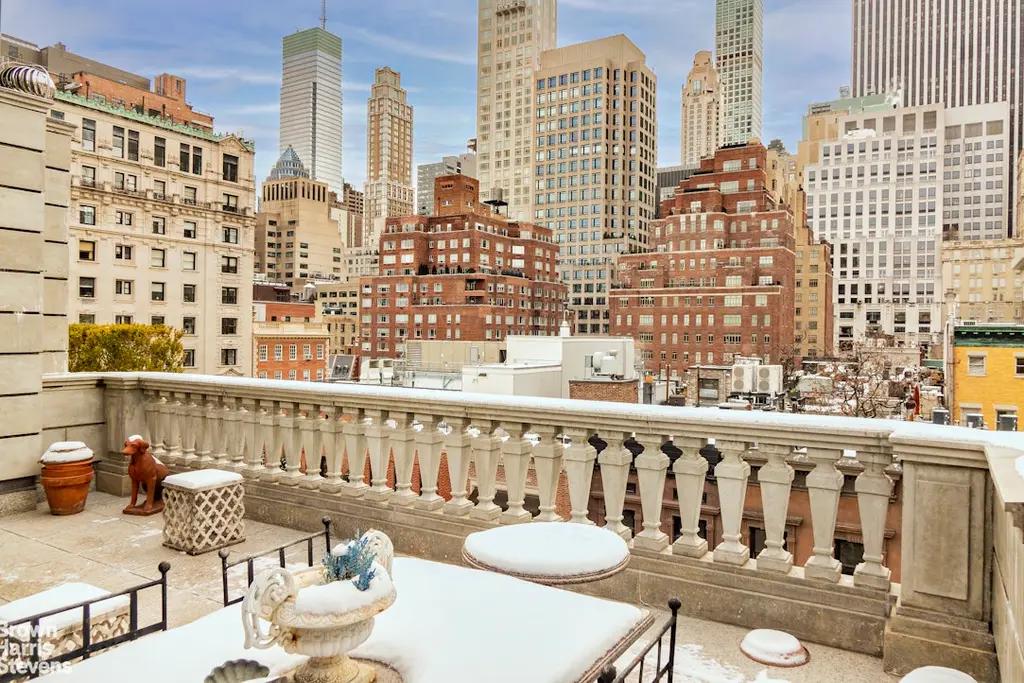
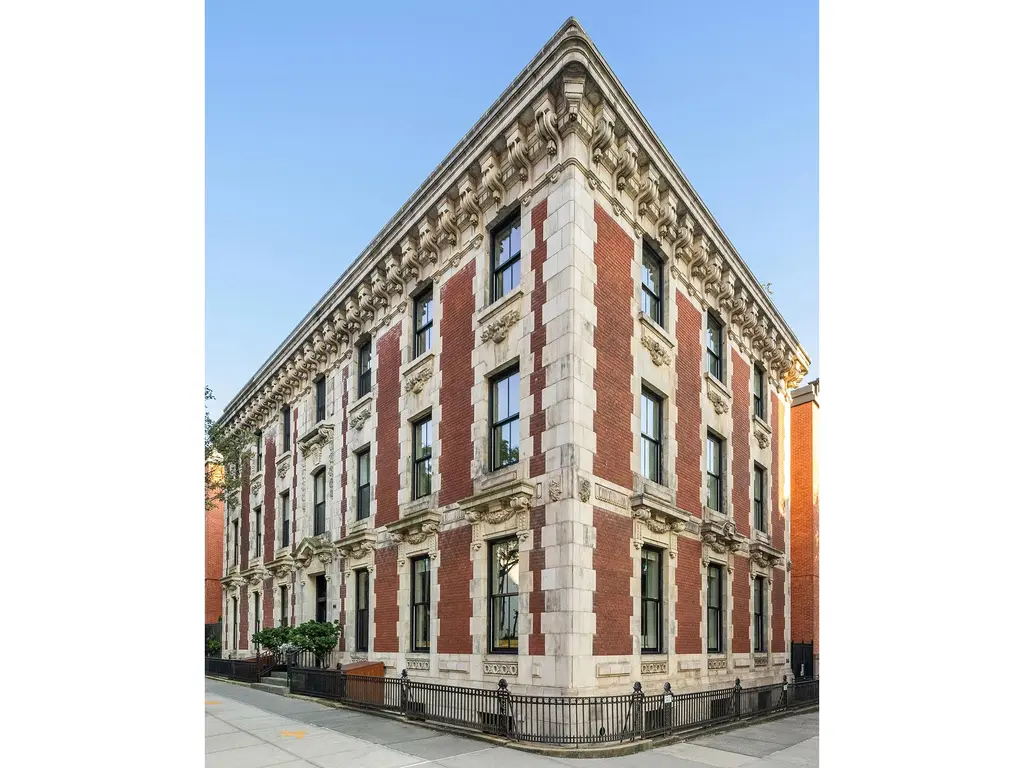
355 Henry Street, # (Douglas Elliman Real Estate)
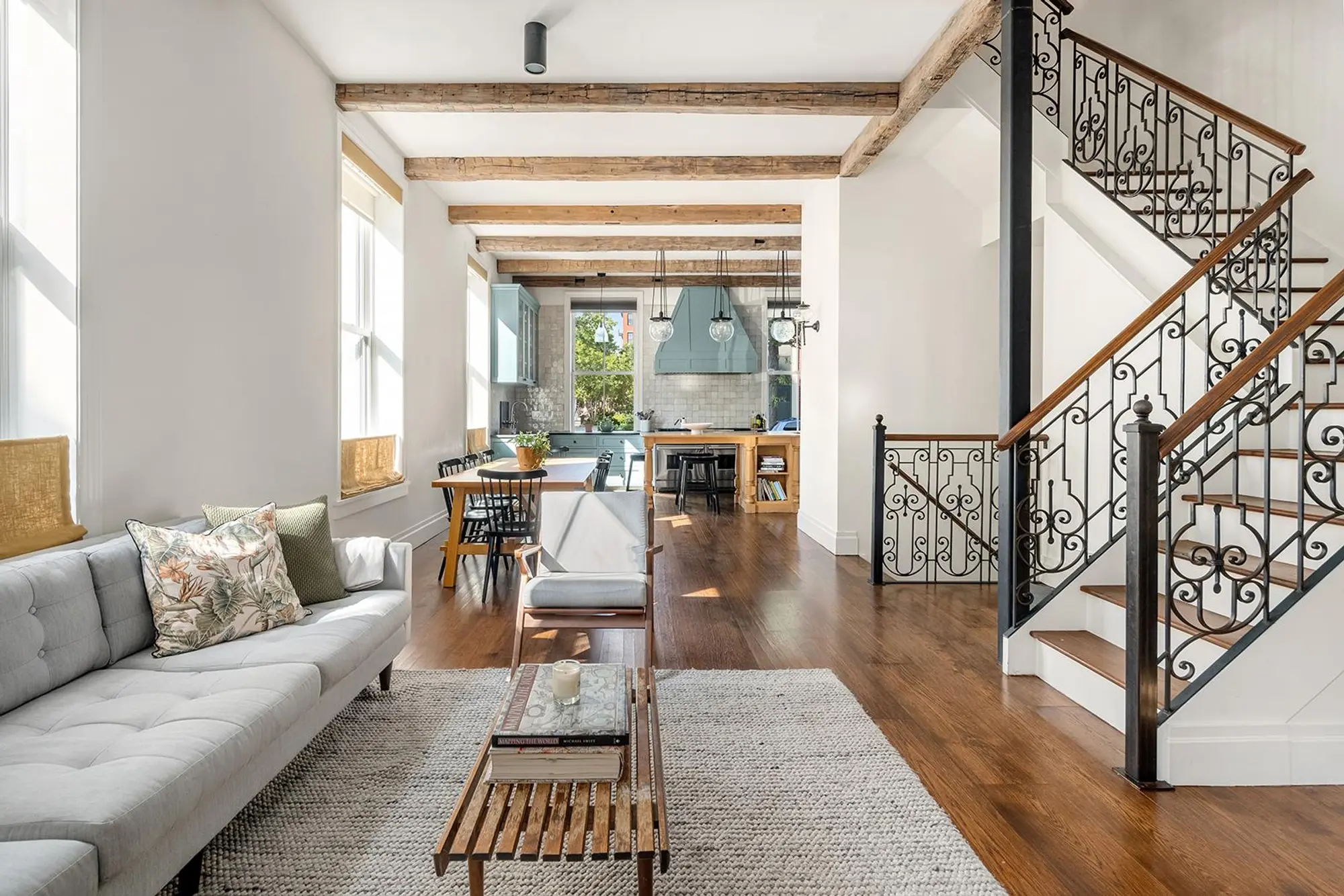
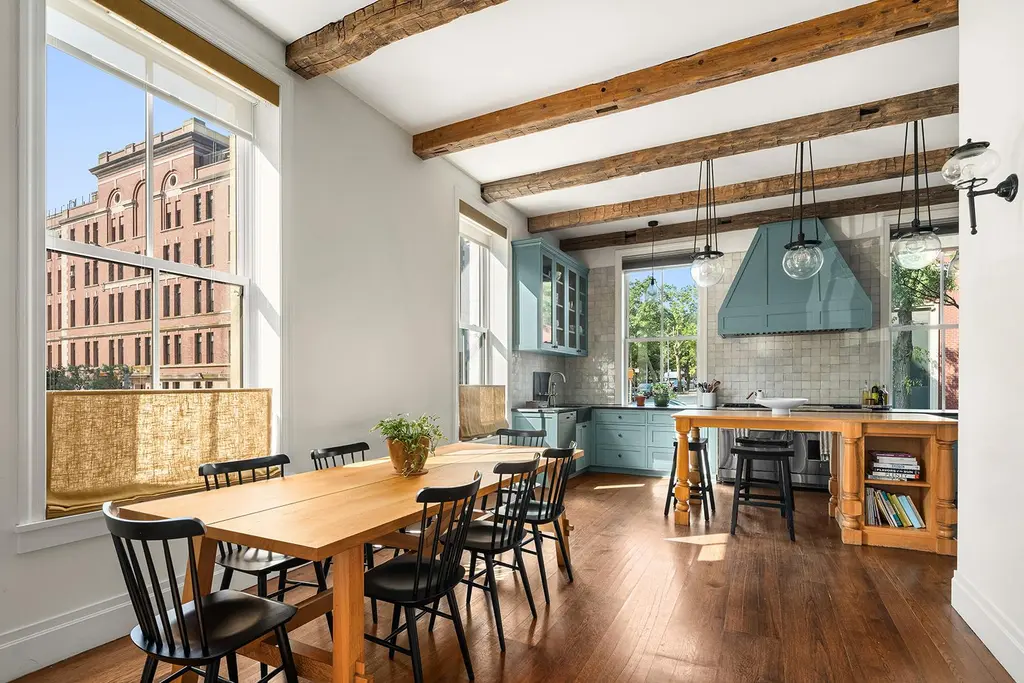
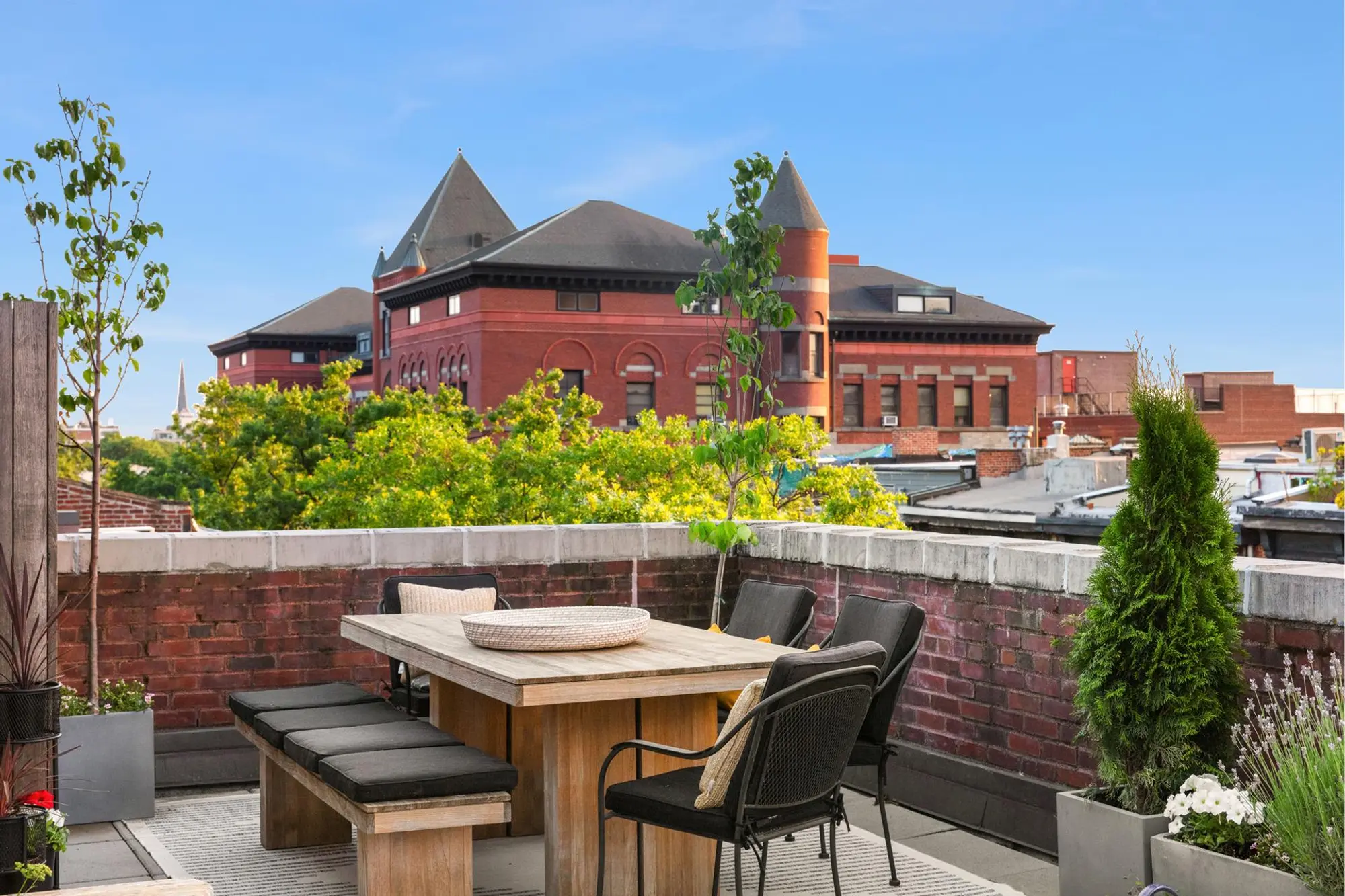
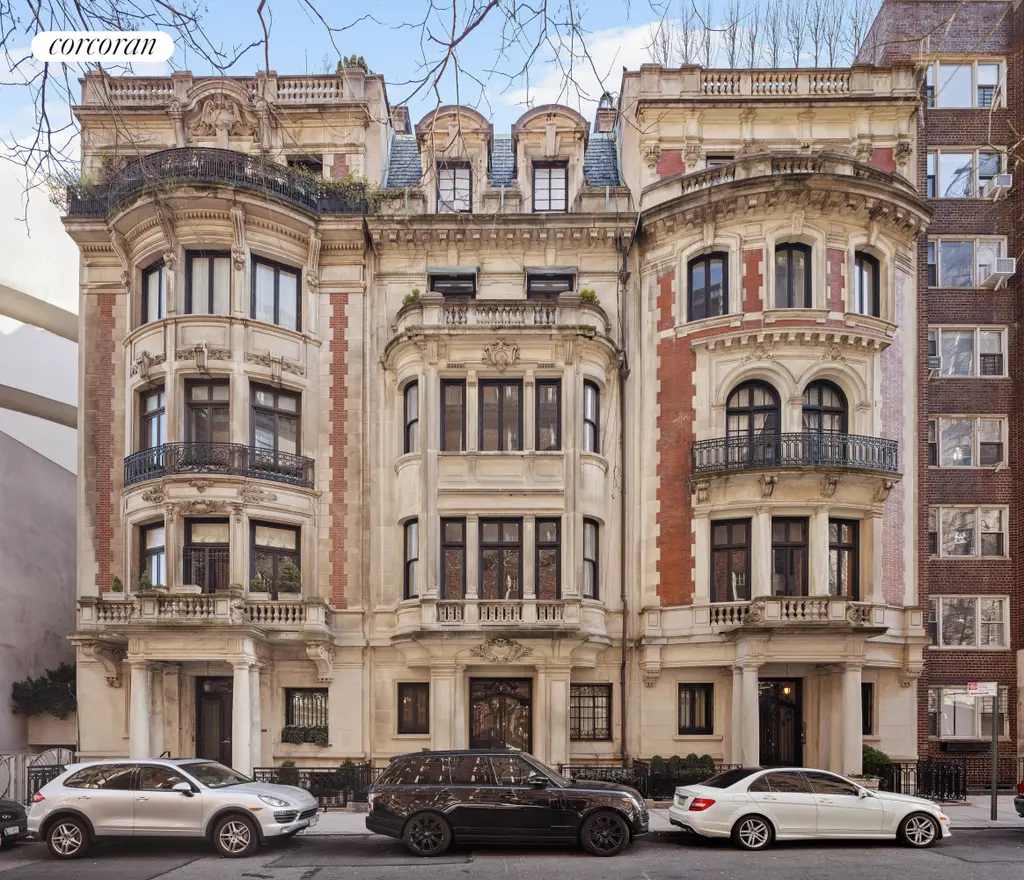
7 East 88th Street, #TH (Corcoran Group)
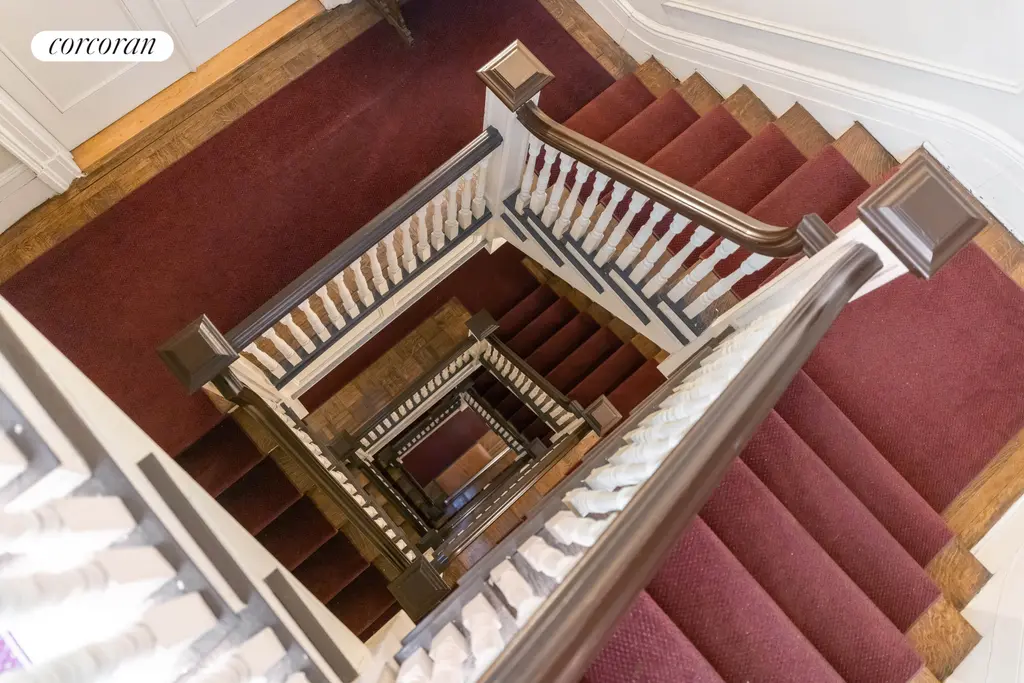
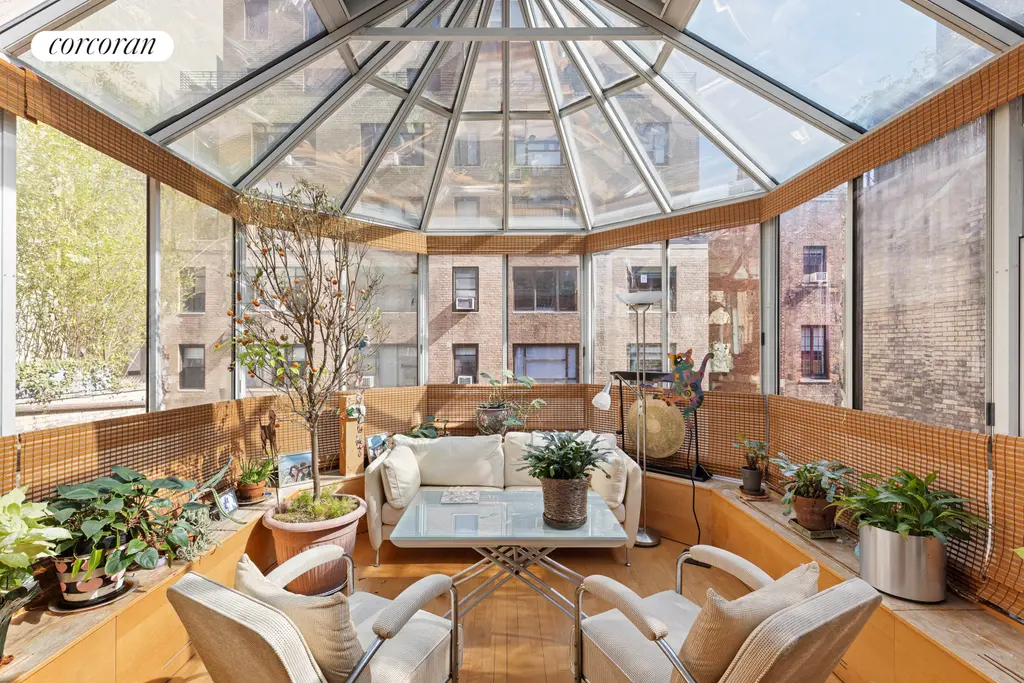
25 Riverside Drive, #TH
$55,000,000
Riverside Dr./West End Ave. | Townhouse | 6+ Bedrooms, 6+ Baths | 12,000 ft2
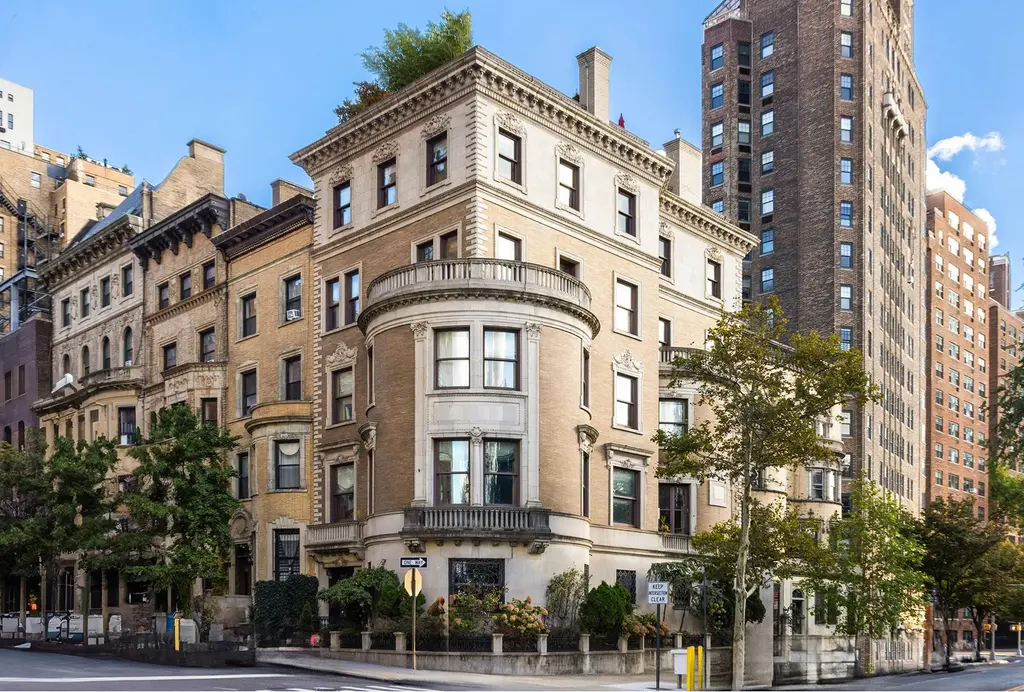
25 Riverside Drive, # (Douglas Elliman Real Estate)
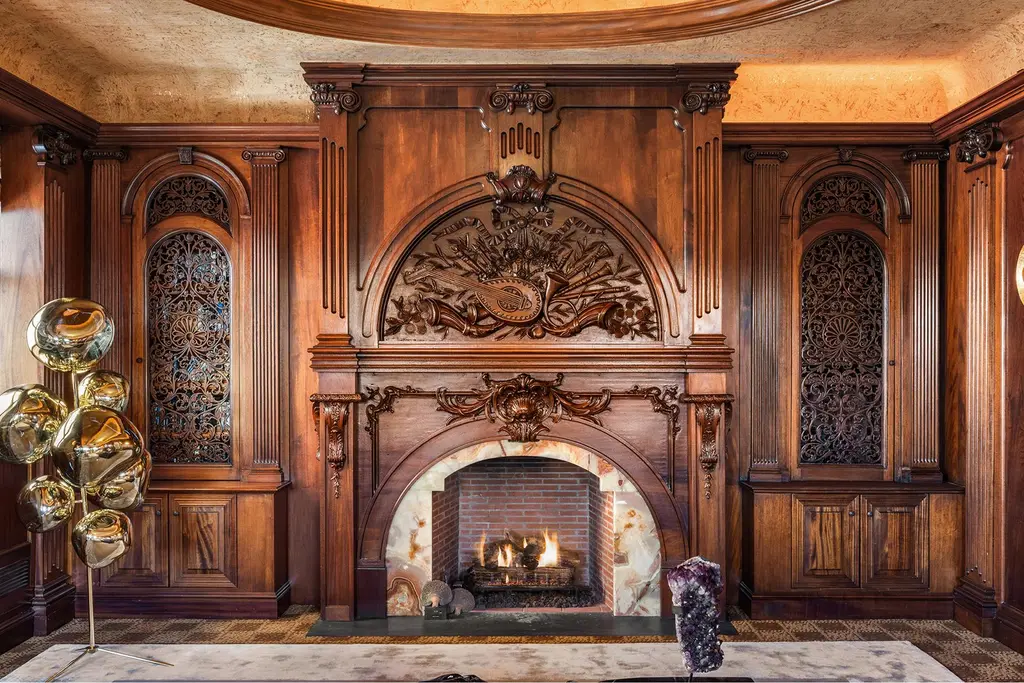
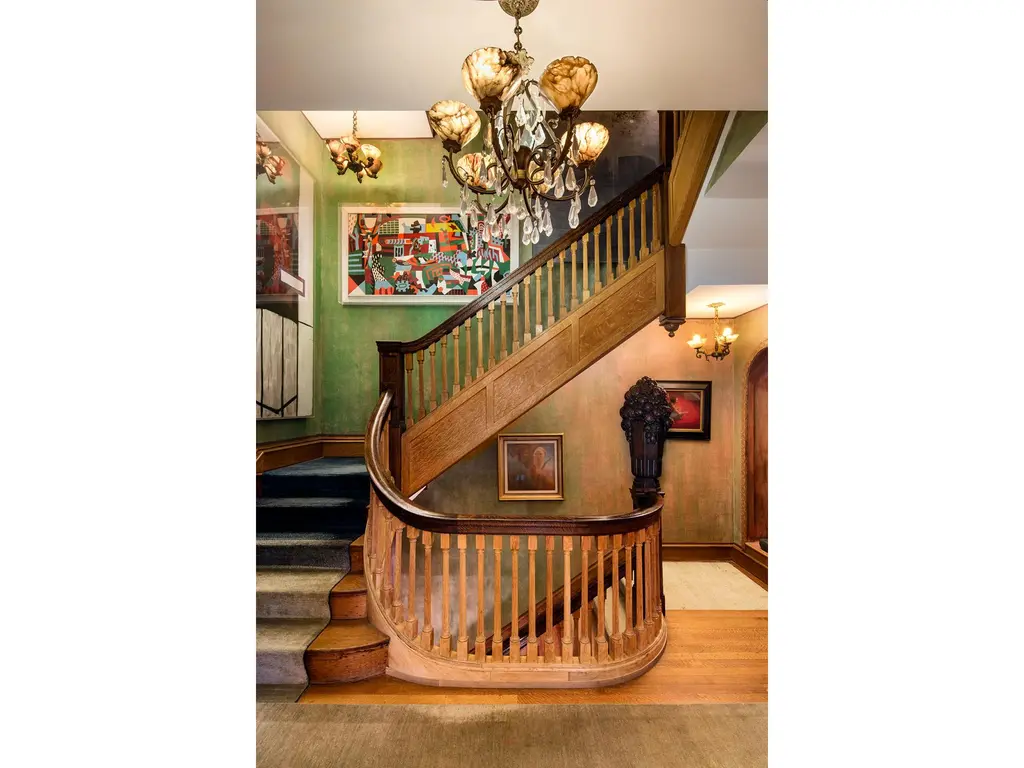
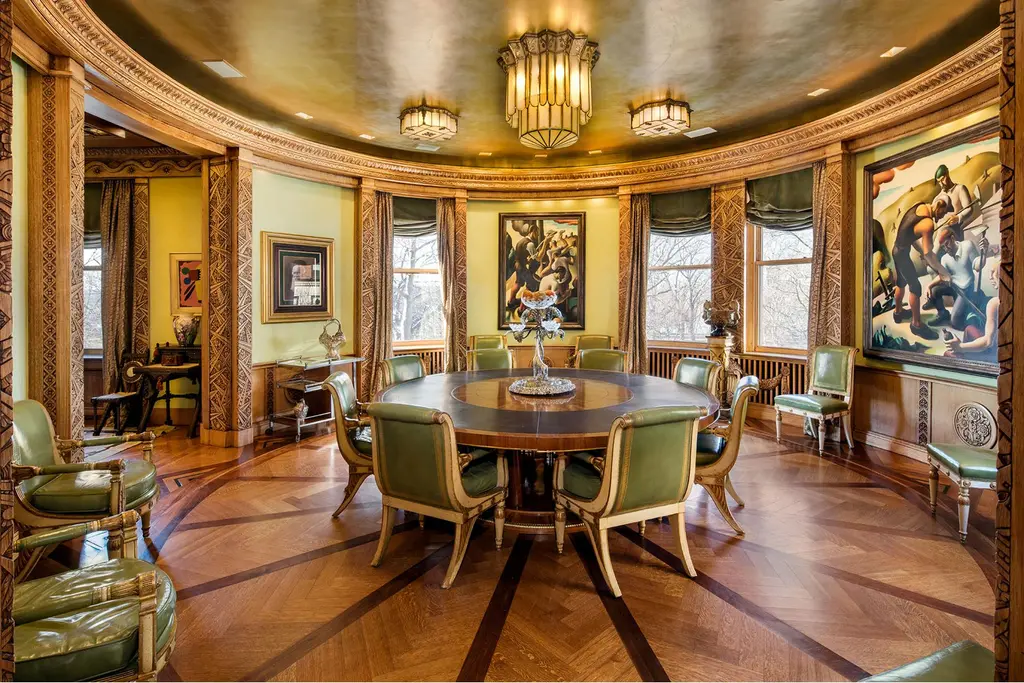
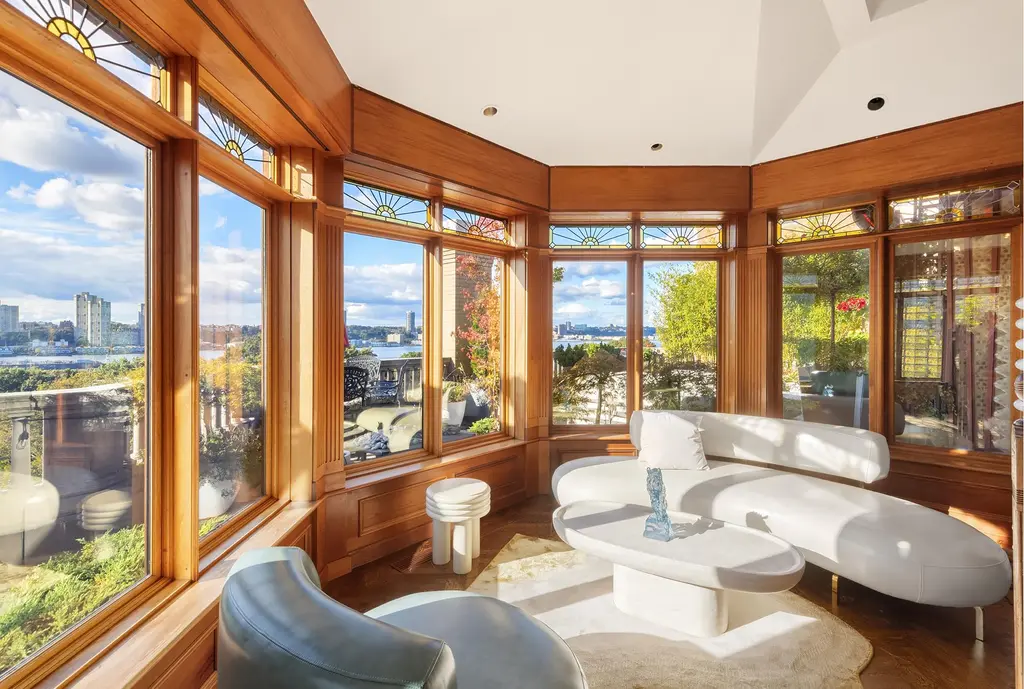
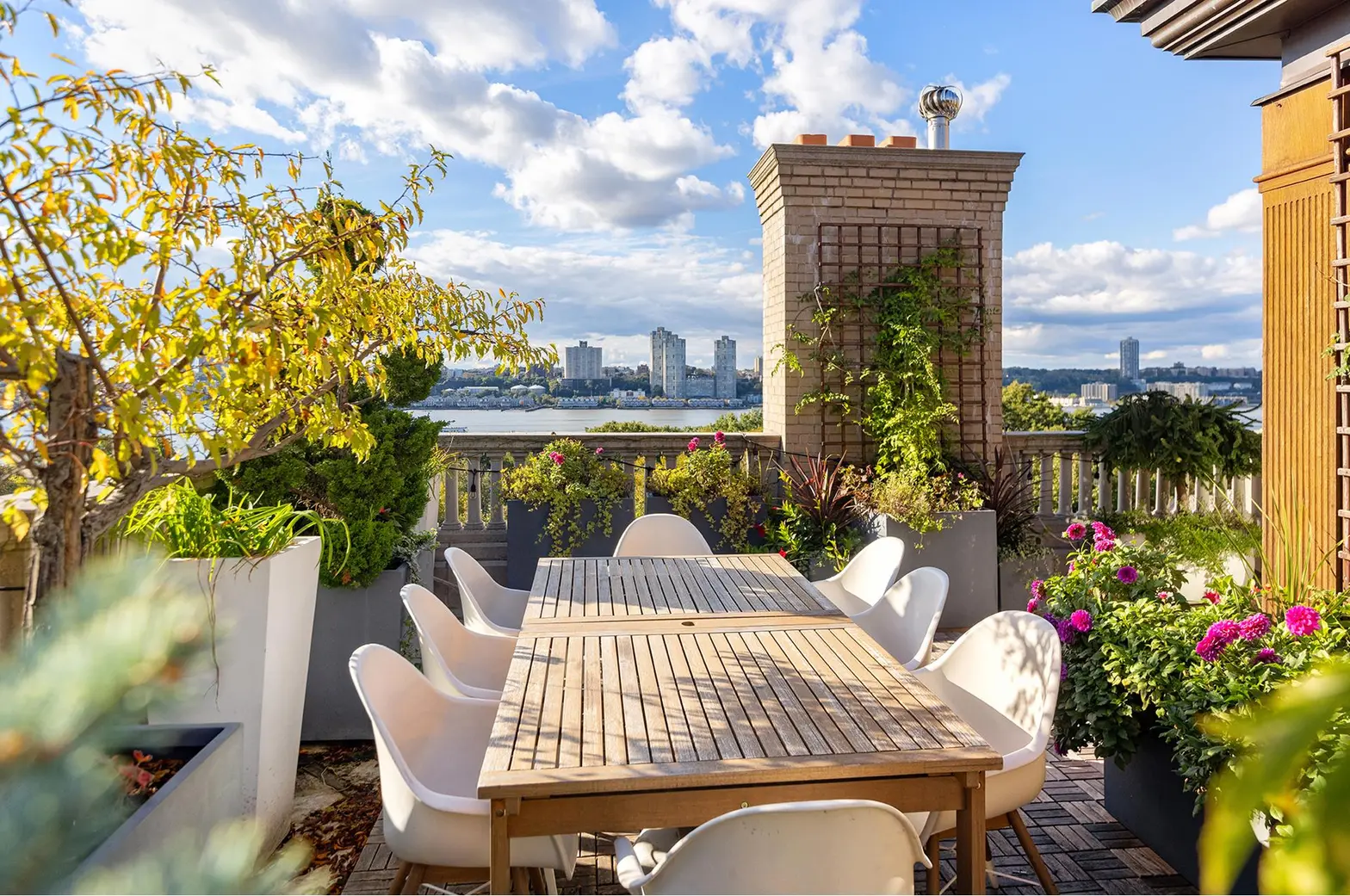
Colonial Revival and Neo-Georgian styles
From the 1890s to the 1920s, architects in New York City began reviving early American design traditions, blending historic elegance with contemporary craftsmanship. Sometimes referred to as Colonial Revival, this style reintroduced stately, symmetrical brick facades reminiscent of Federal and Georgian-era rowhouses. However, rather than strict reproductions, these homes often incorporated details from other architectural influences—such as grand doorways framed by classical columns, ornate ironwork, and refined stone lintels
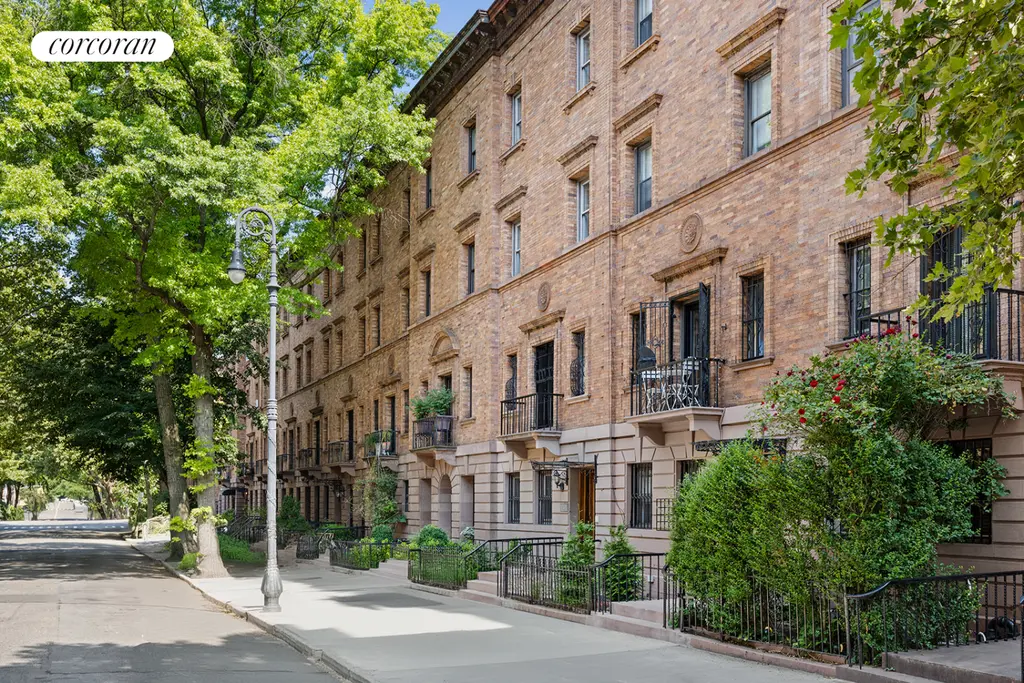
231 West 139th Street, # (Corcoran Group)
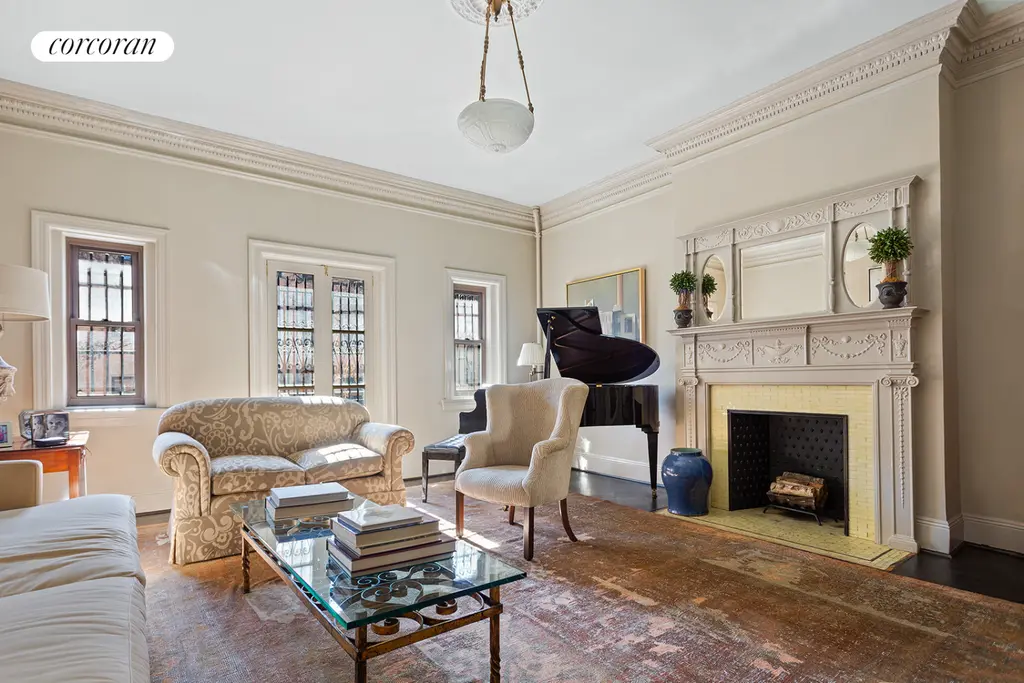
16 East 94th Street, #TH
$15,000,000 (-4.8%)
Carnegie Hill | Townhouse | 5 Bedrooms, 6+ Baths | 6,800 ft2
16 East 94th Street, # (Kleier Residential Inc)
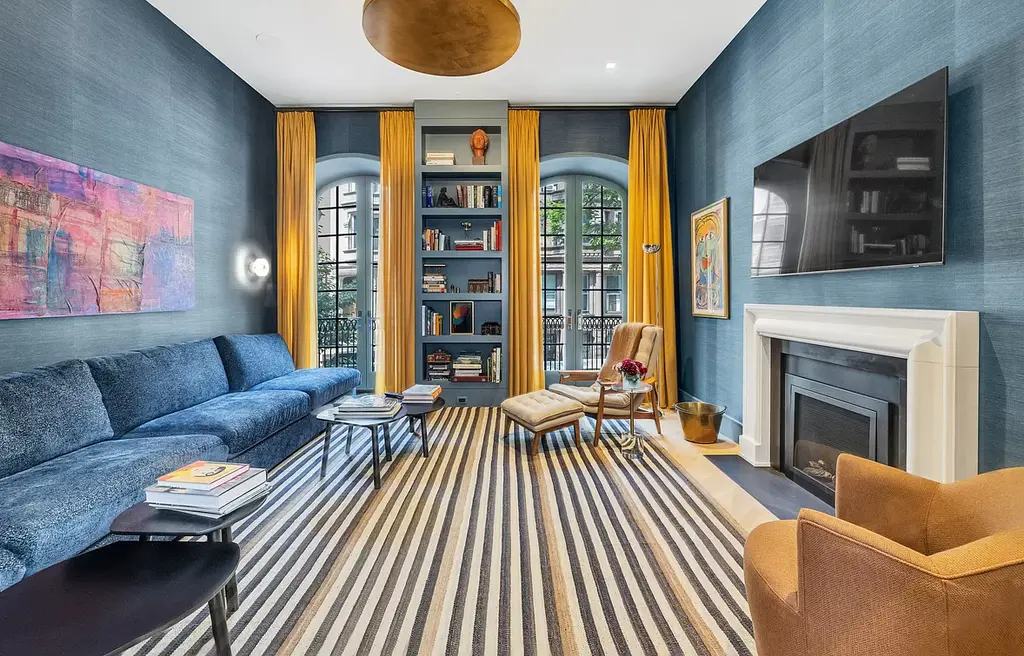
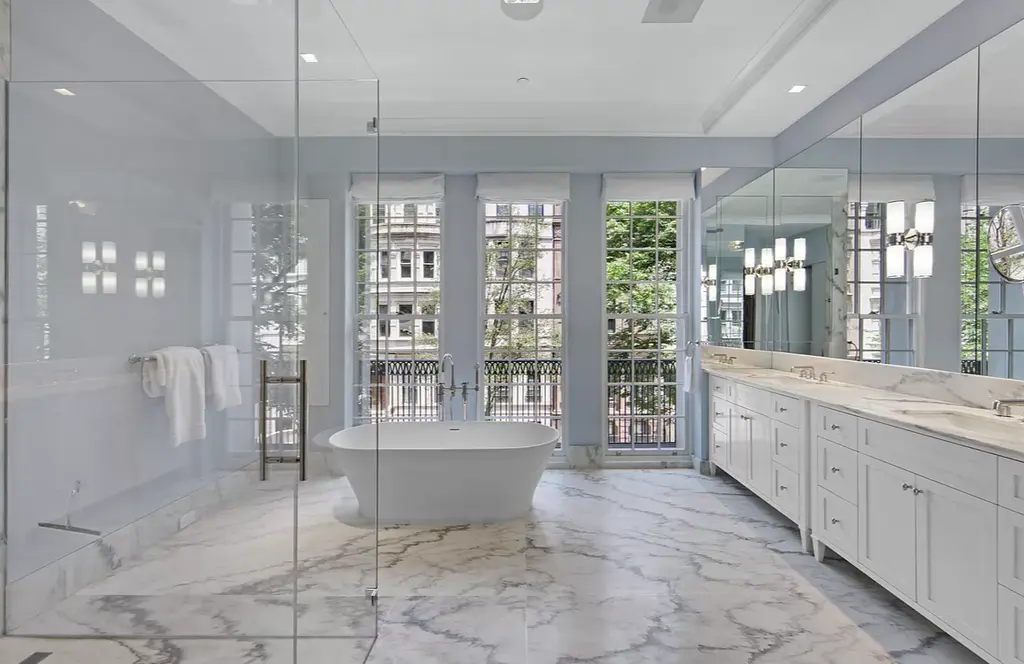
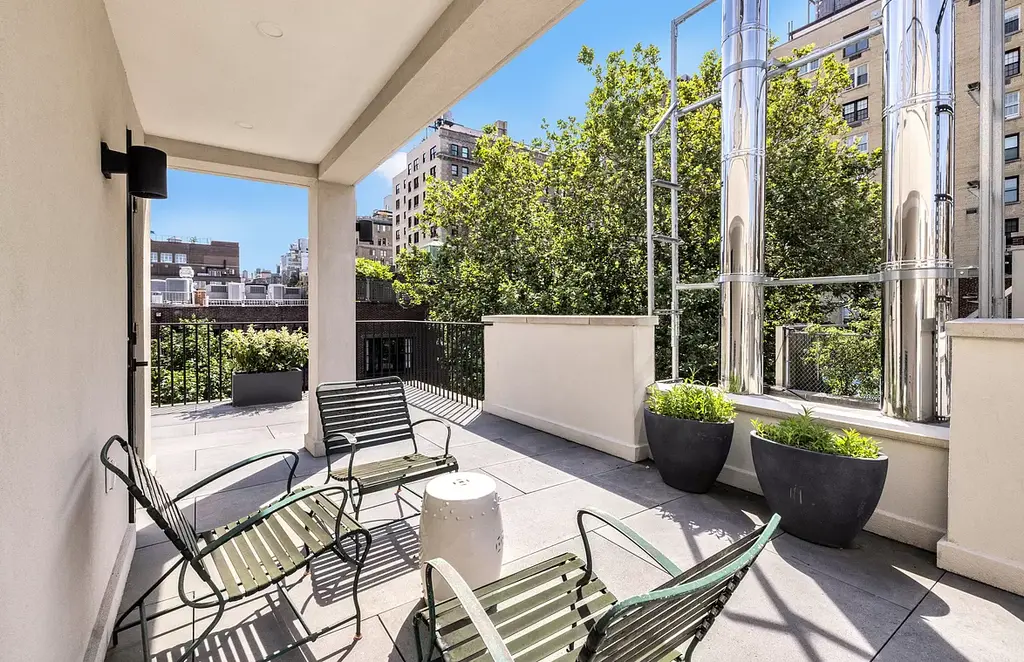
6 East 69th Street, #TH
$24,950,000
Park/Fifth Ave. to 79th St. | Townhouse | 6+ Bedrooms, 5 Baths | 12,000 ft2
6 East 69th Street, #Building (Nest Seekers LLC)
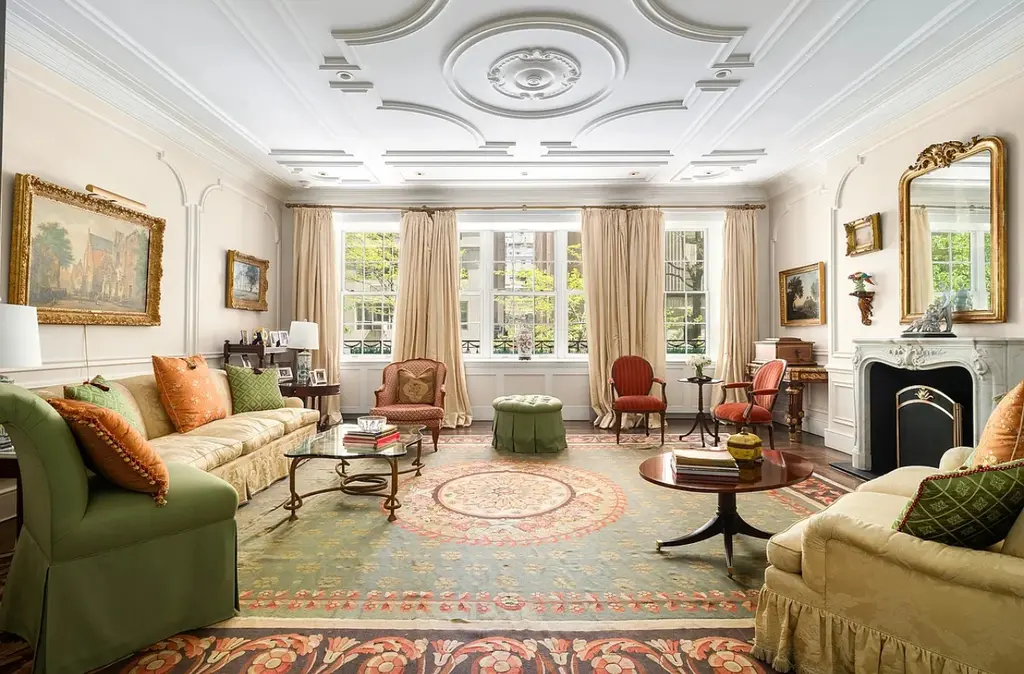
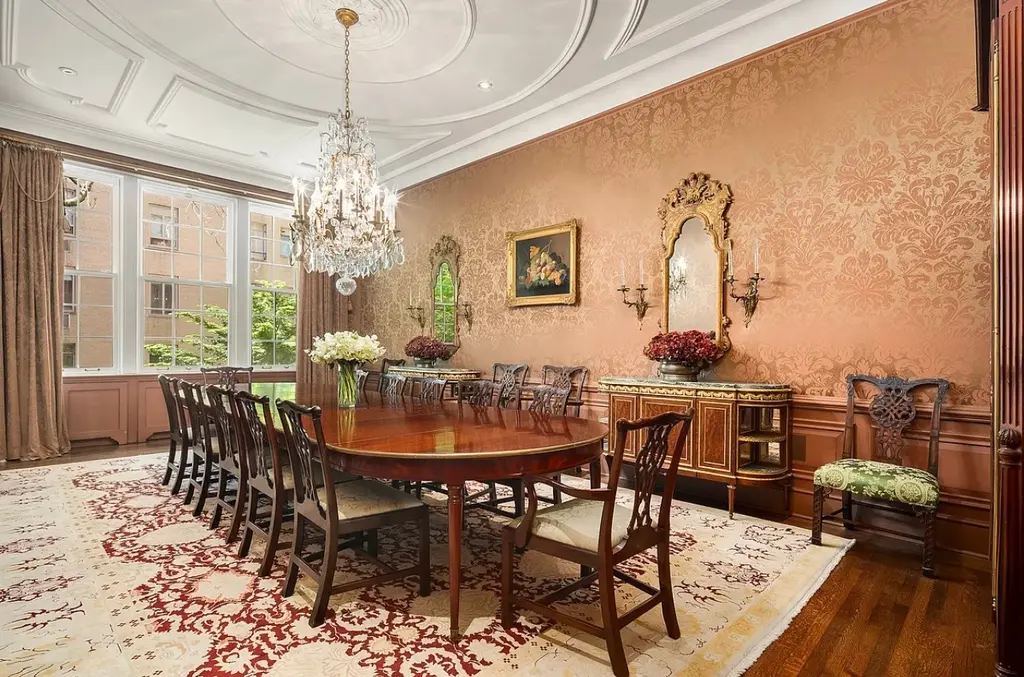
Would you like to tour any of these properties?
Just complete the info below.
Or call us at (212) 755-5544
Would you like to tour any of these properties?

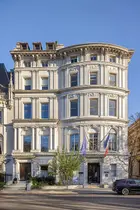


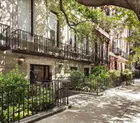

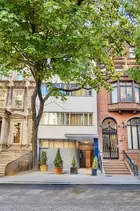
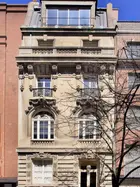

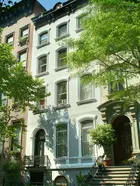
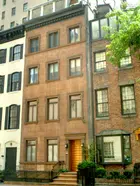
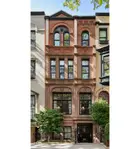

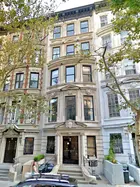

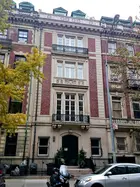

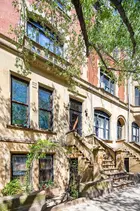
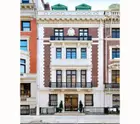
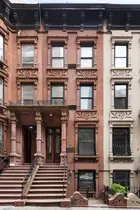
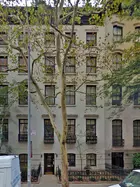
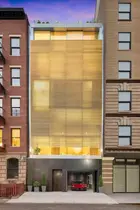
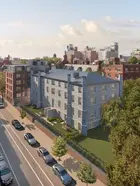
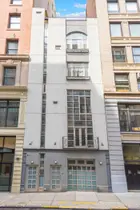


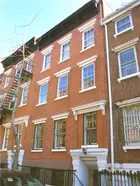


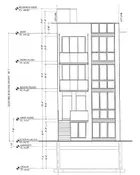
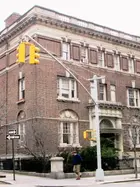


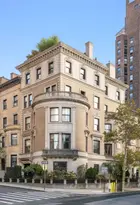
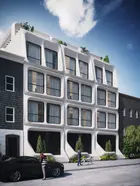


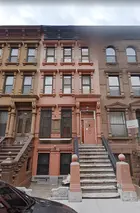

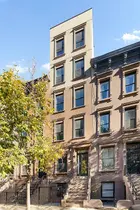
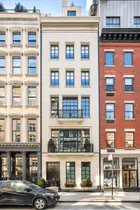
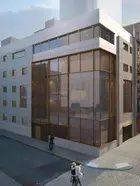
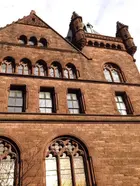
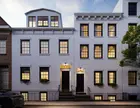
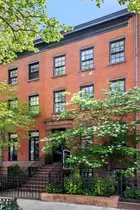
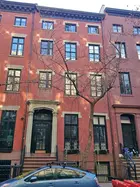
 6sqft delivers the latest on real estate, architecture, and design, straight from New York City.
6sqft delivers the latest on real estate, architecture, and design, straight from New York City.
